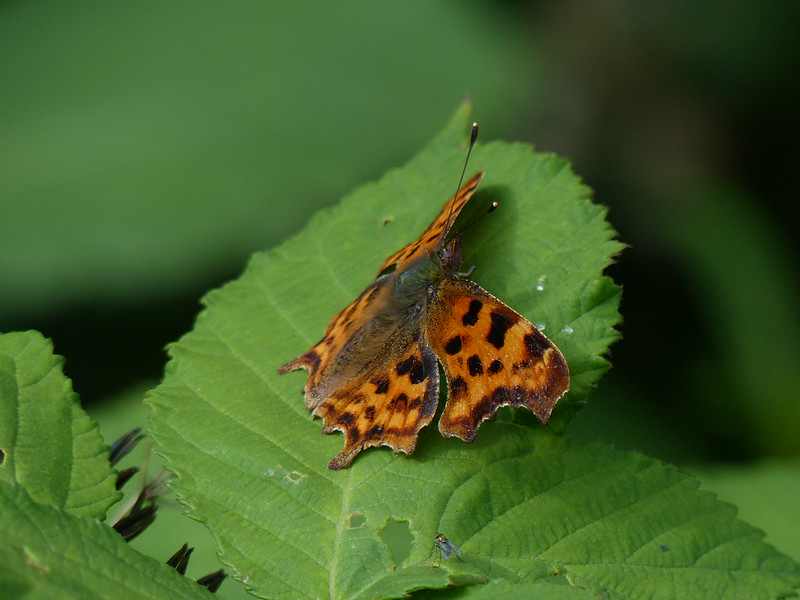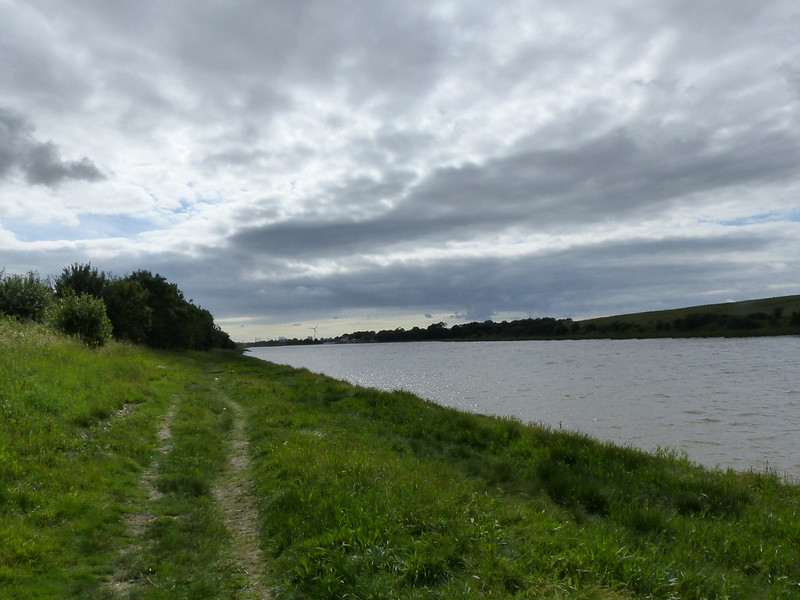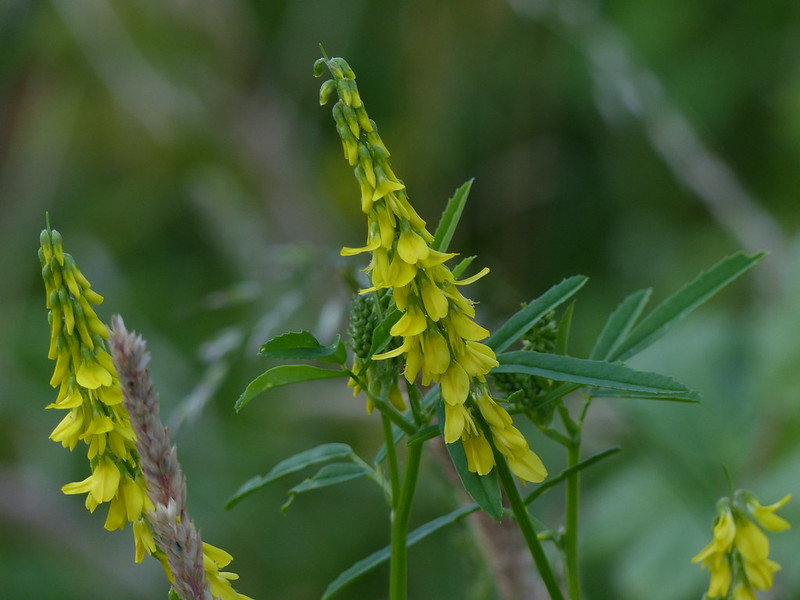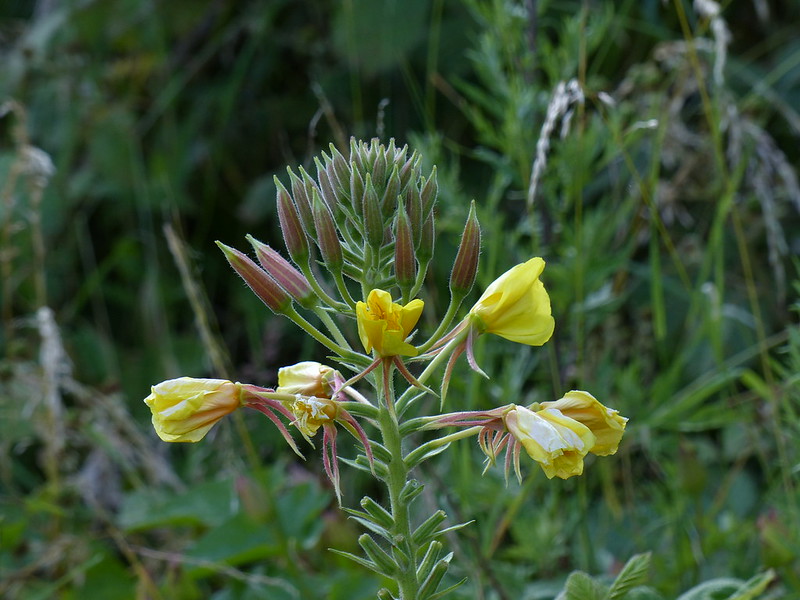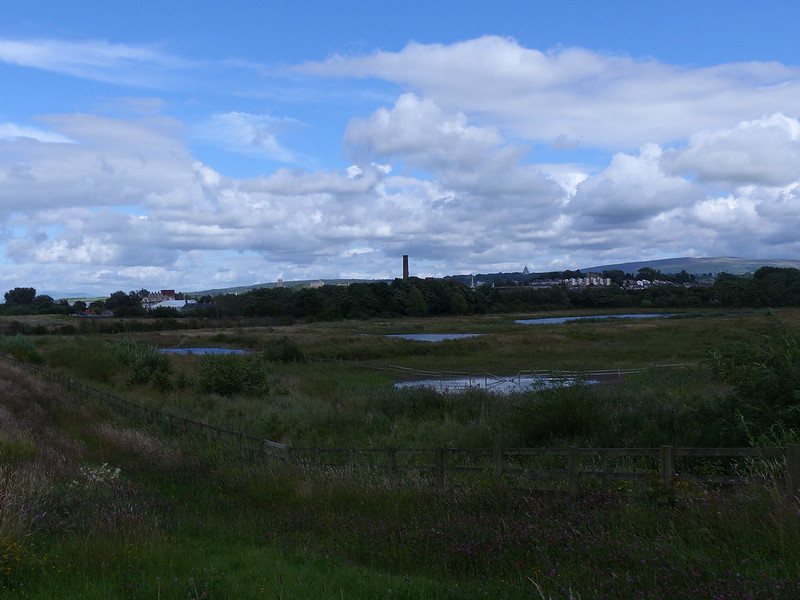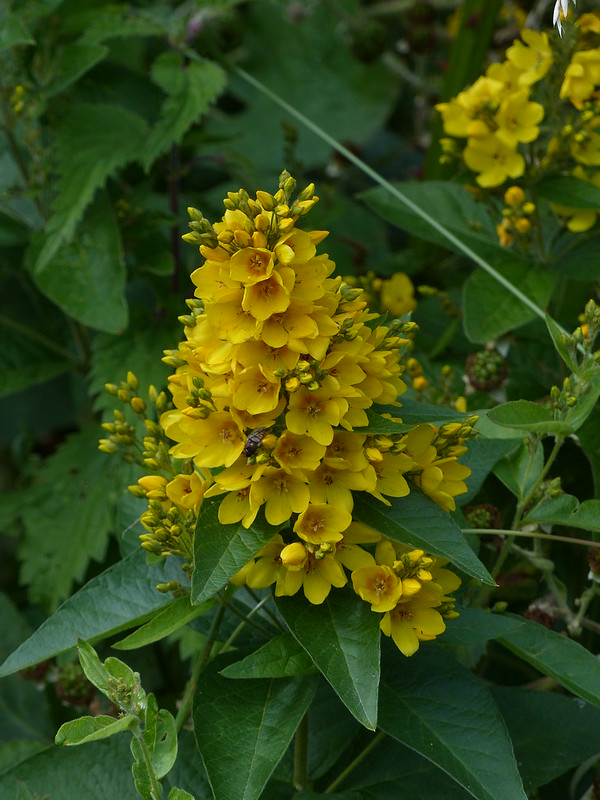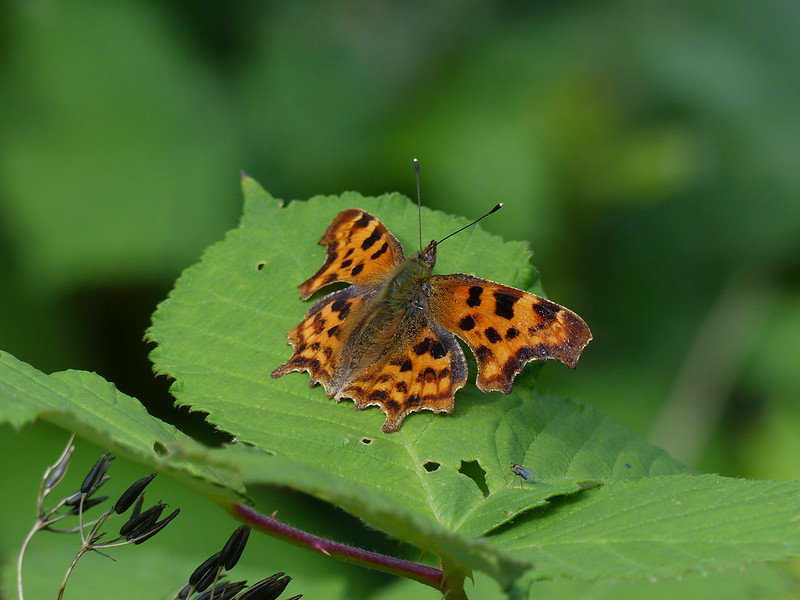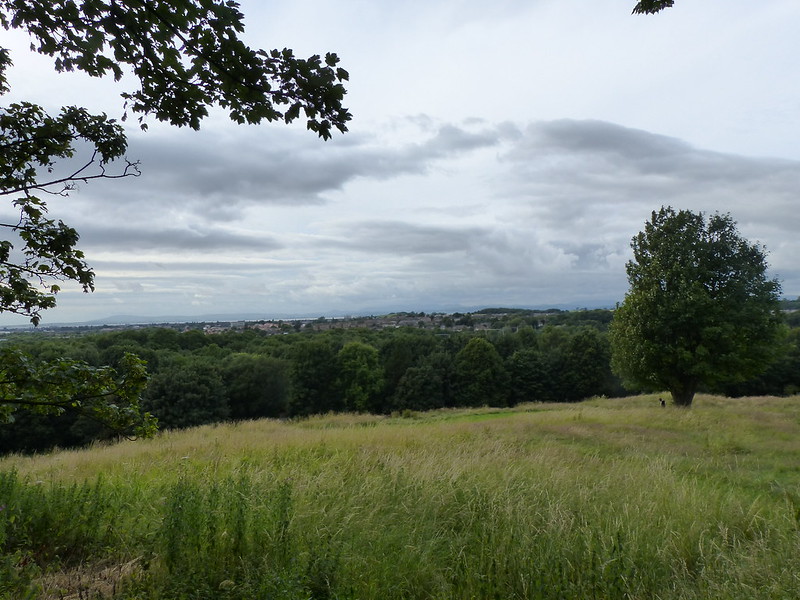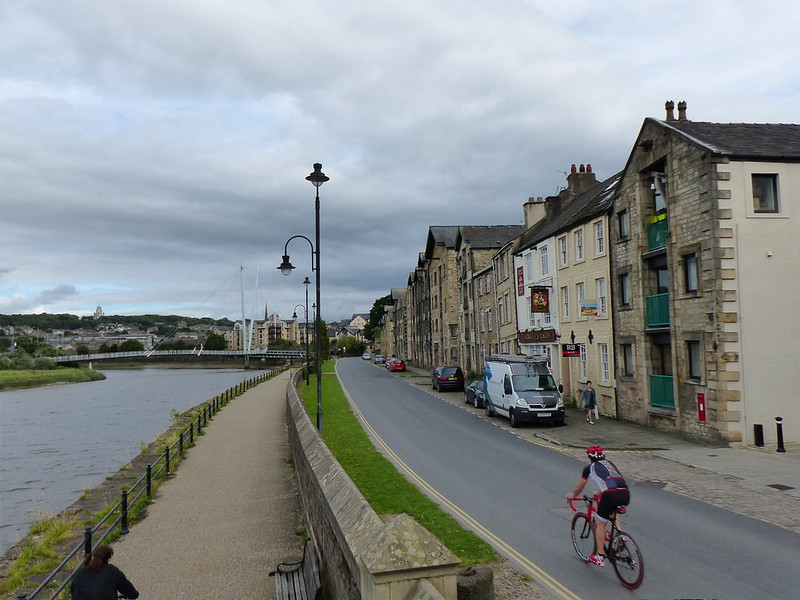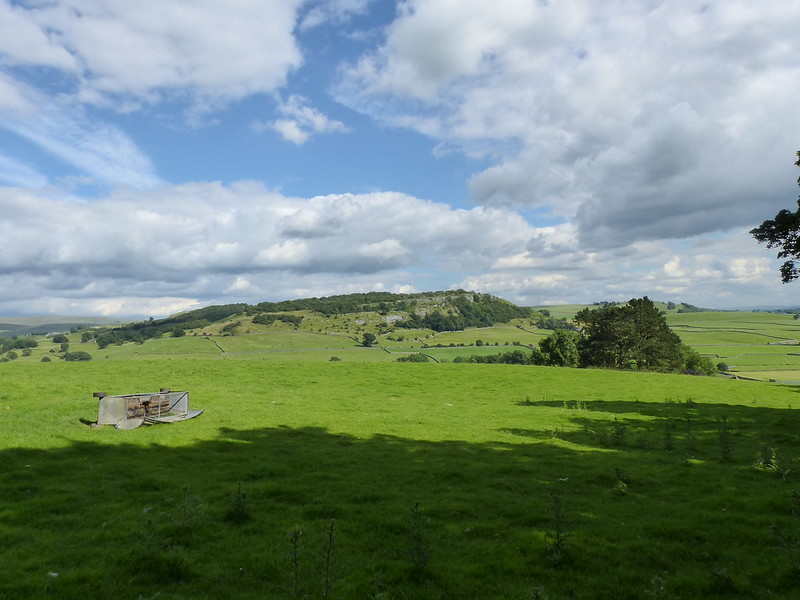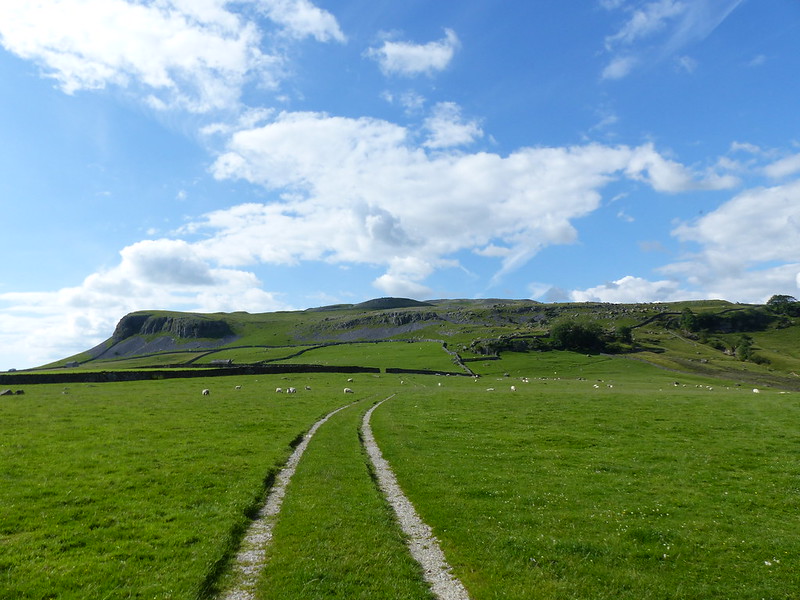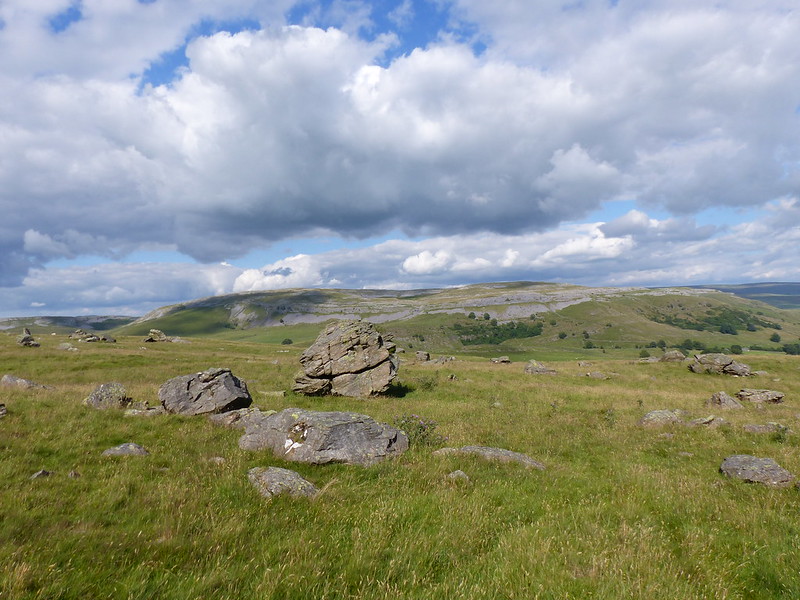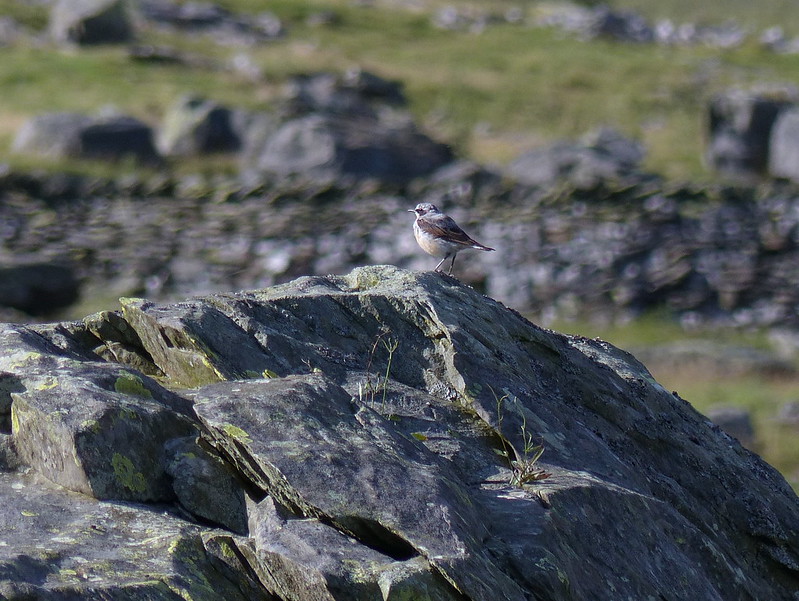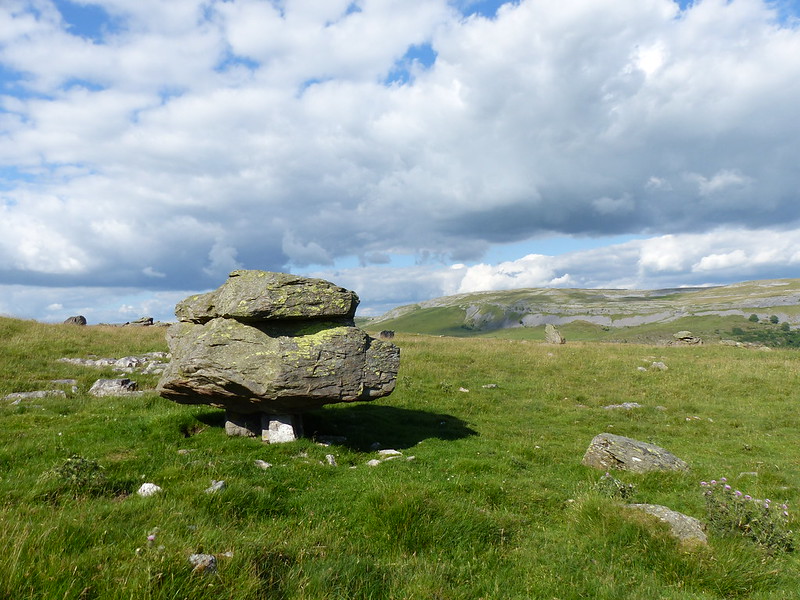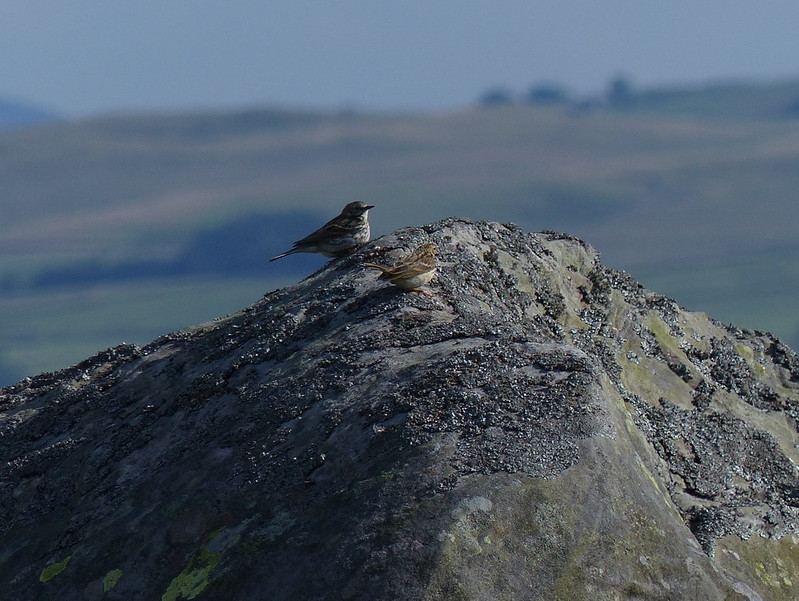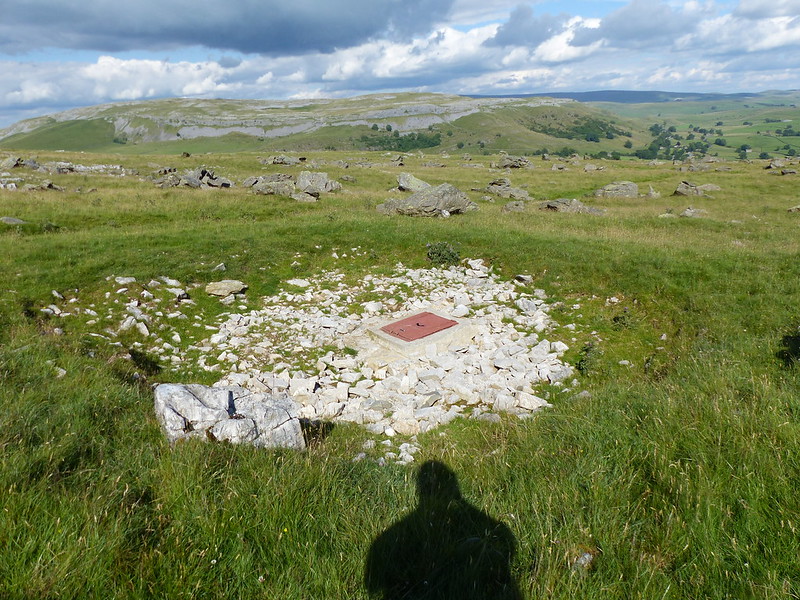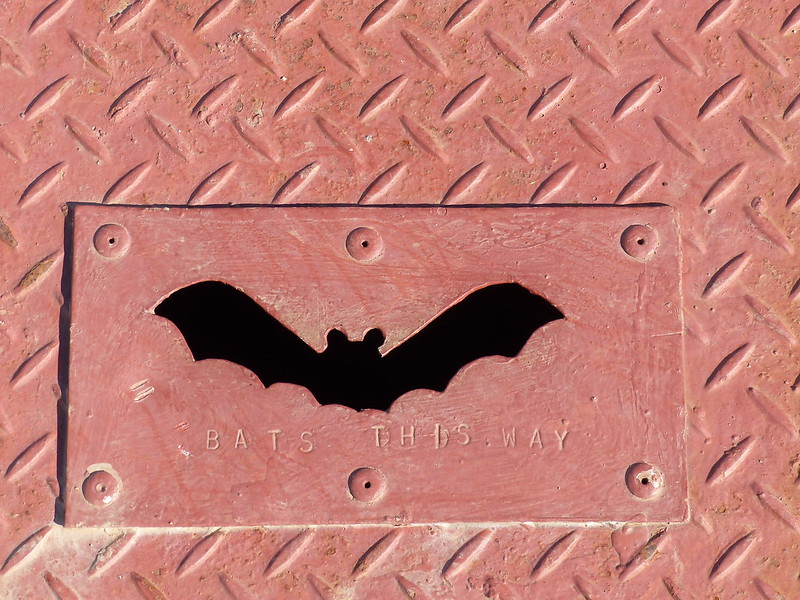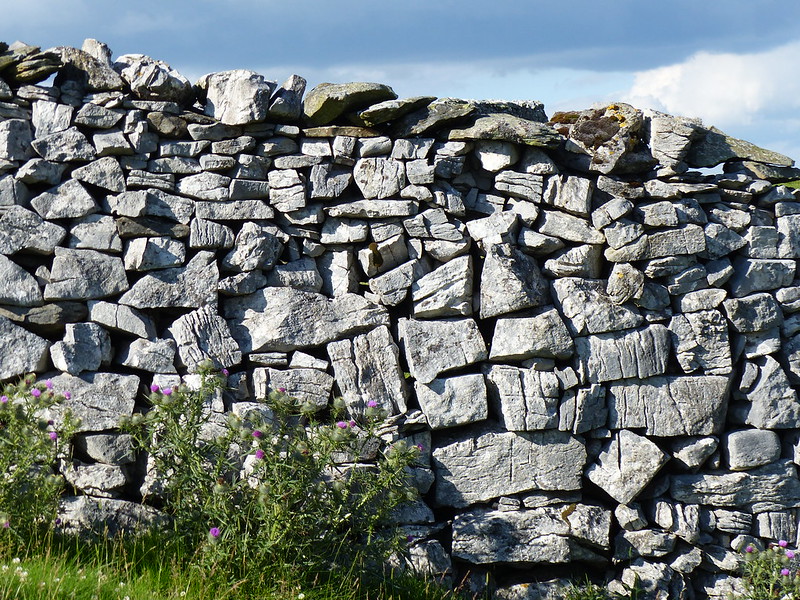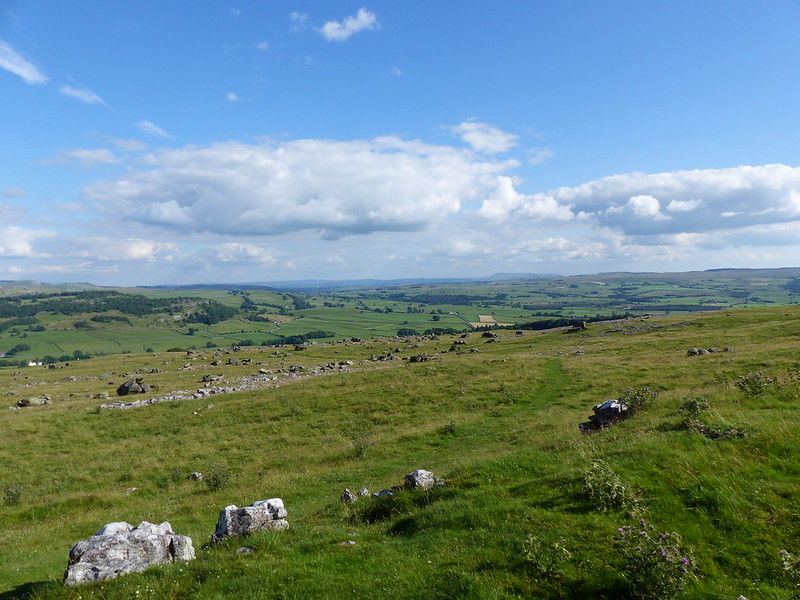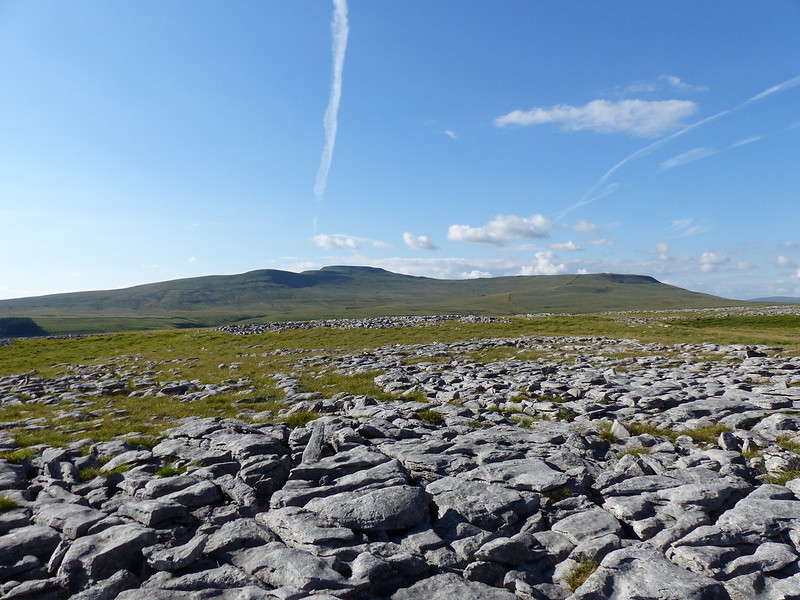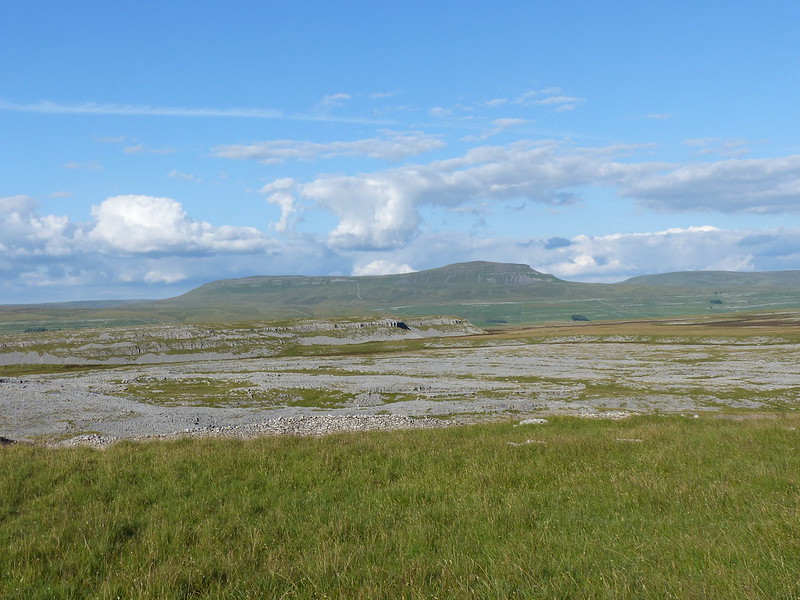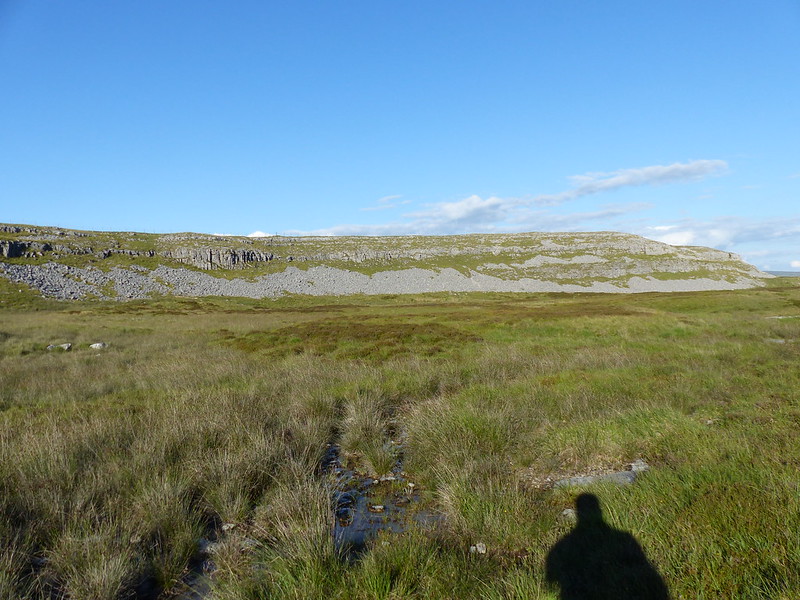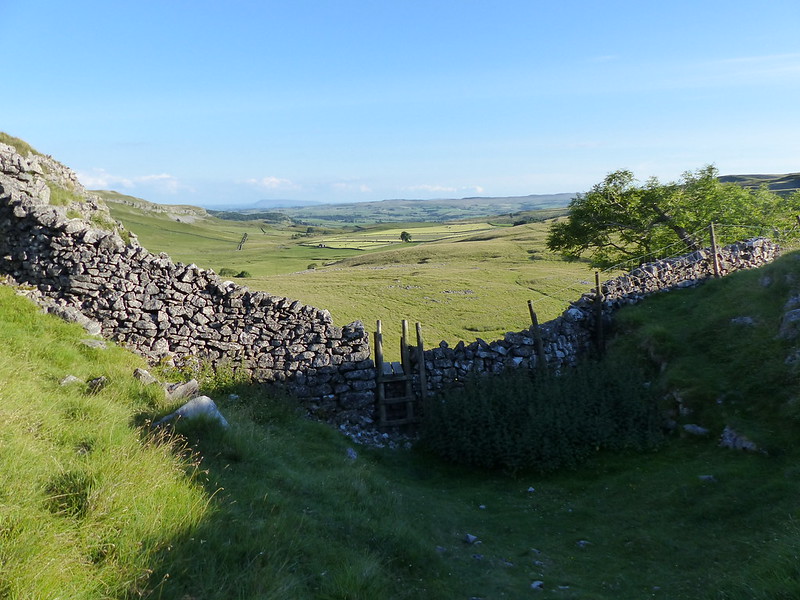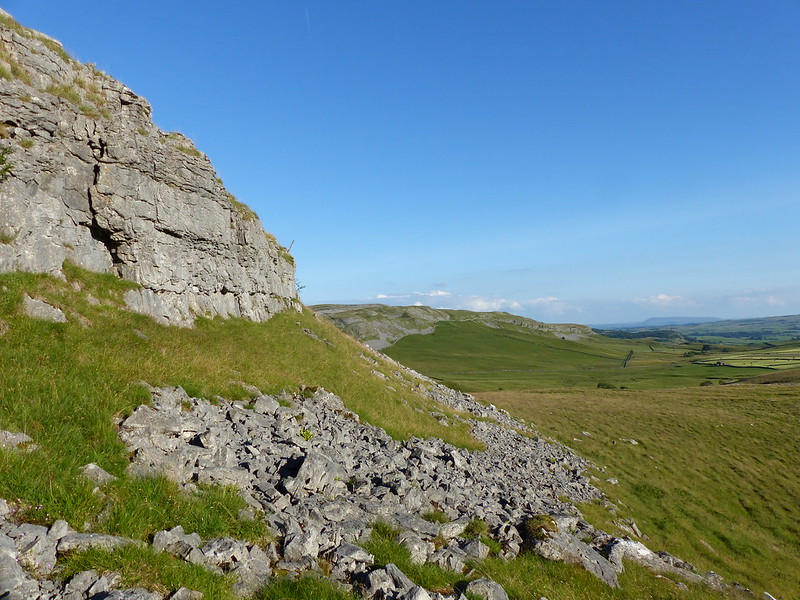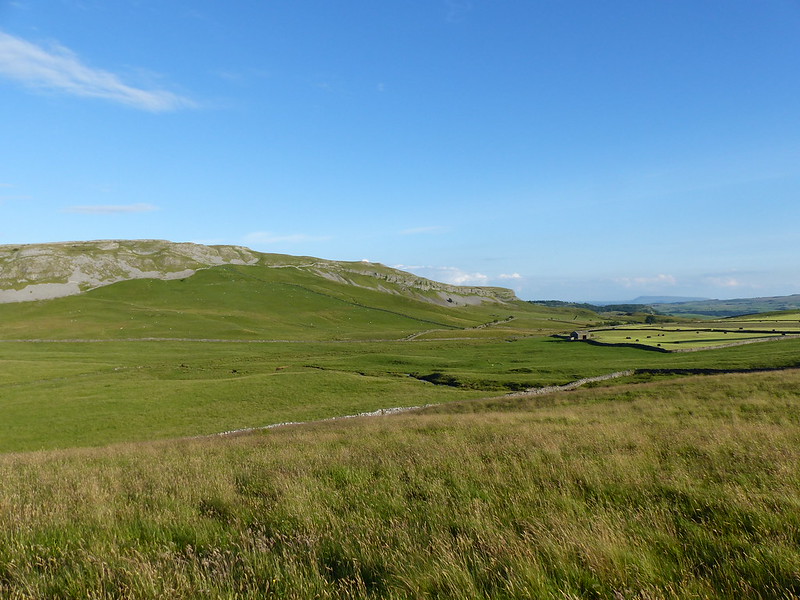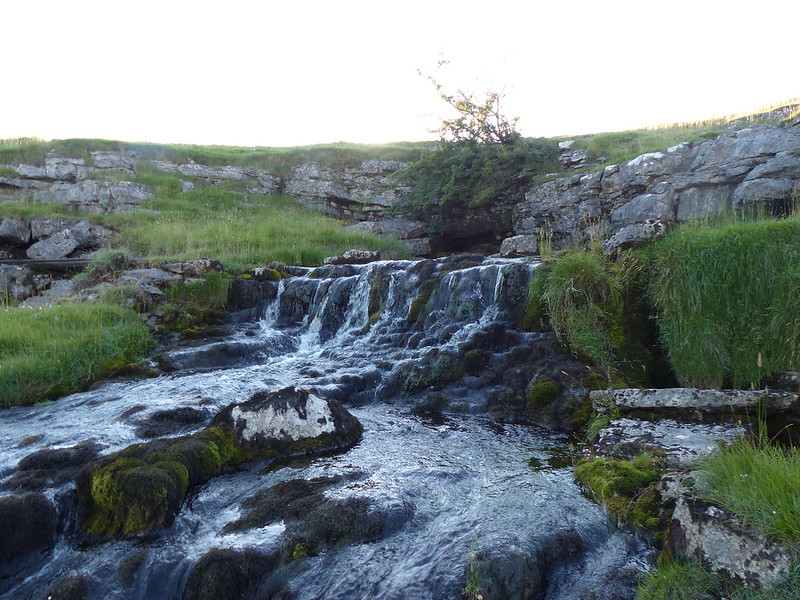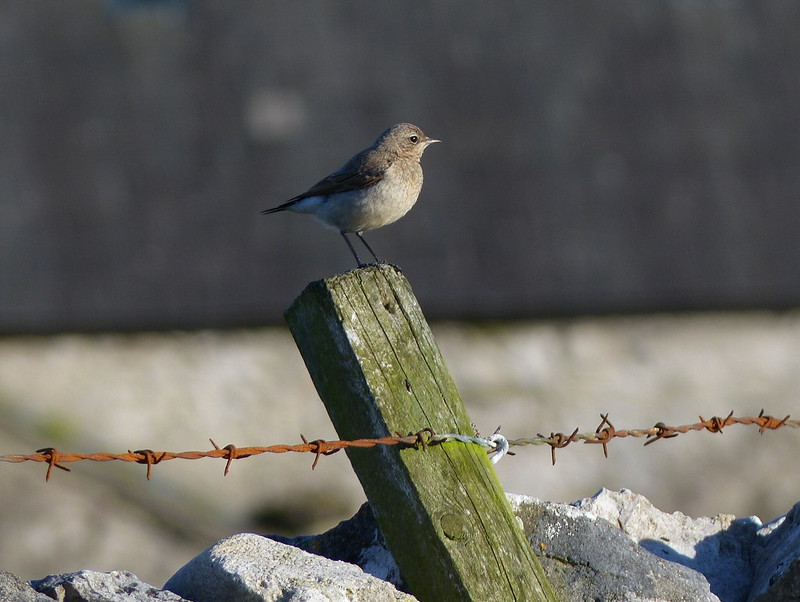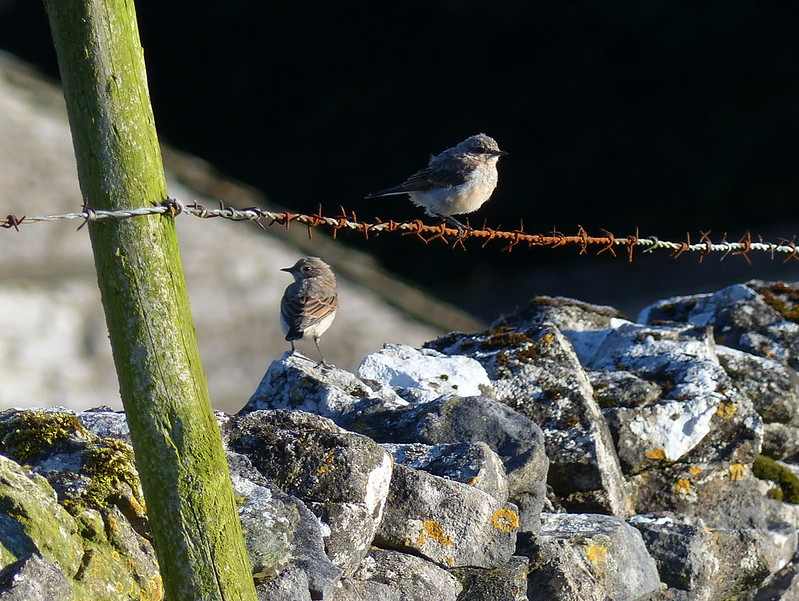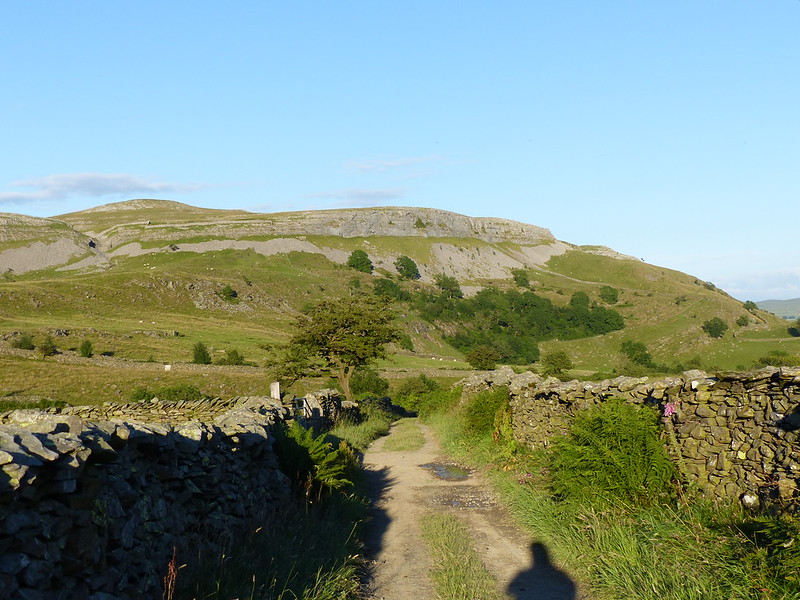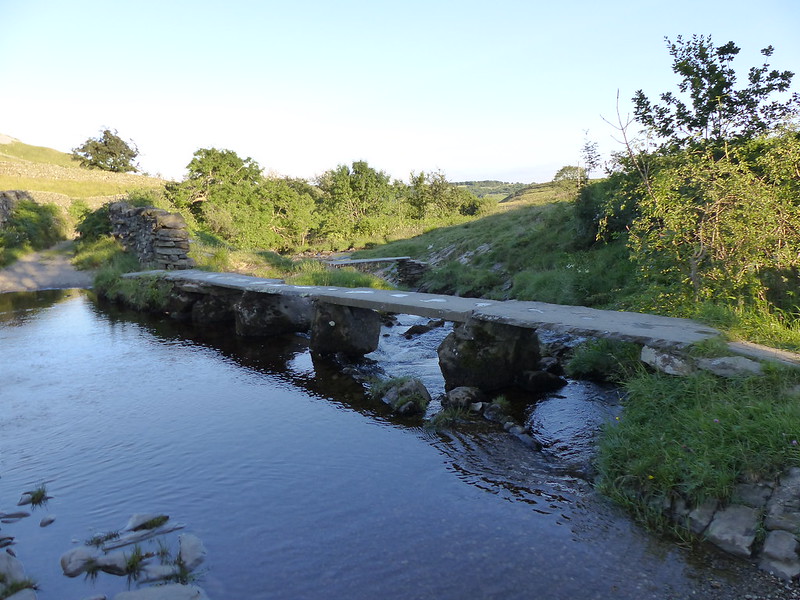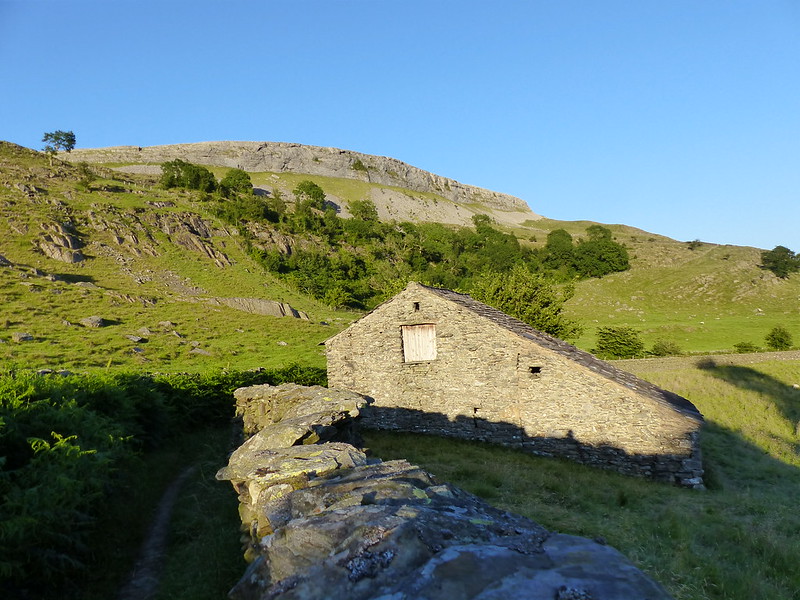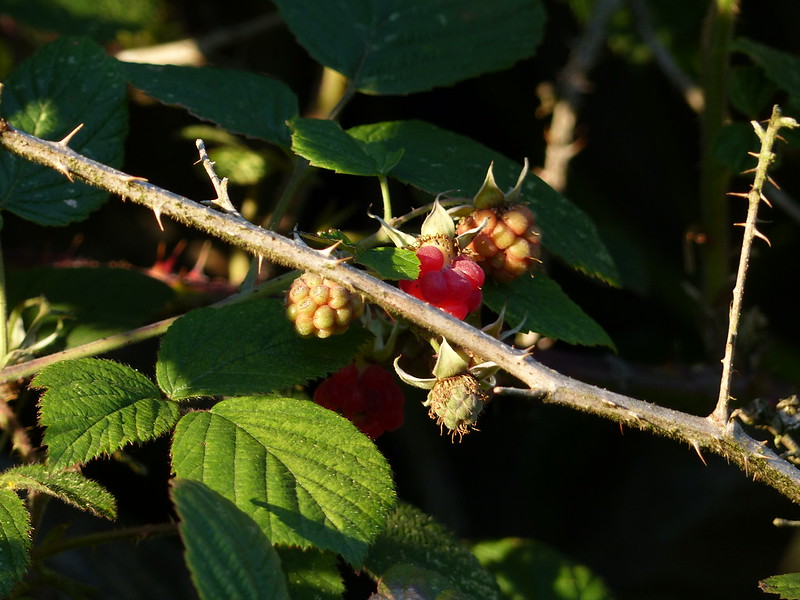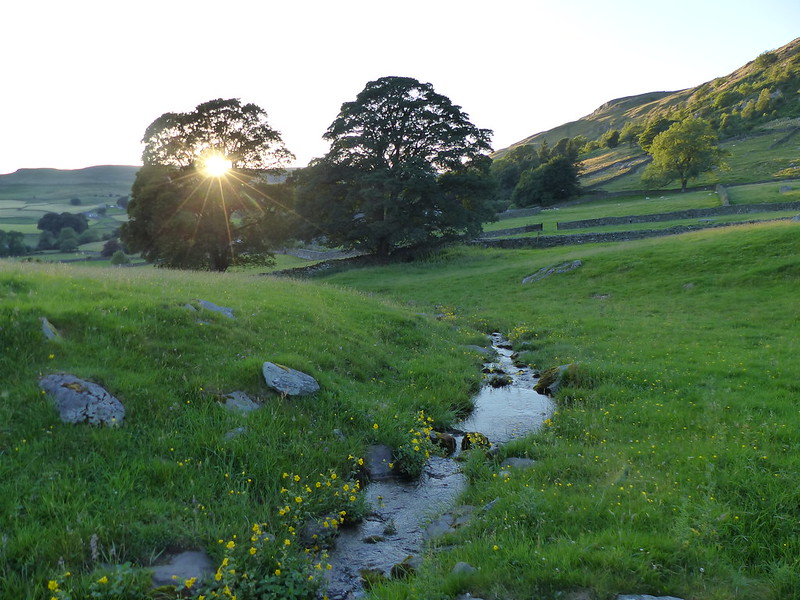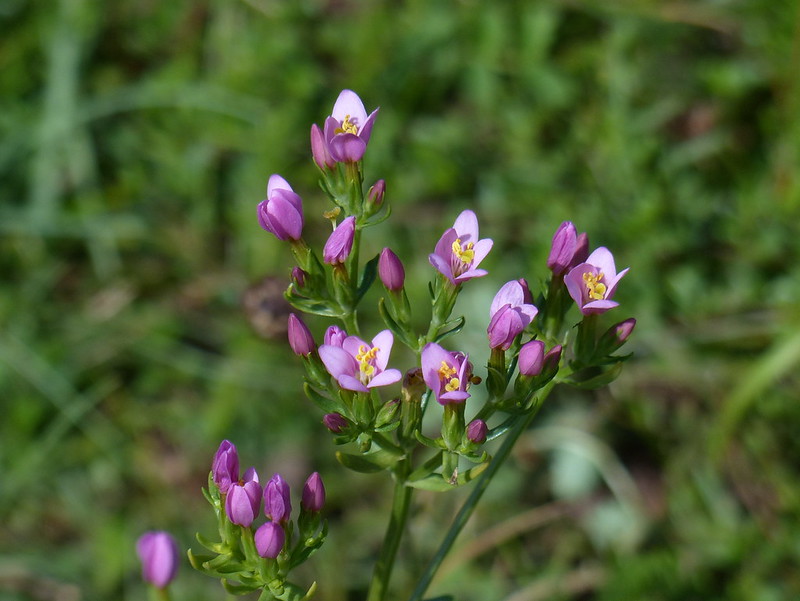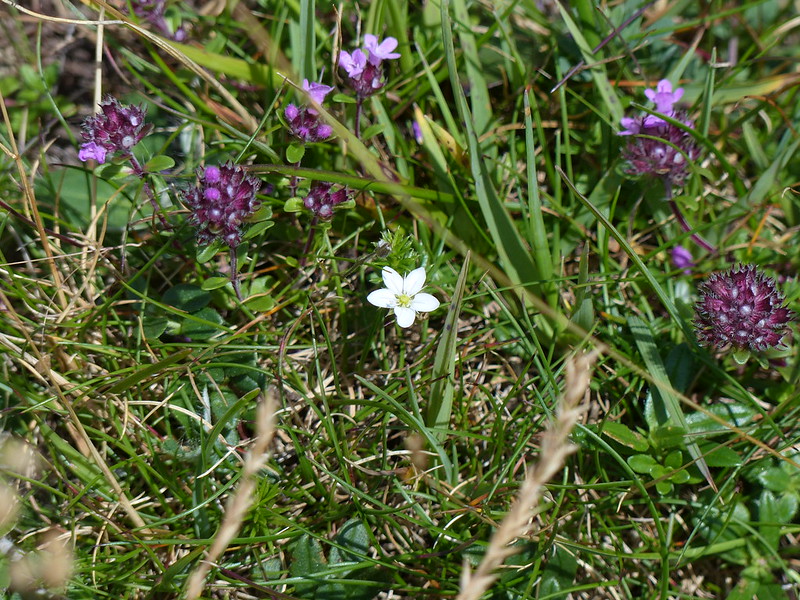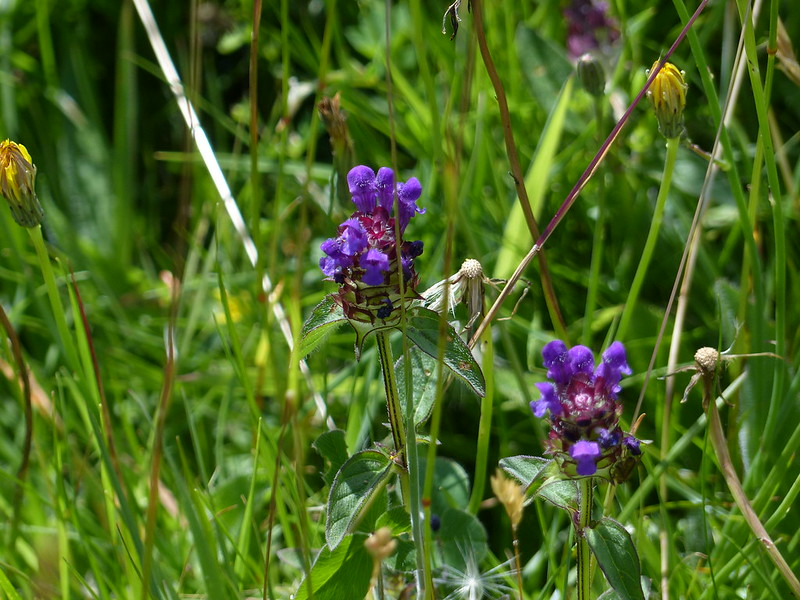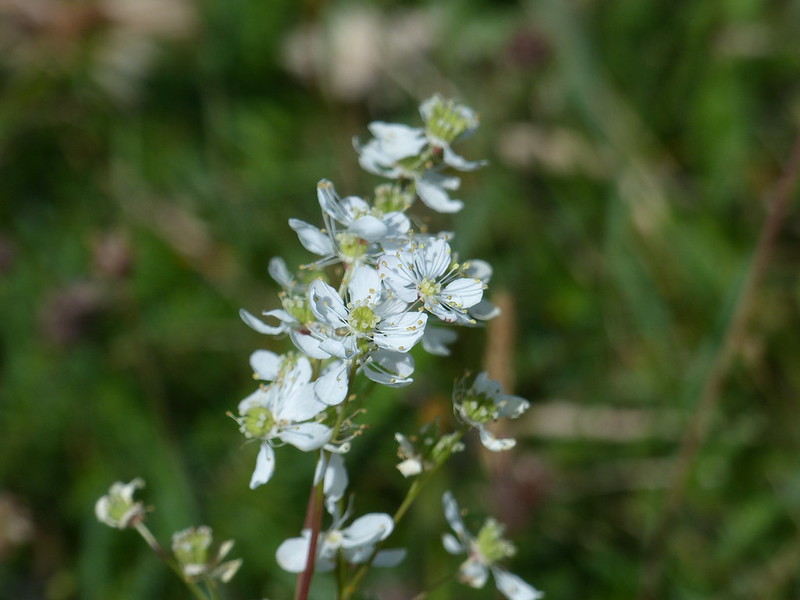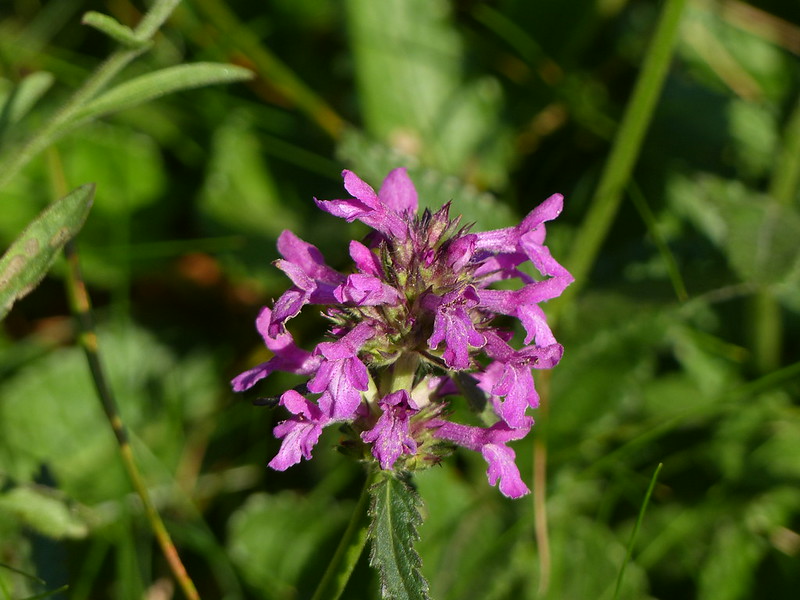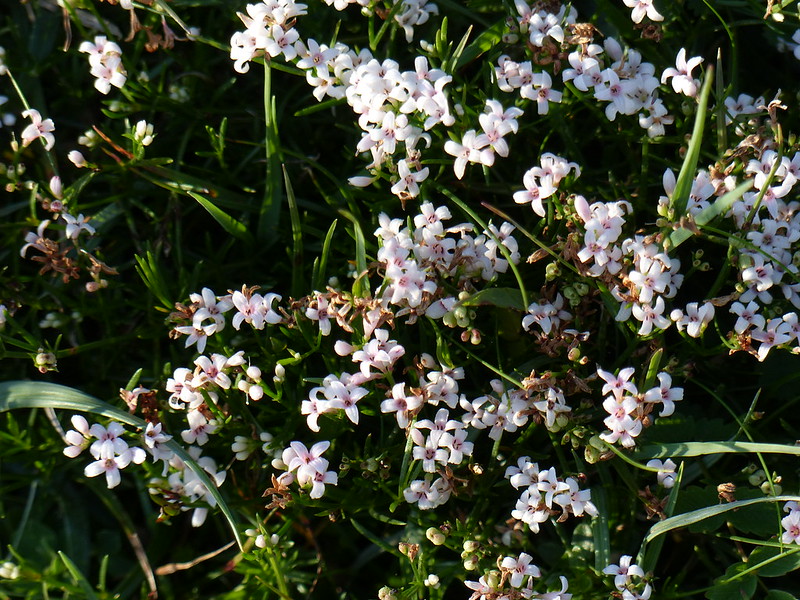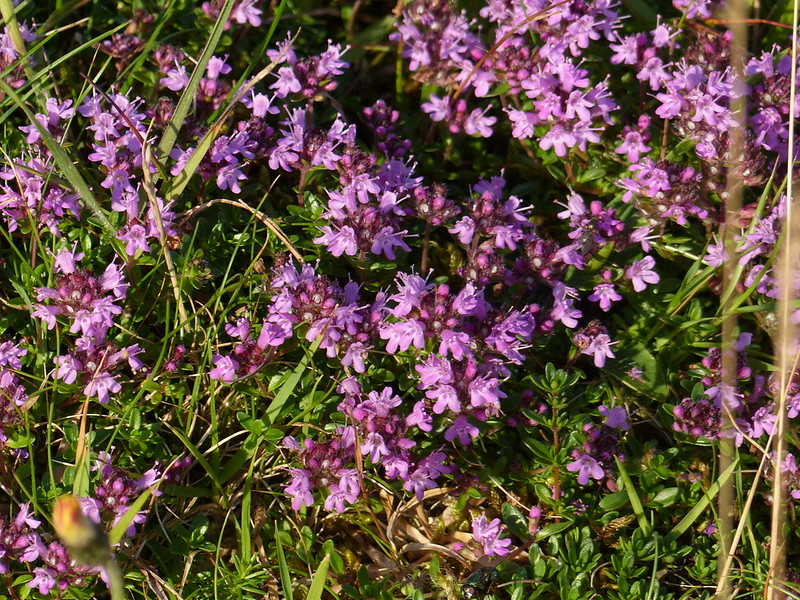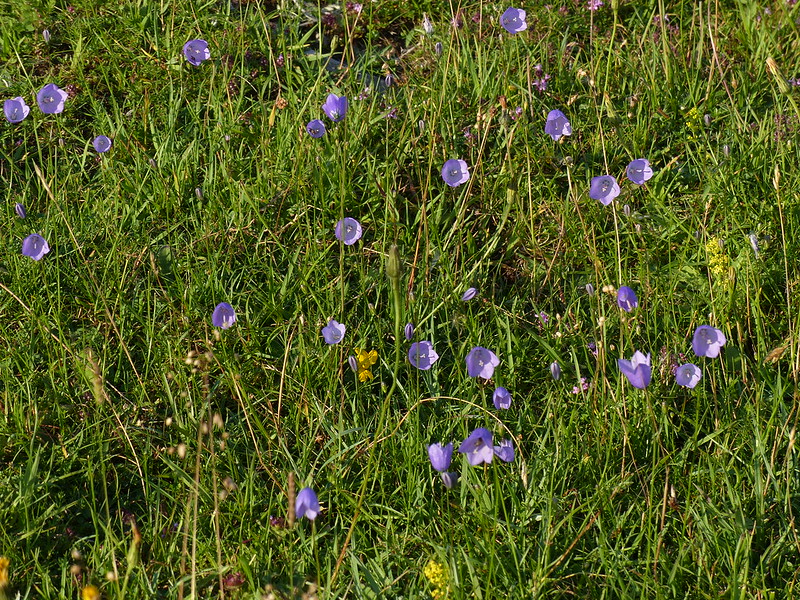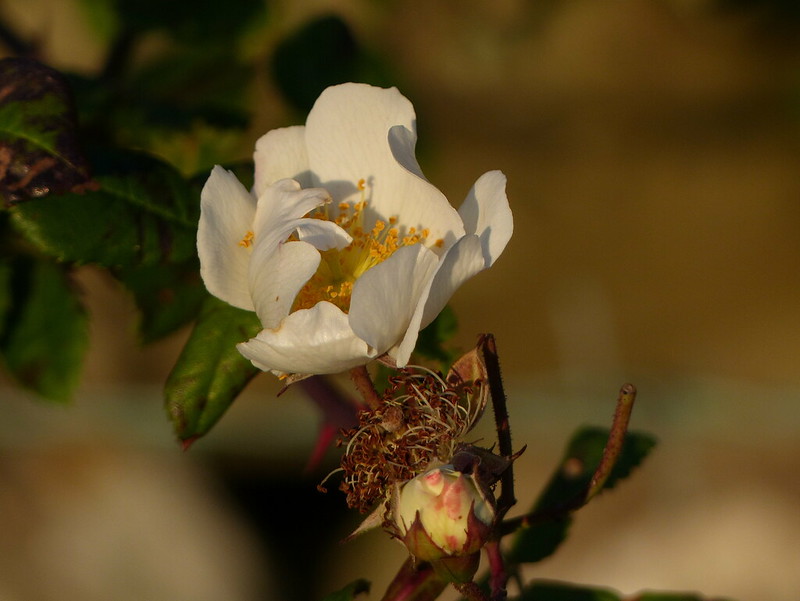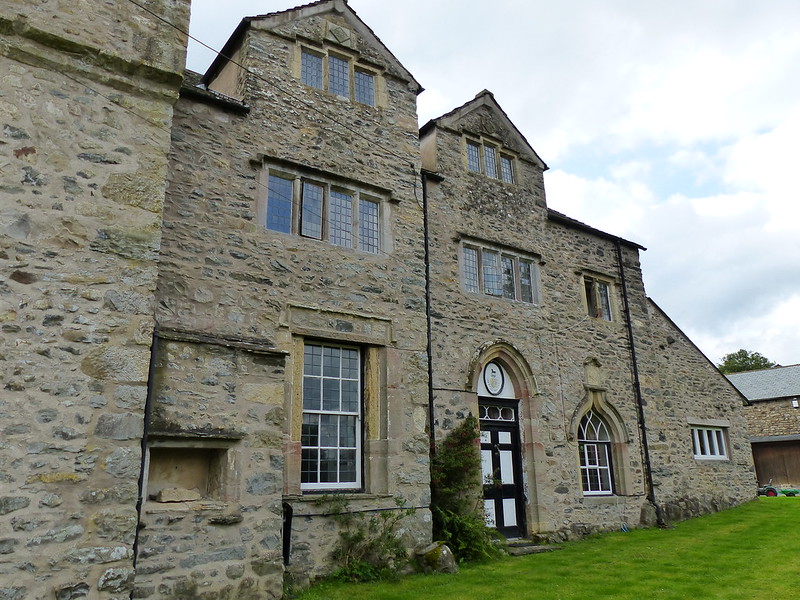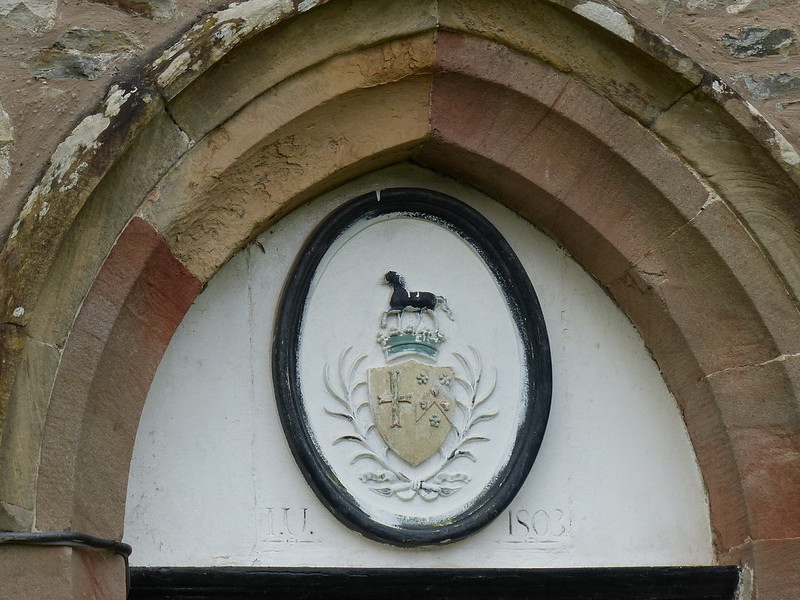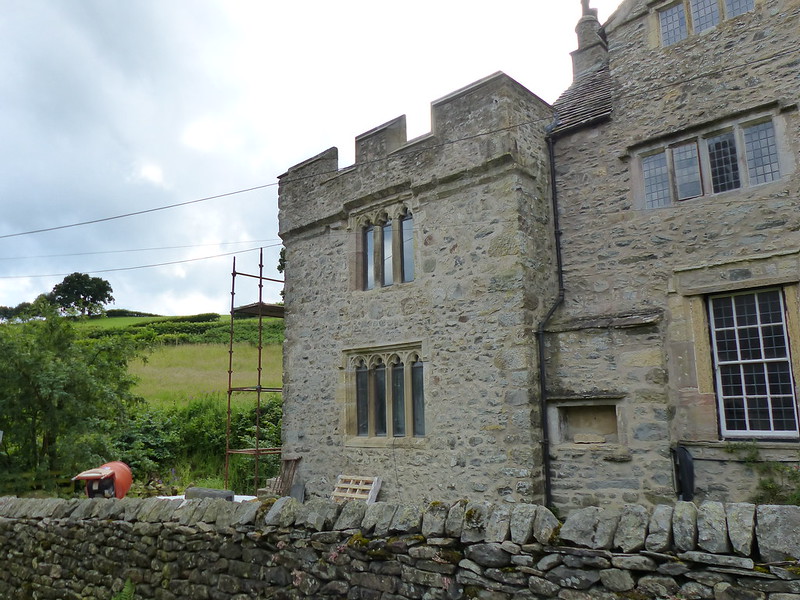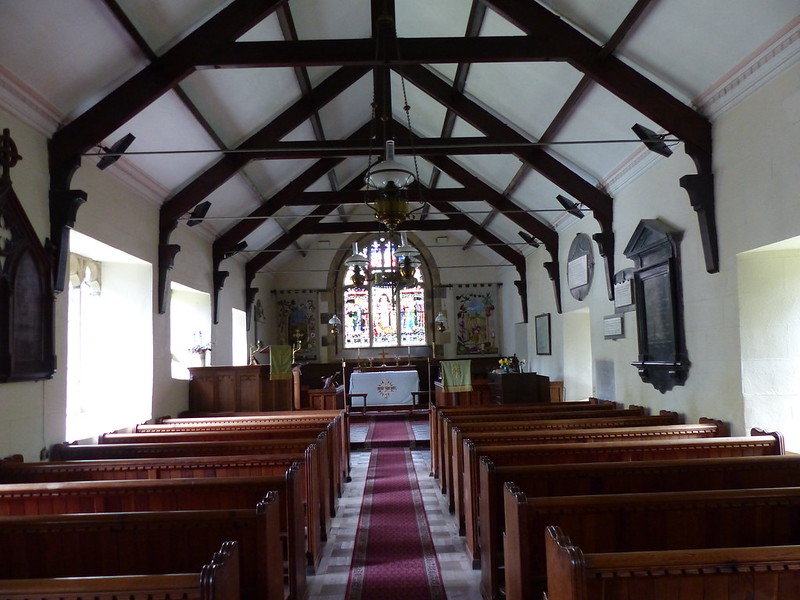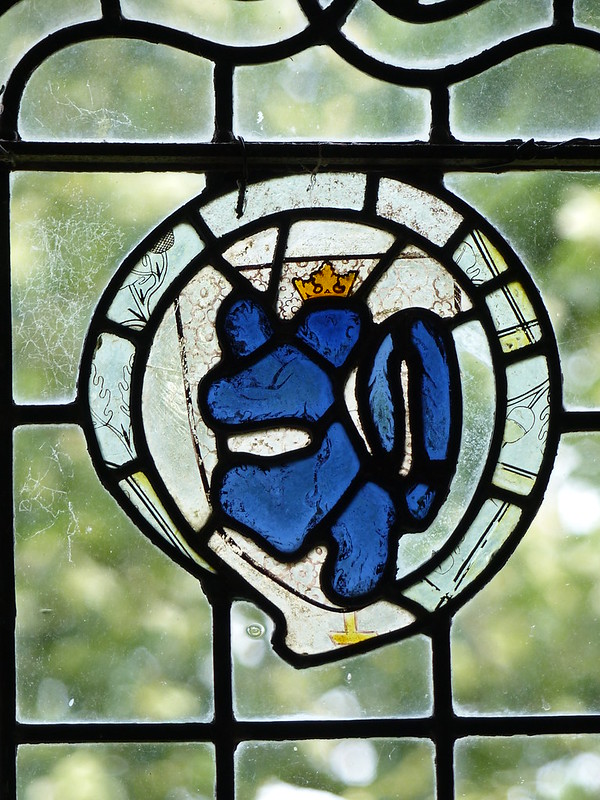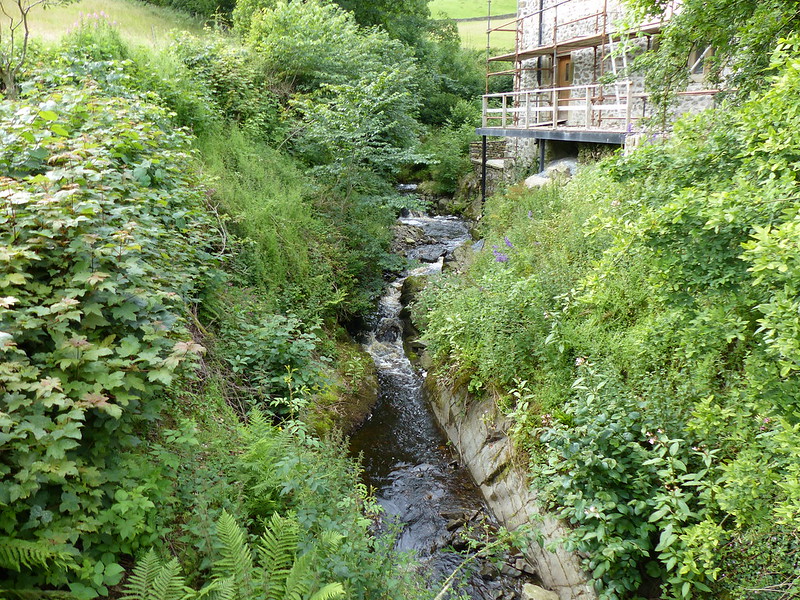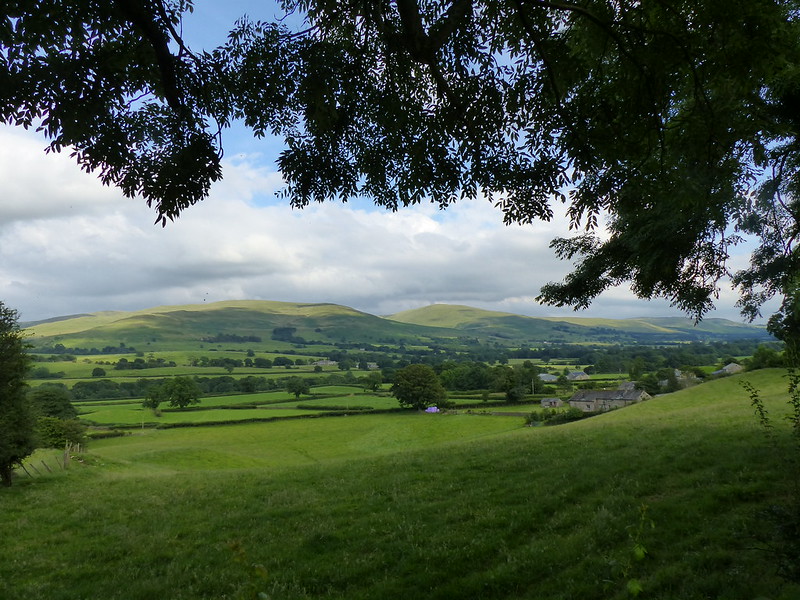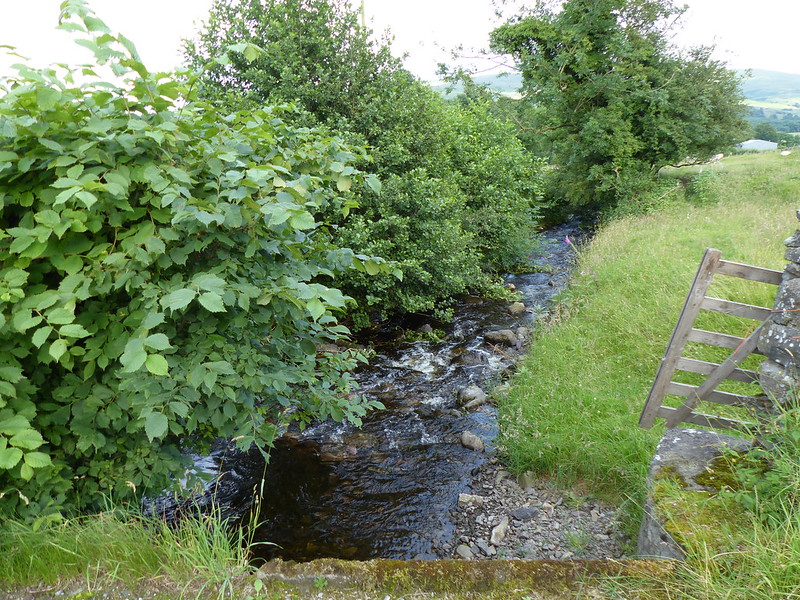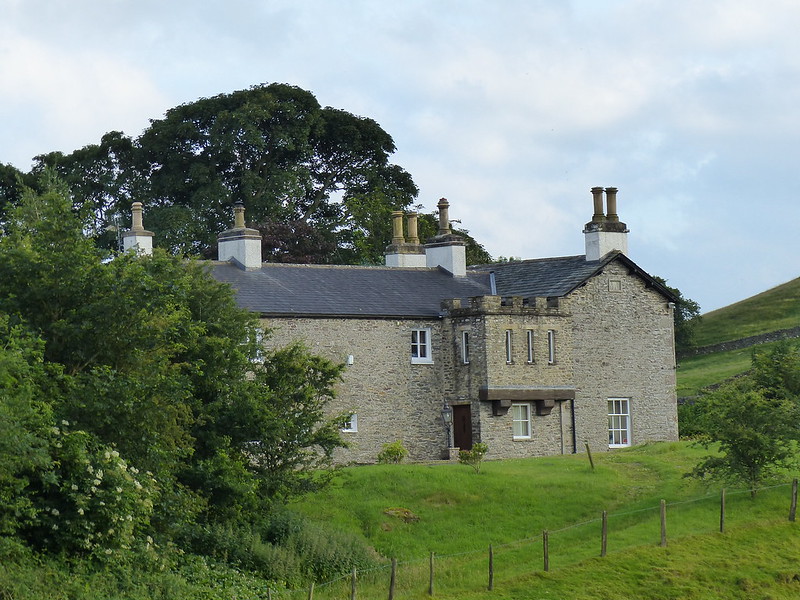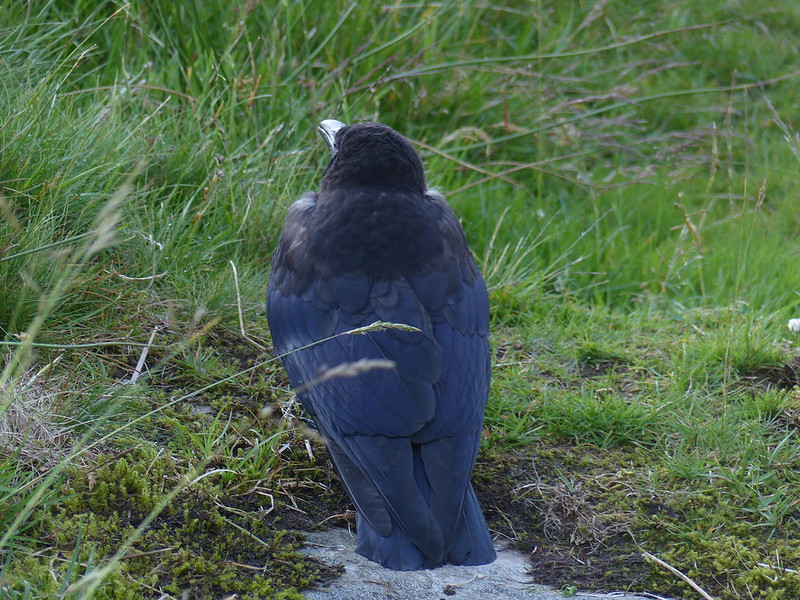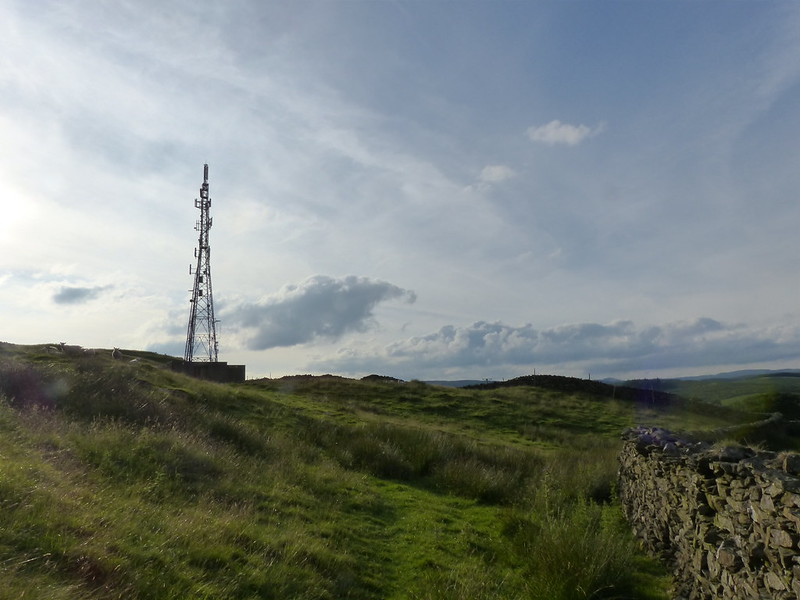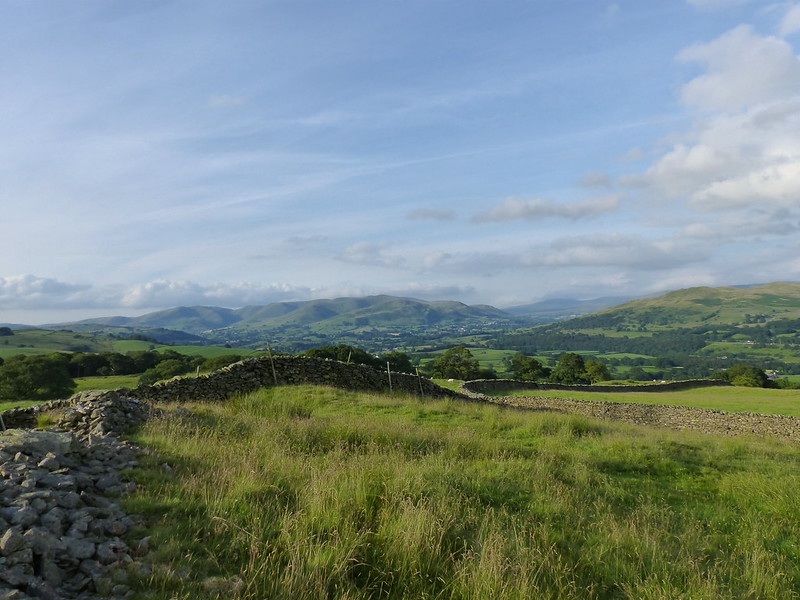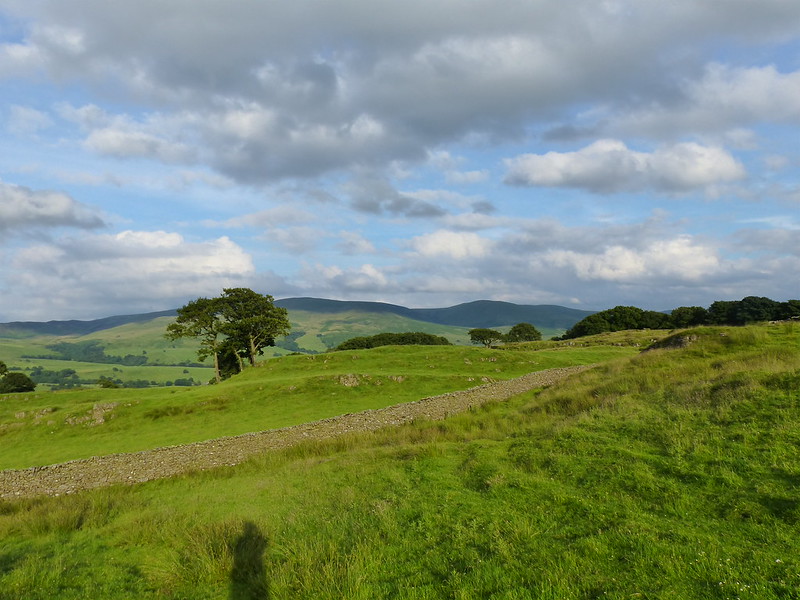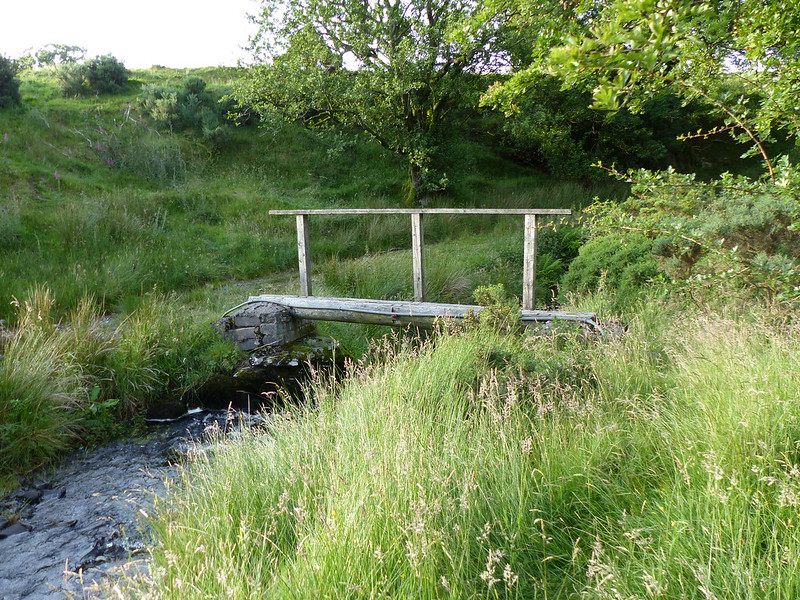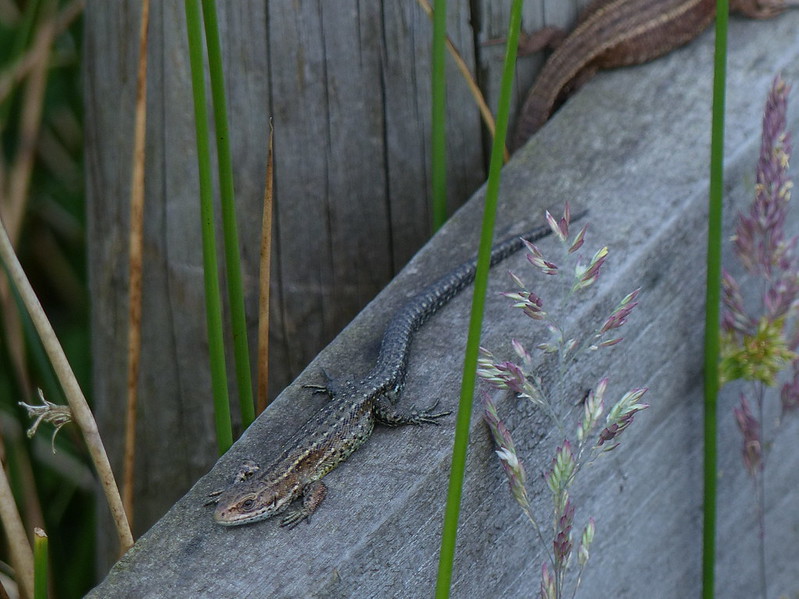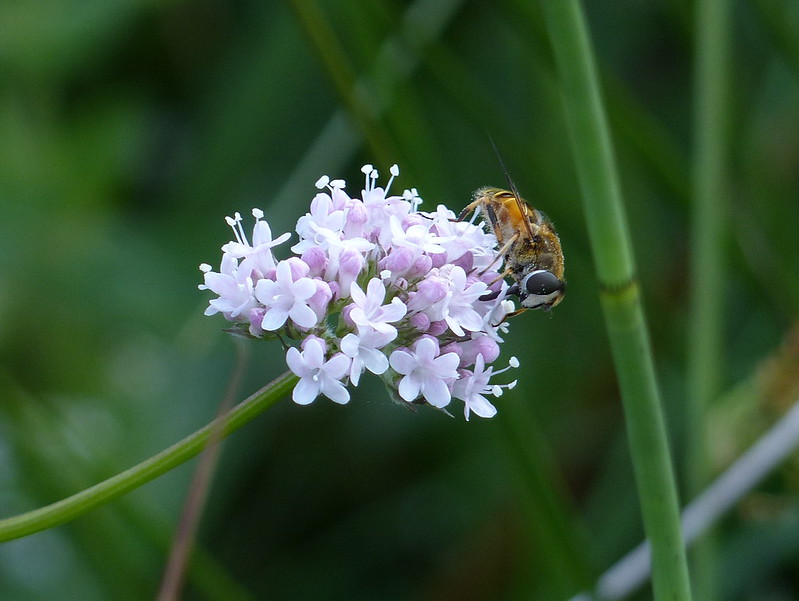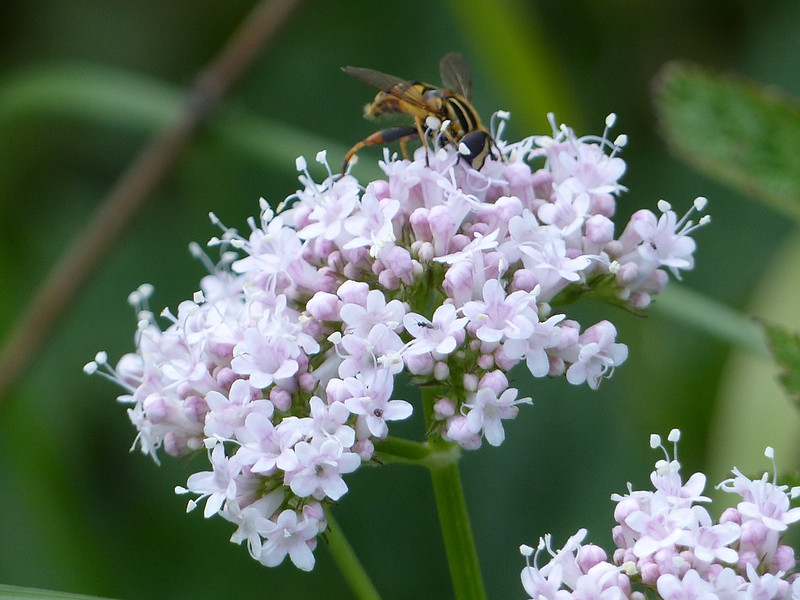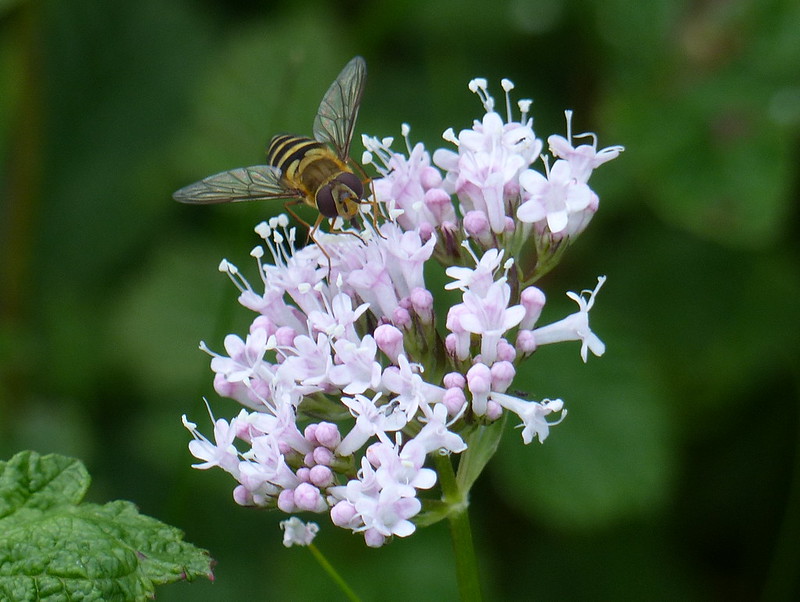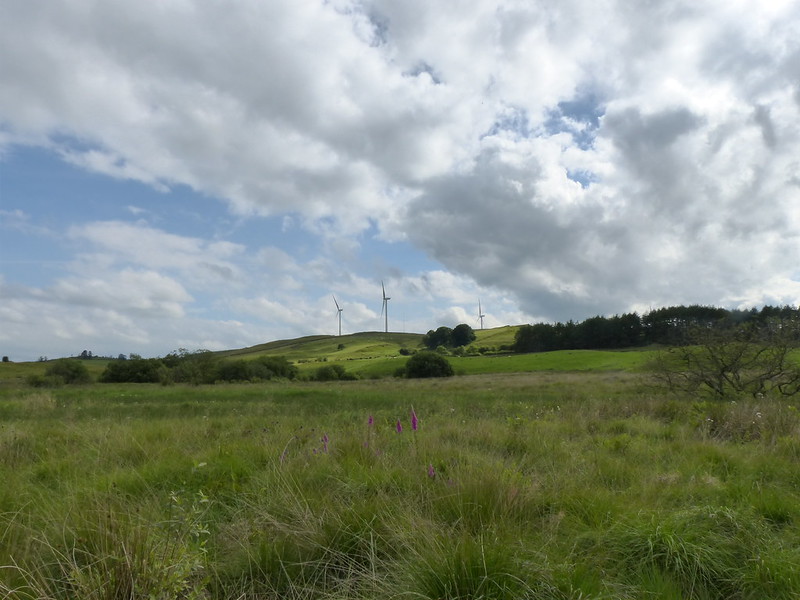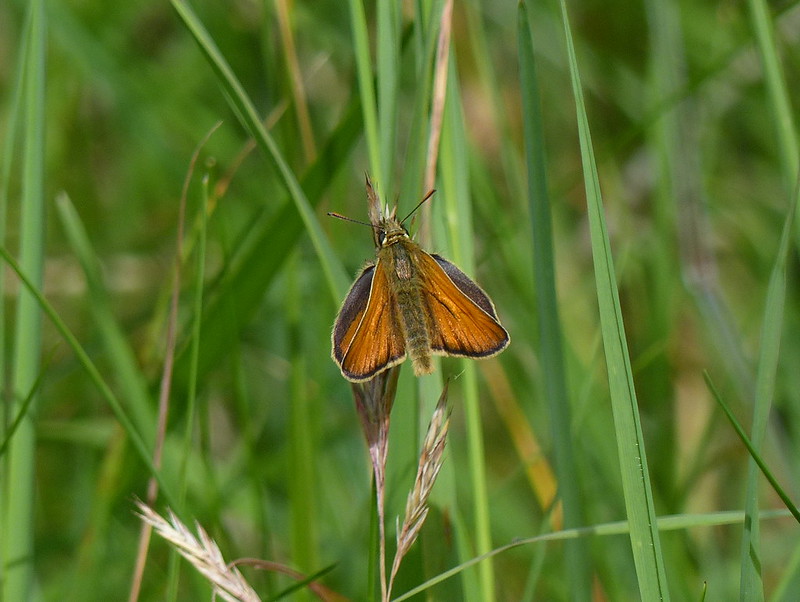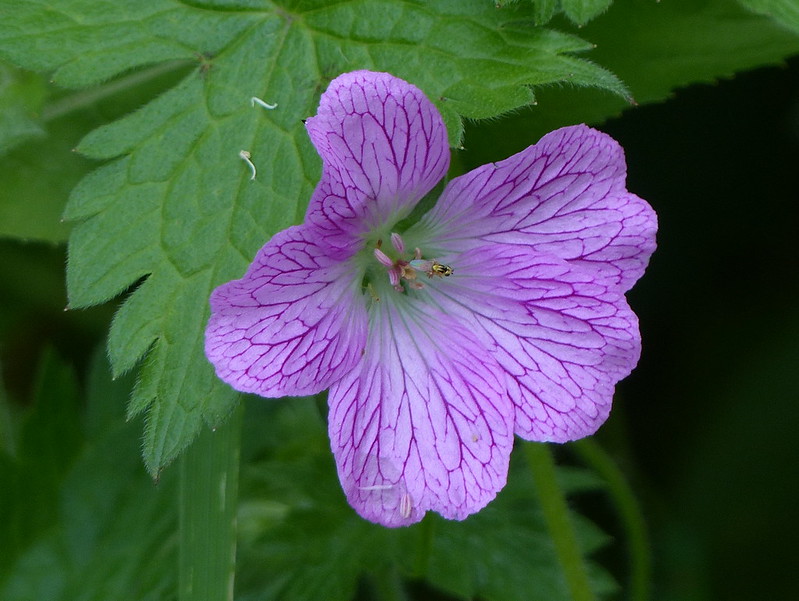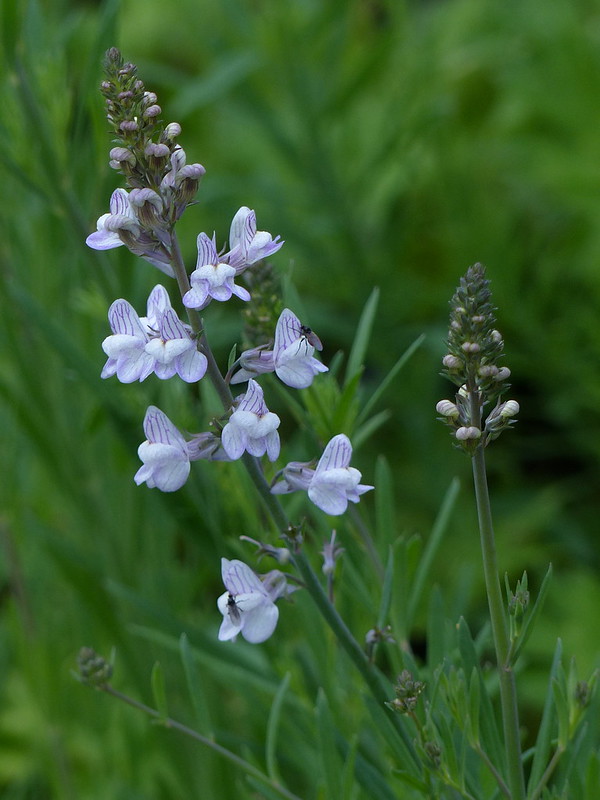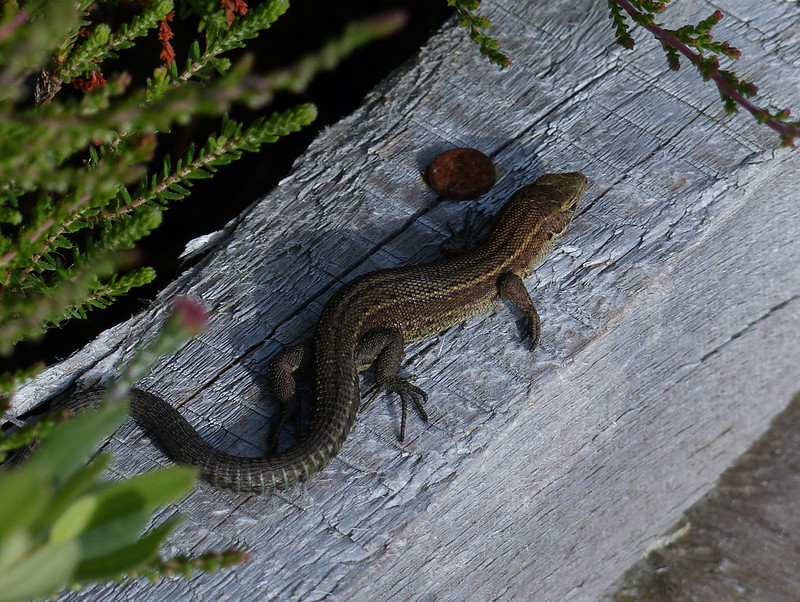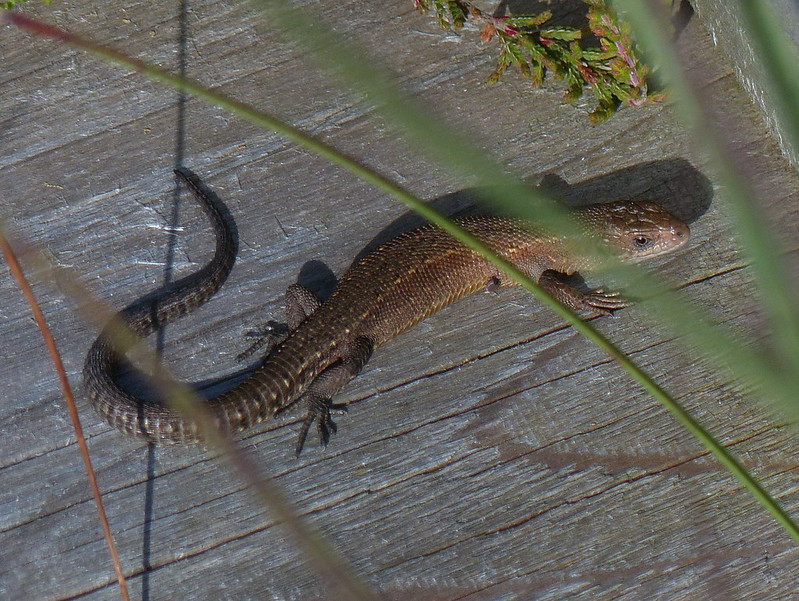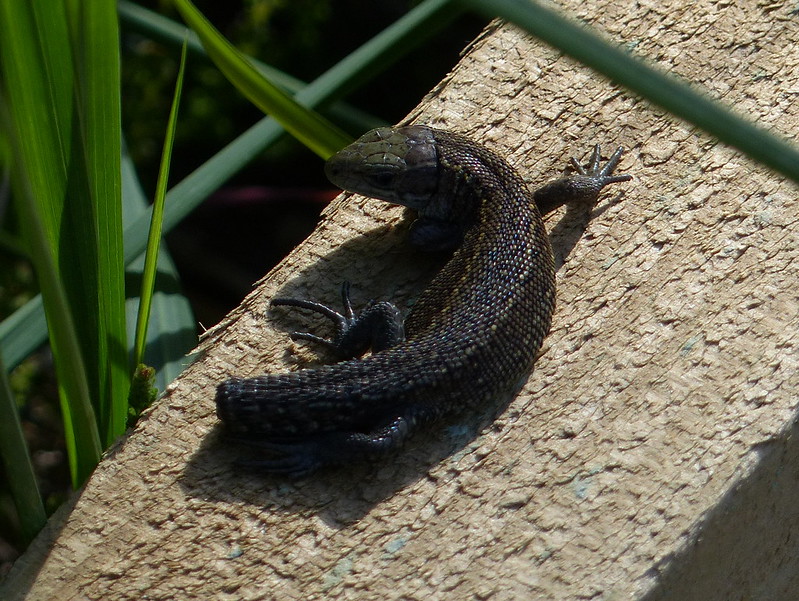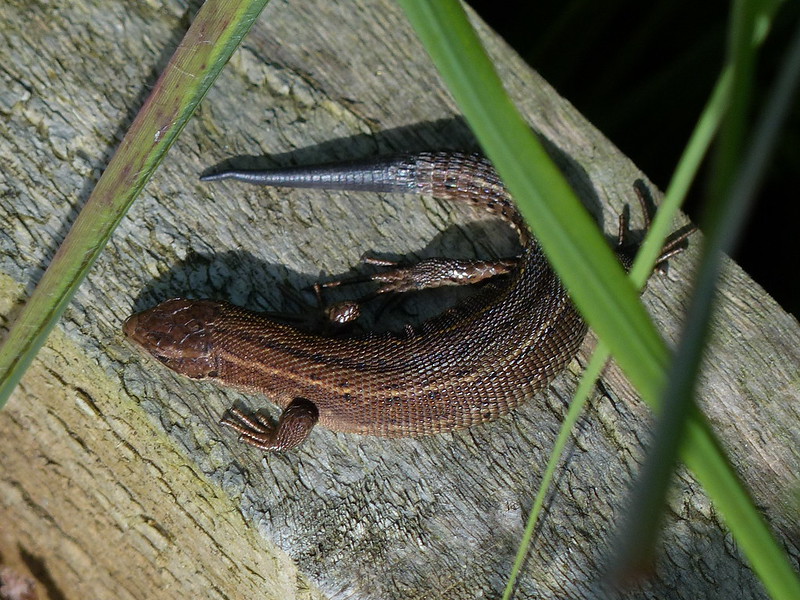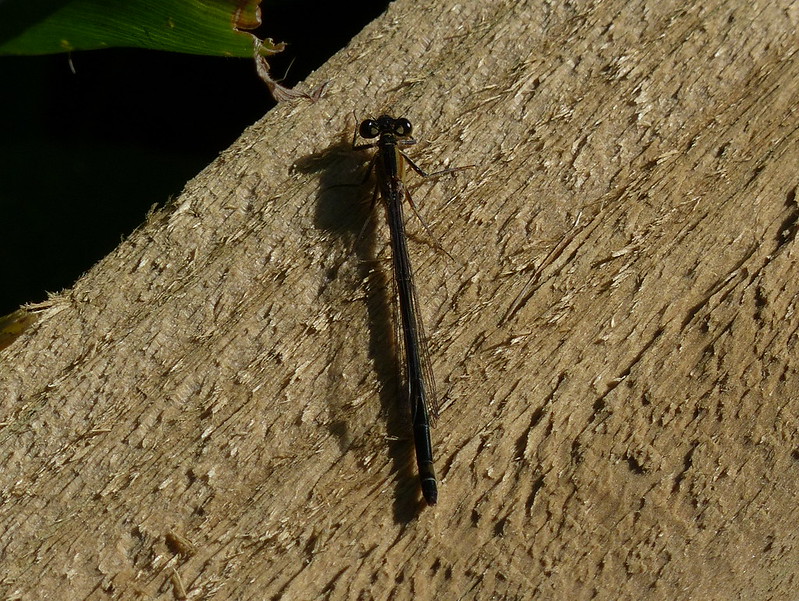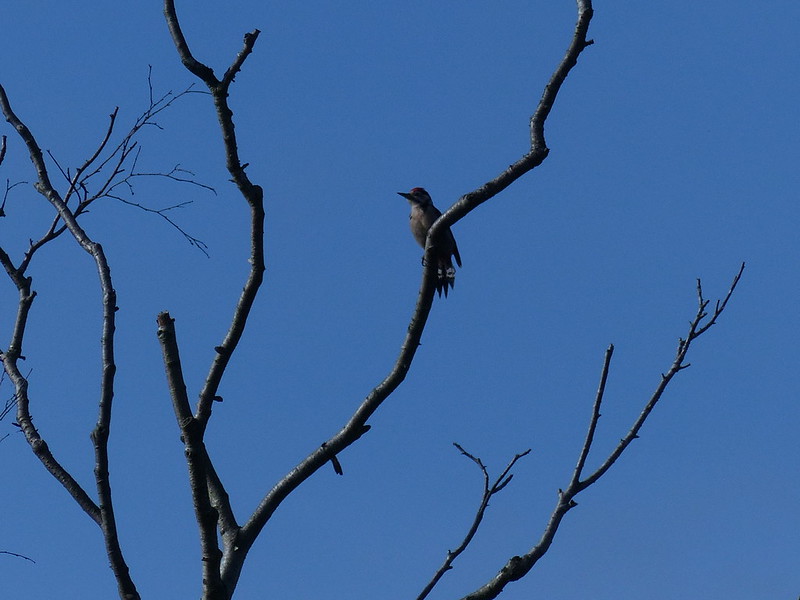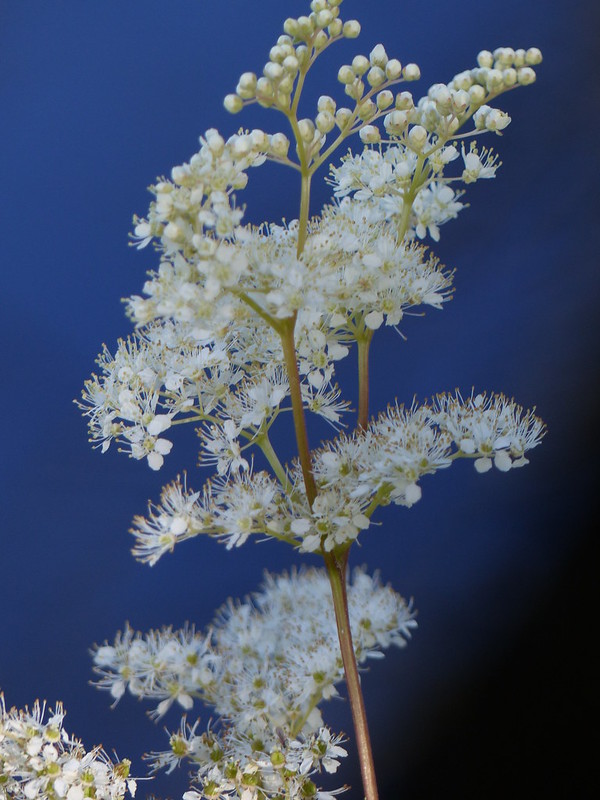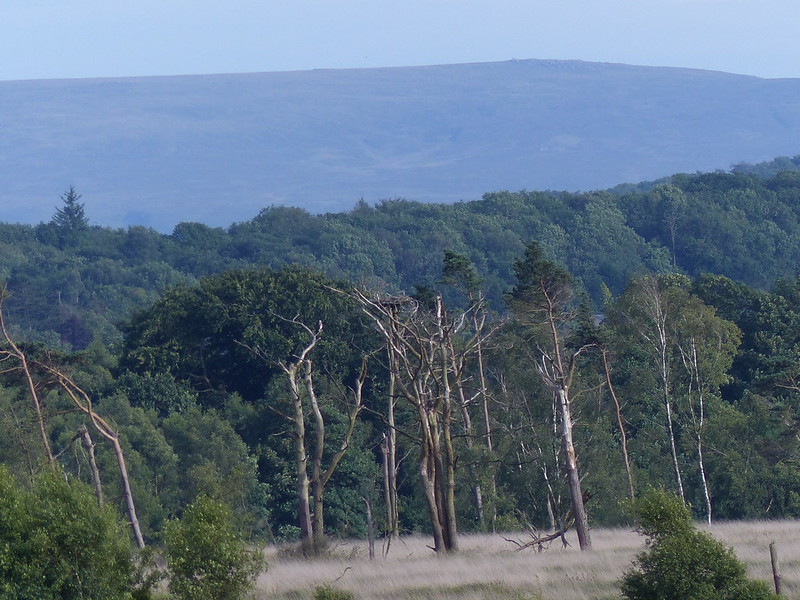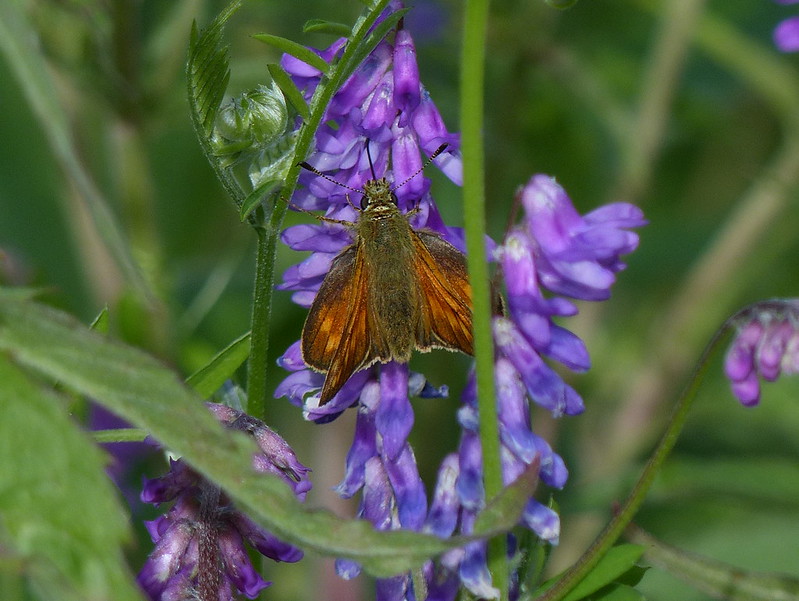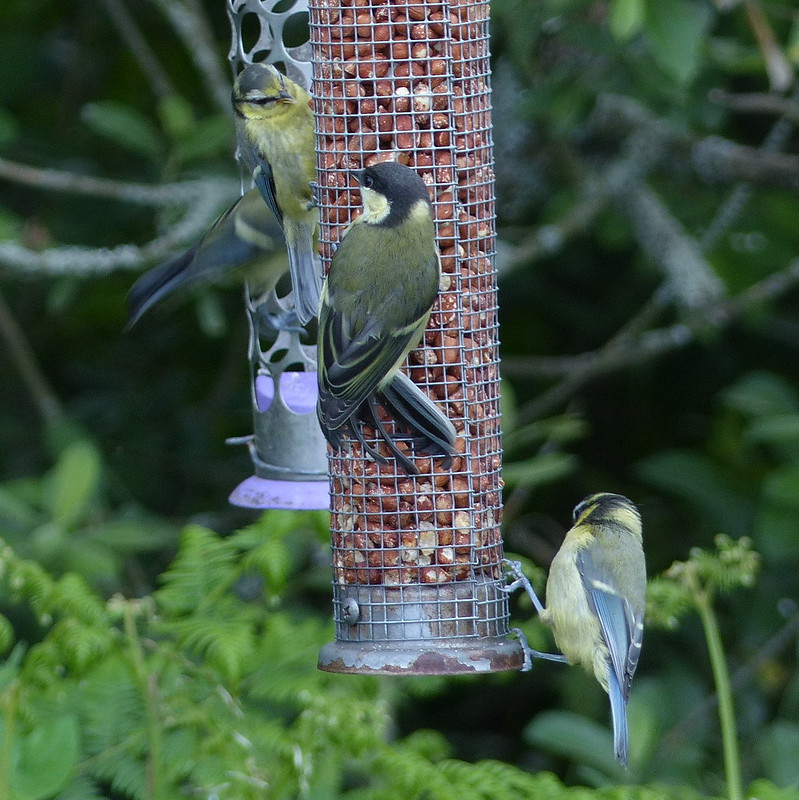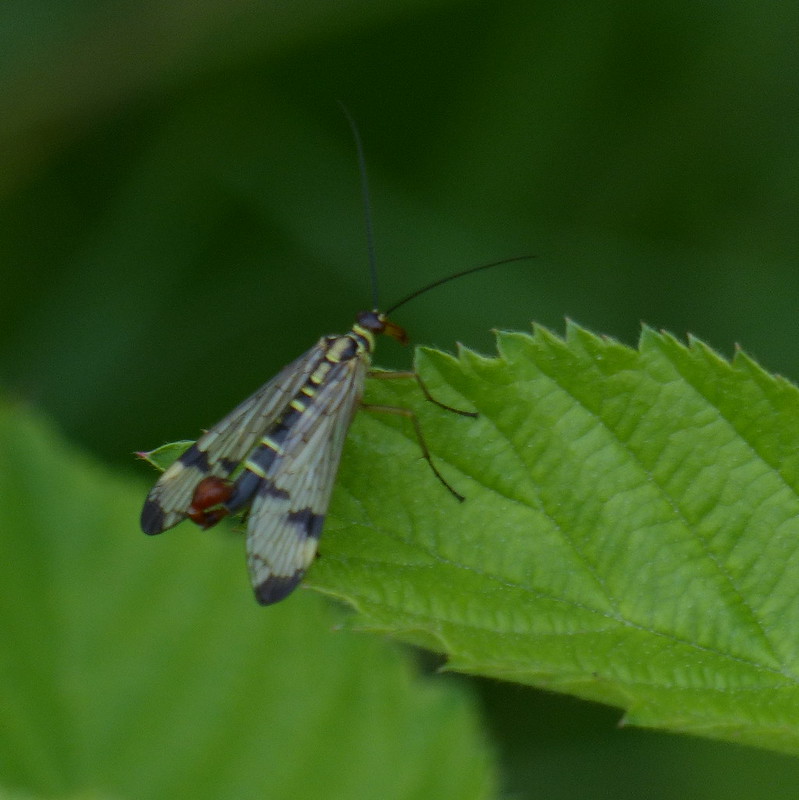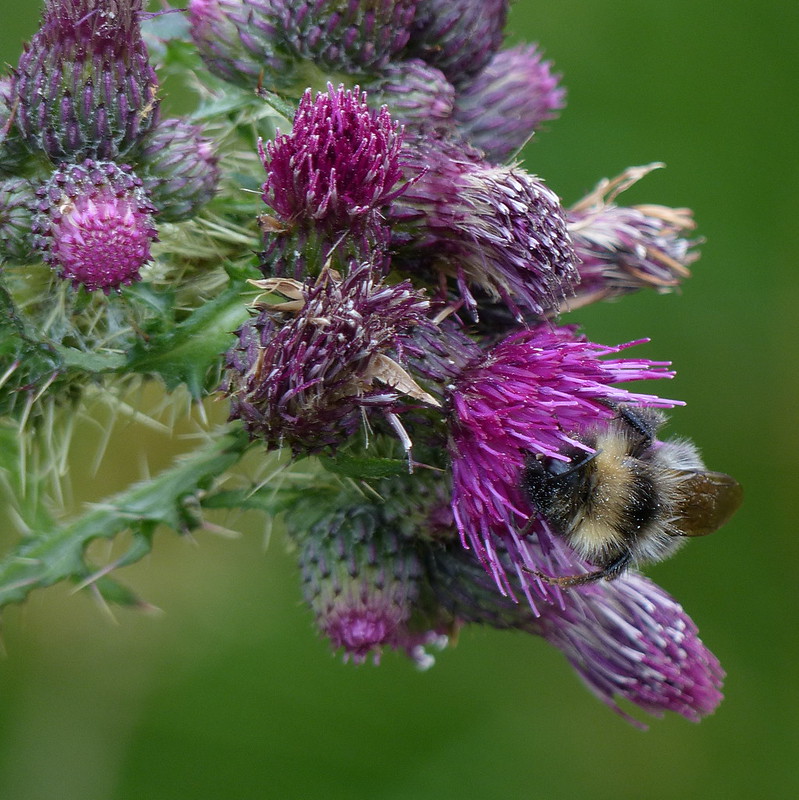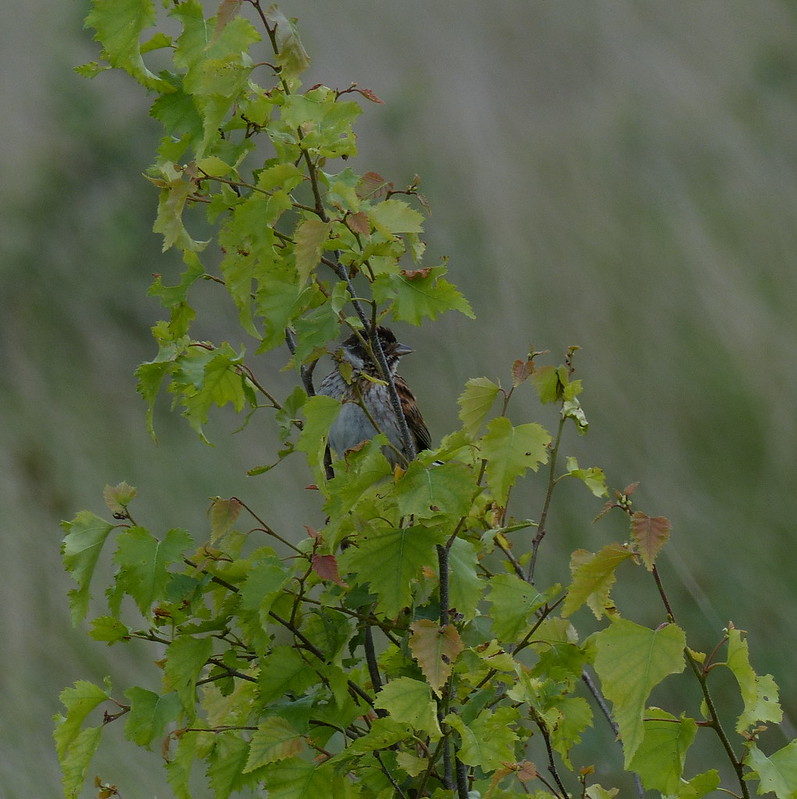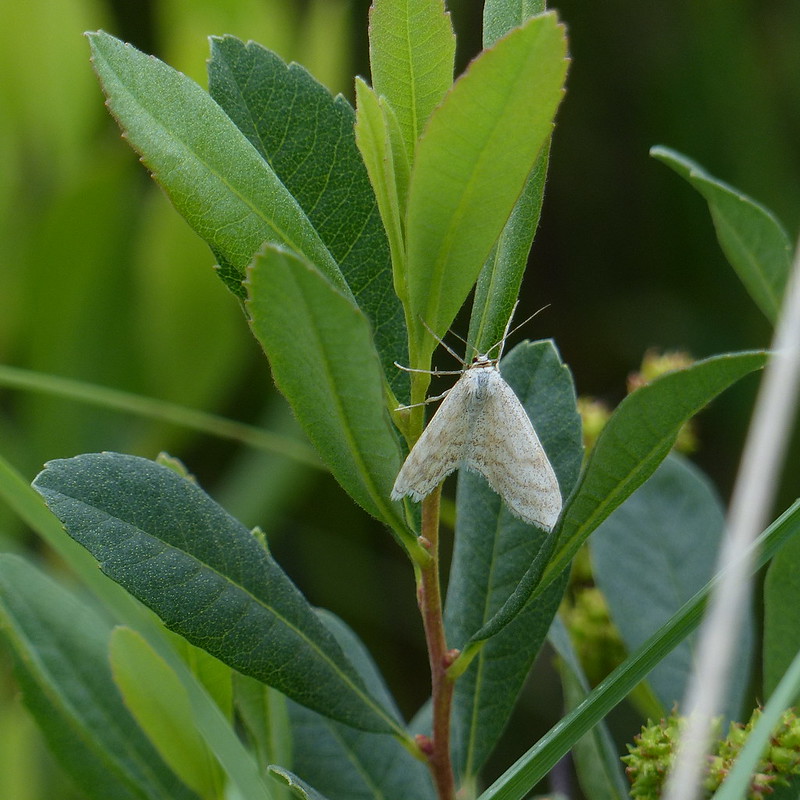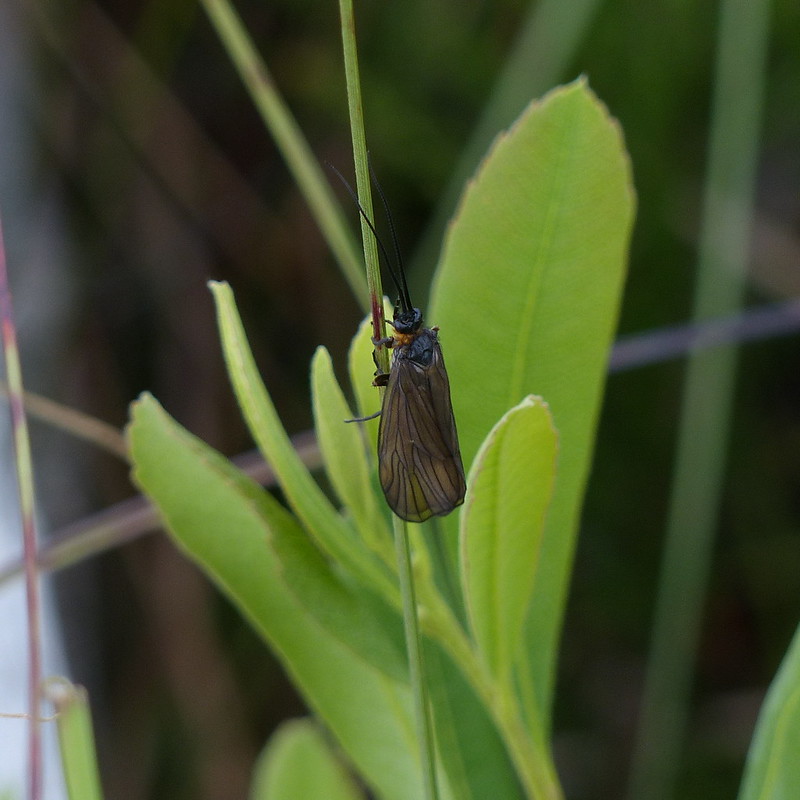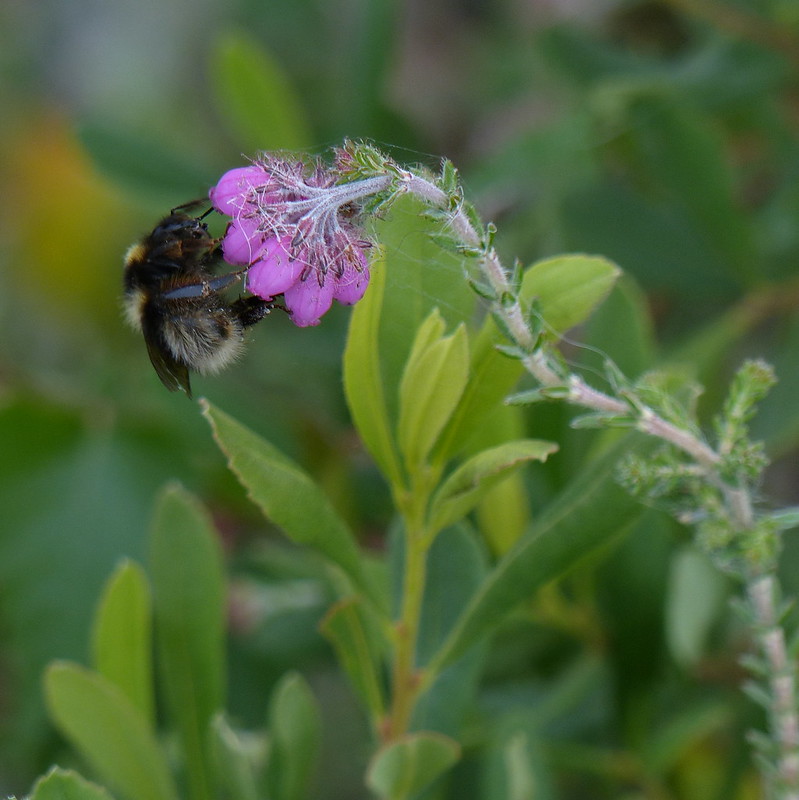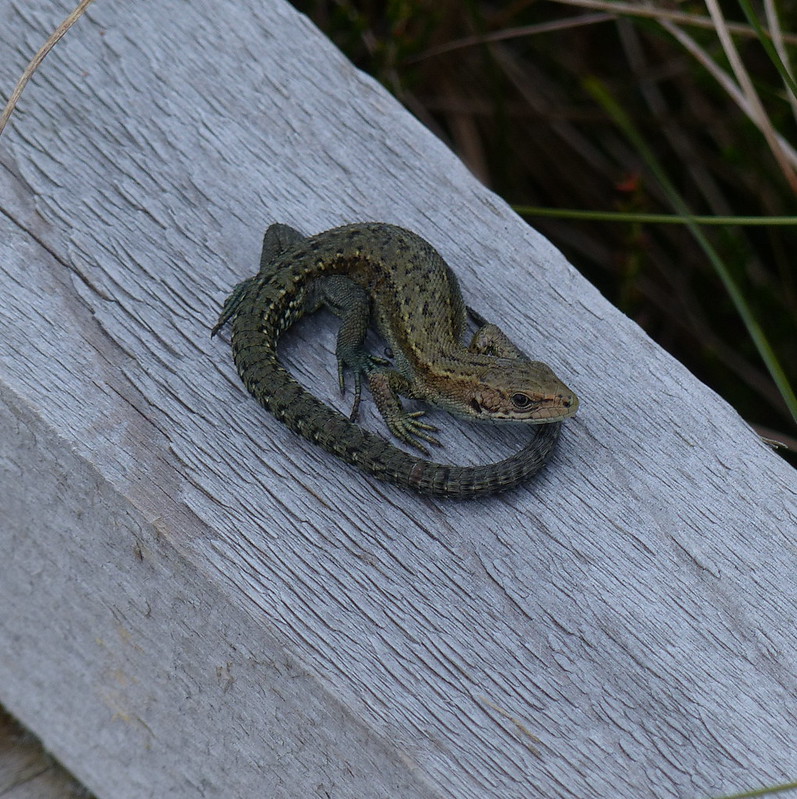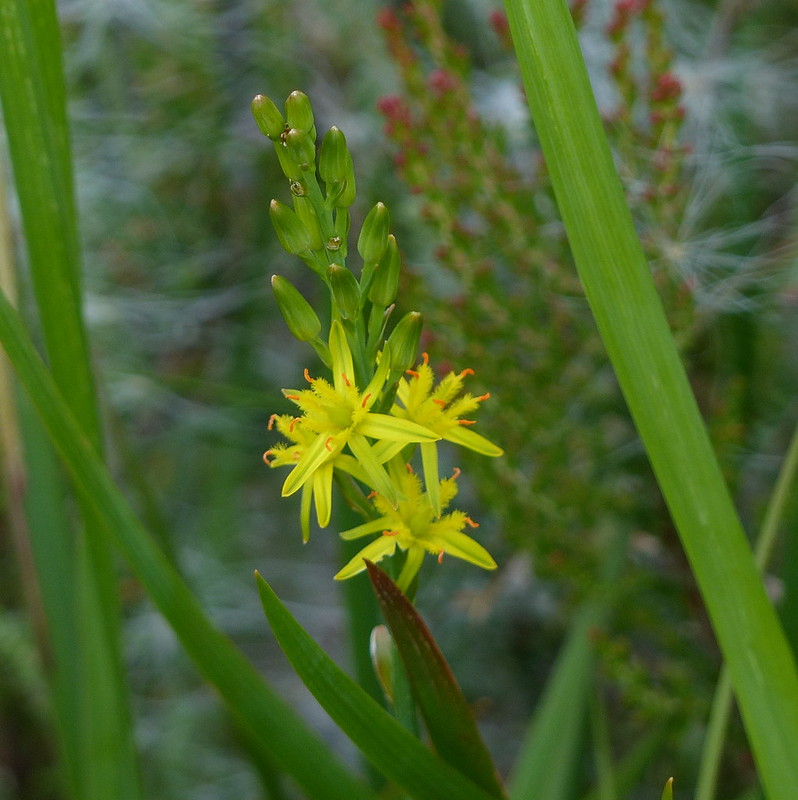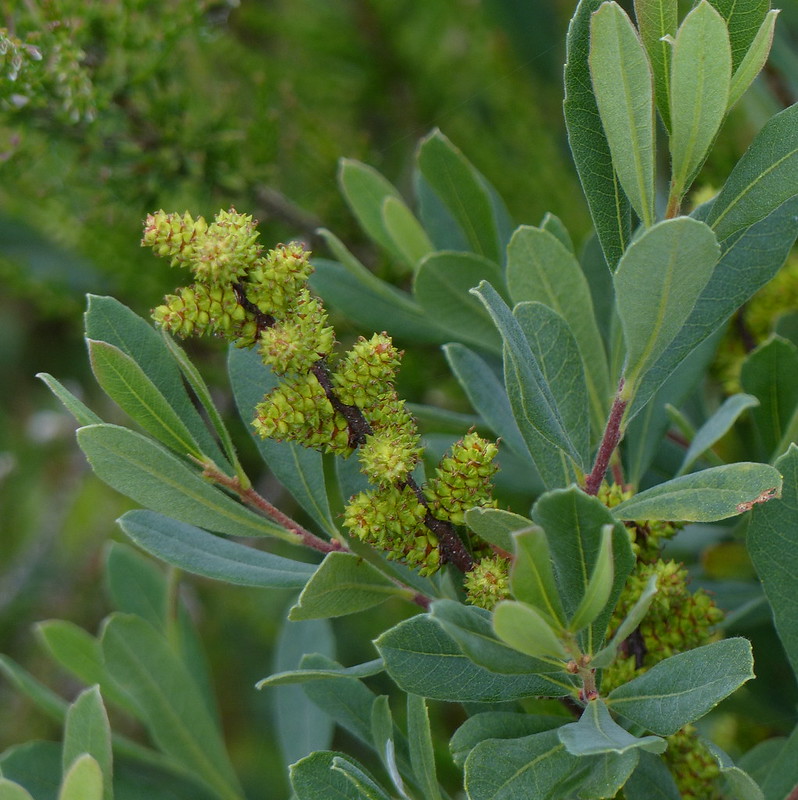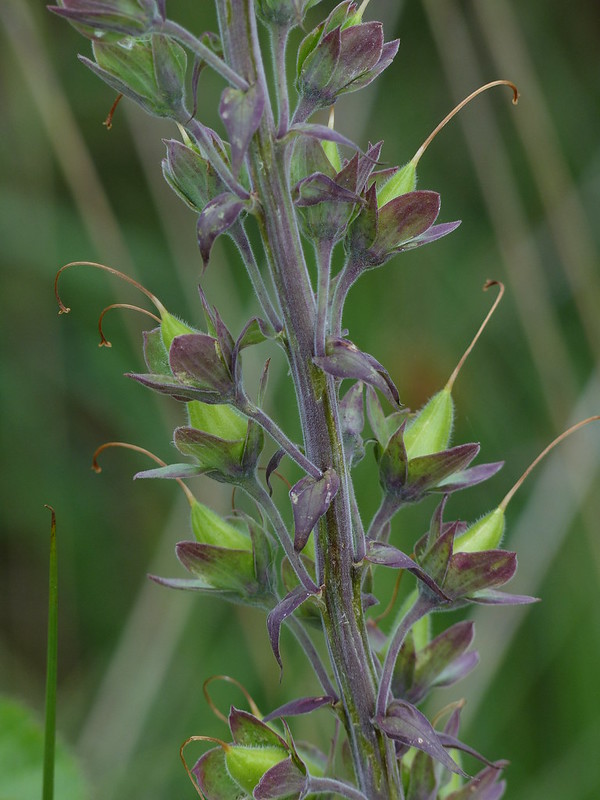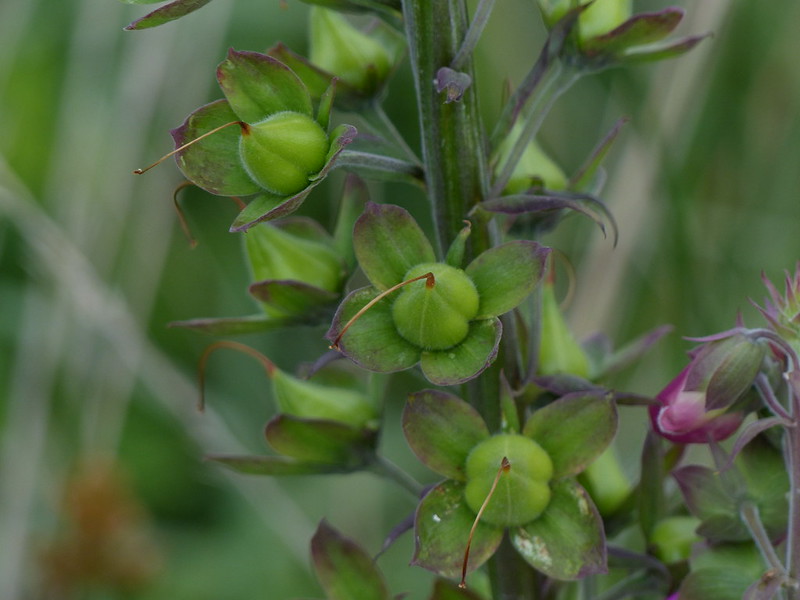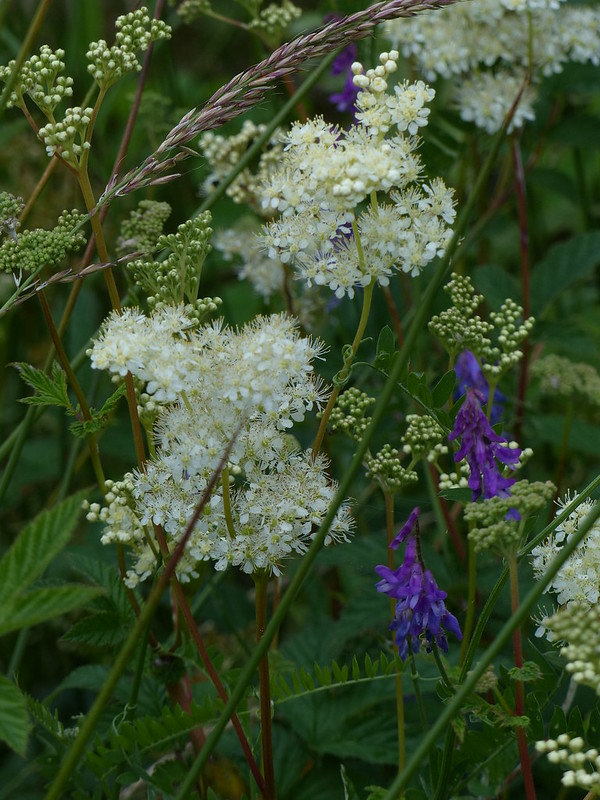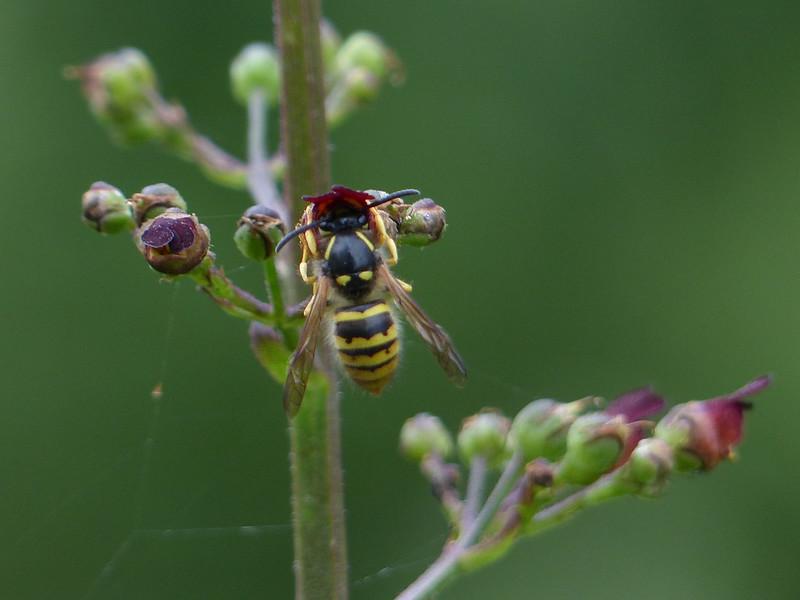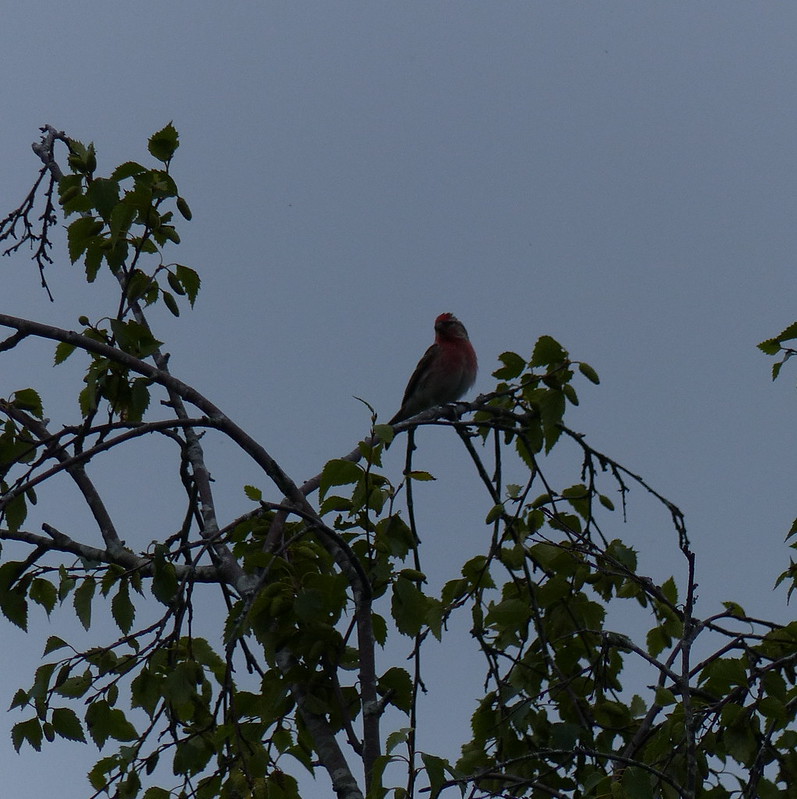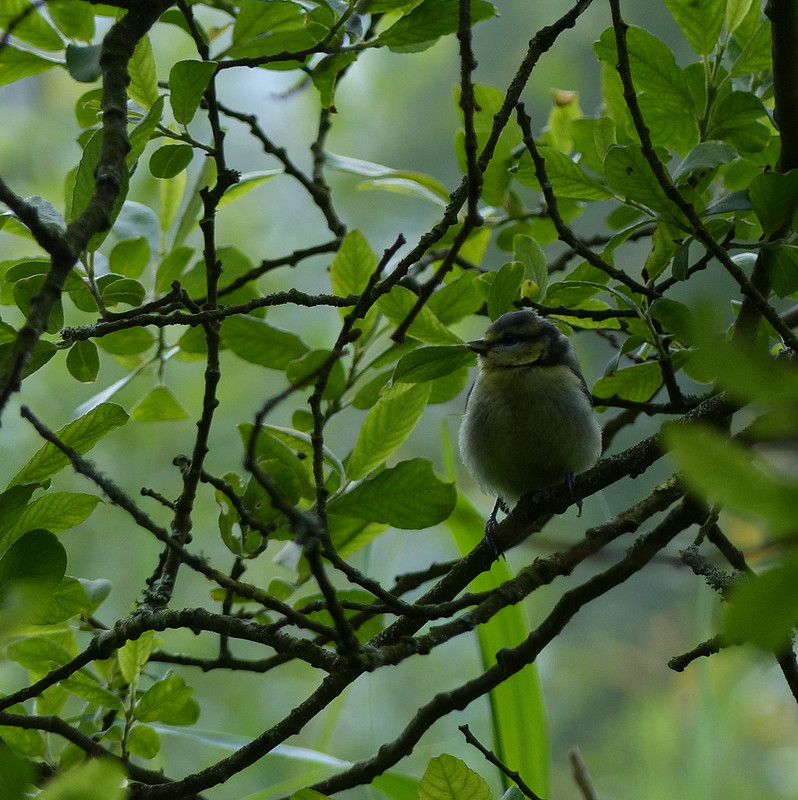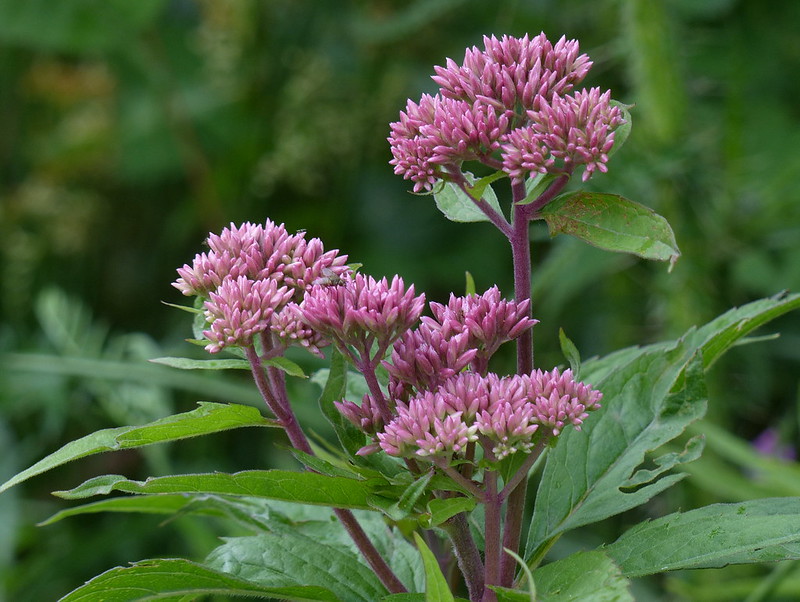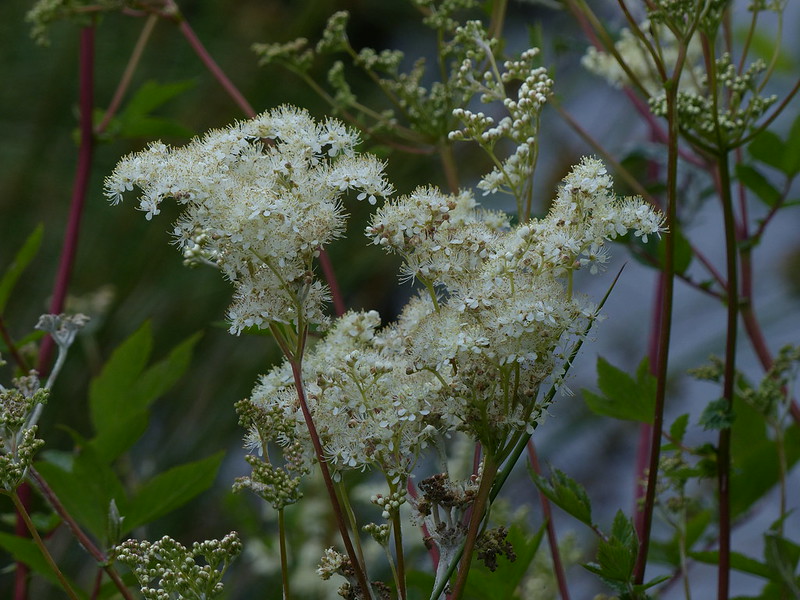
Tarn Sike is both a stream and a nature reserve. The nature reserve, owned by Cumbria Wildlife Trust, is open to the public, but you’d have to know that it is there, because it’s about 300 yards from the road, and there’s no indication on the ground until you reach the entrance.
The stream is another tributary of the Lune, rising as Rayseat Sike and flowing through Cow Dub and this little tarn…
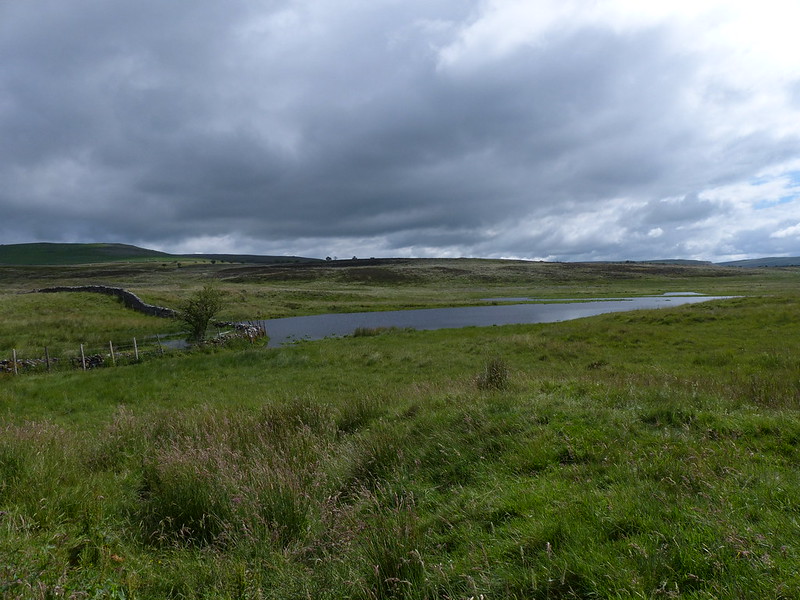
…unnamed on the OS map, before continuing as Tarn Sike. On the map it disappears intermittently, presumably going underground, before joining Rais Beck which flows into the Lune. I assume that the water from Sunbiggin Tarn must also come this way although the map doesn’t seem to show any outflow stream.
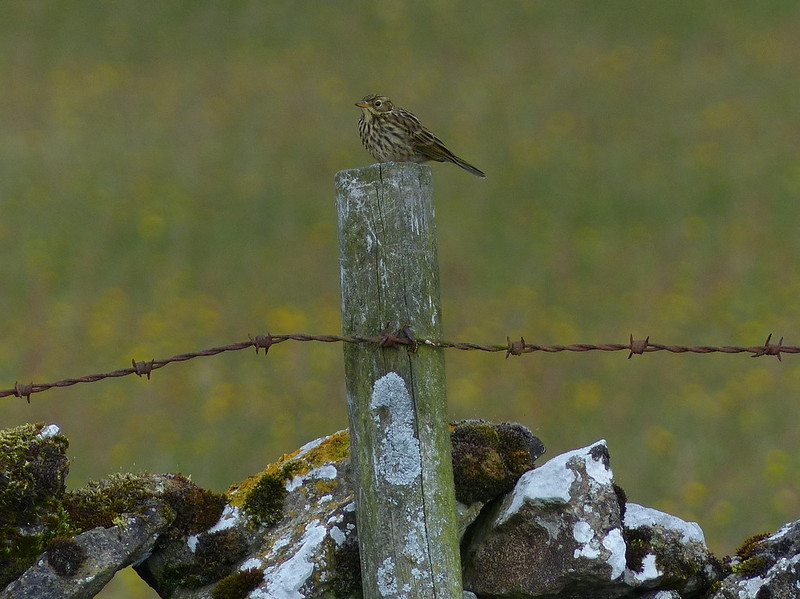
Meadow Pipit.
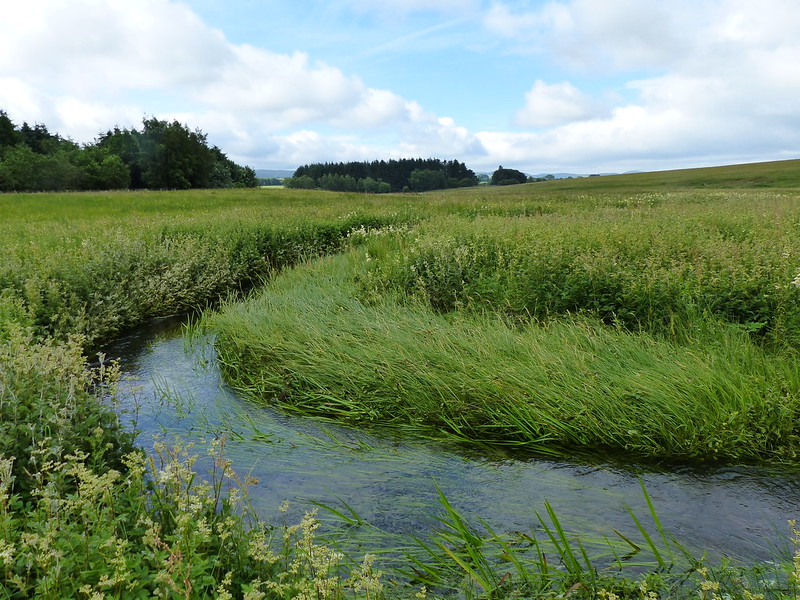
The reserve is a (very) wet meadow containing distinctly different habitats. In some places tall, lush vegetation predominates.
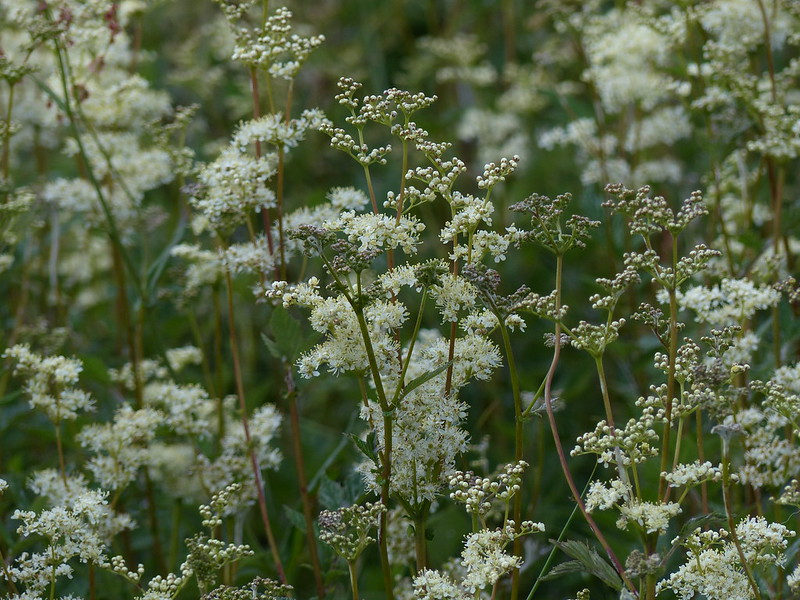
Meadowsweet.
I noticed that a lot of the Meadowsweet was infected with a grey rust, or what I assume is a rust, and when I paused to take a closer look, I saw this tiny insect…

I think that this is a Common Froghopper, a ‘spectacularly variable species, with many dramatically different colour forms’ (Source). Froghoppers are also the species which produce Cuckoospit, a protective froth which the nymph lives inside. Coincidentally, I found another Froghopper a few days after this walk on the keyboard of a laptop at work and I can attest to their athletic prowess – they can really jump!
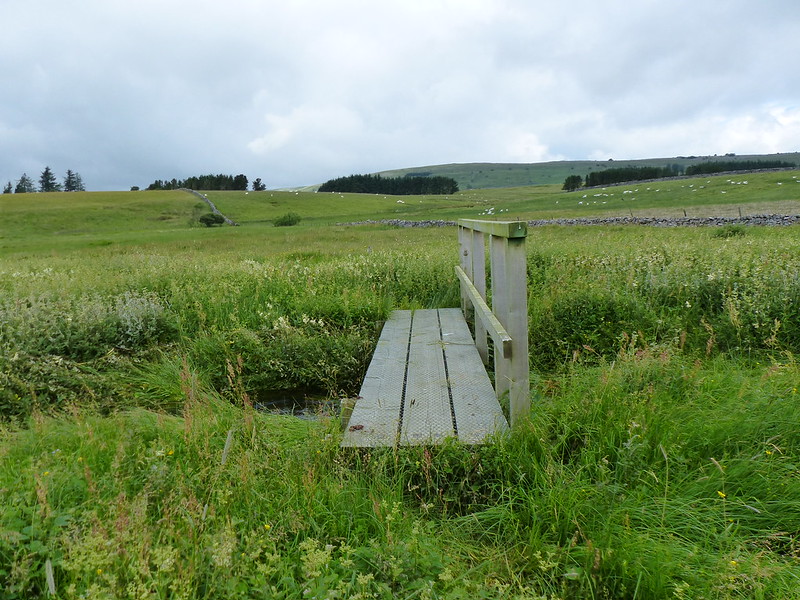
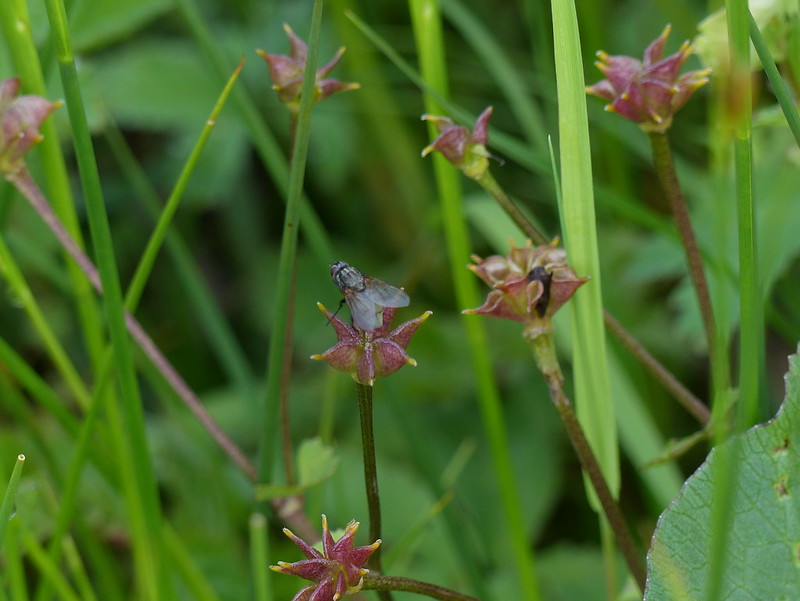
Marsh Cinquefoil seed-heads?
In amongst the tall plants, often almost hidden, there were numerous…
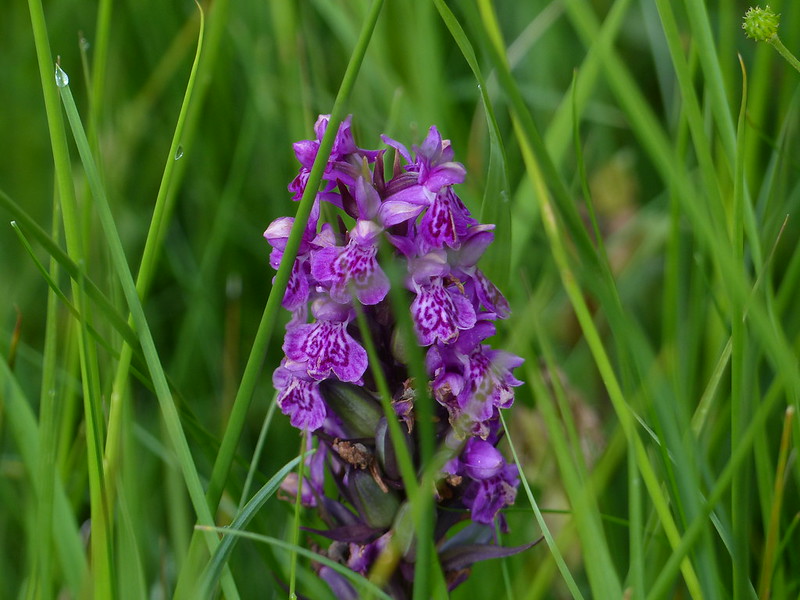
…Northern Marsh Orchids. Many were slightly browned and looked like they might be ‘going over’, but my Orchid book suggests that they flower from mid-June right through July.

A yellow daisy – possibly Rough Hawkbit.
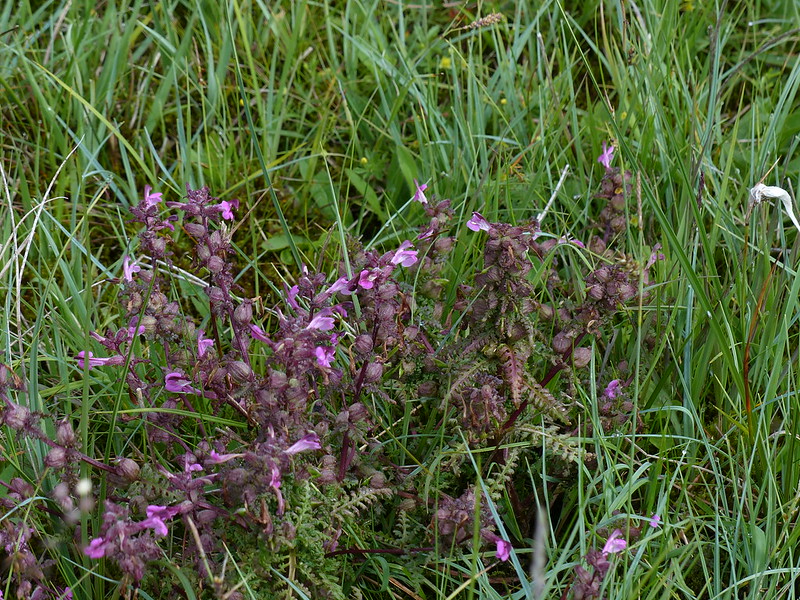
Marsh Lousewort – present in huge numbers where the taller plants weren’t so dominant.

Bird’s-eye Primrose.
There are also several areas with much less verdant growth, apparently ‘Limestone flushes’. Here there were lots of…
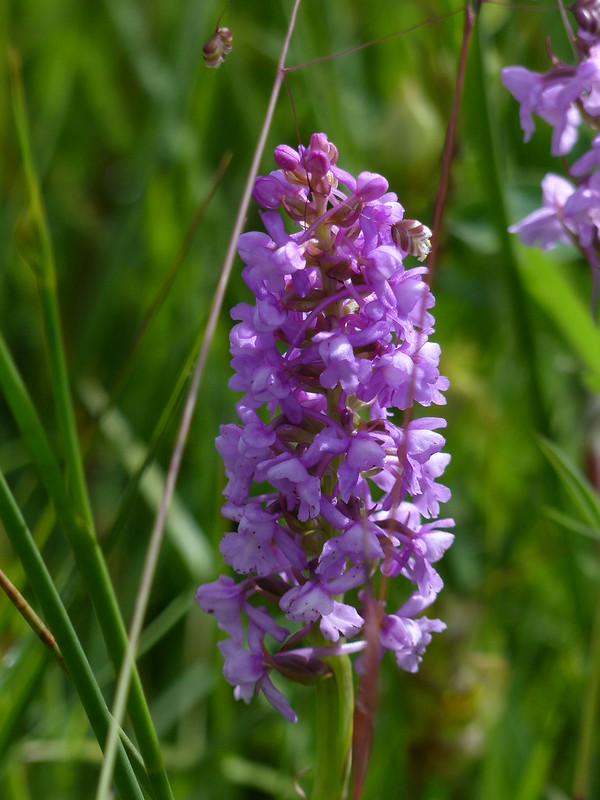
….Fragrant Orchids. I’ve not seen these before, but have discovered that they can be found much closer to home, so shall be on the look out for them. I’ve read that they smell of carnations, but I can’t say that I noticed that. Hopefully, I’ll have another chance to sample that scent sometime soon.
This…
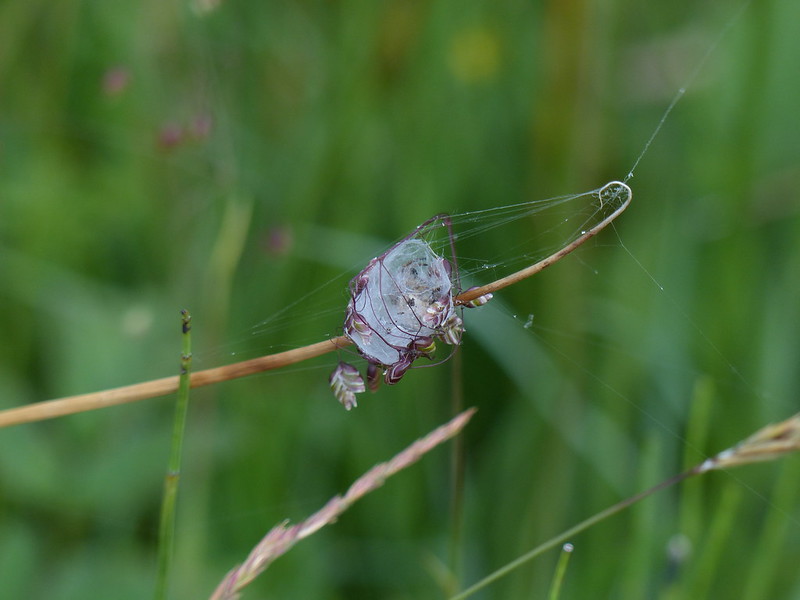
…was the first of several similar tiny, delicate structures I saw. I think that you can just about make out a couple of spider legs inside, suggesting that the architect is lurking within. It seems to have woven a stem of Quaking Grass into it’s web. There were also long strands of gossamer acting like guy-ropes, bending the grass stem over and anchoring the structure to the ground below. I would be fascinated to know more precisely what this is, if anyone has any idea?
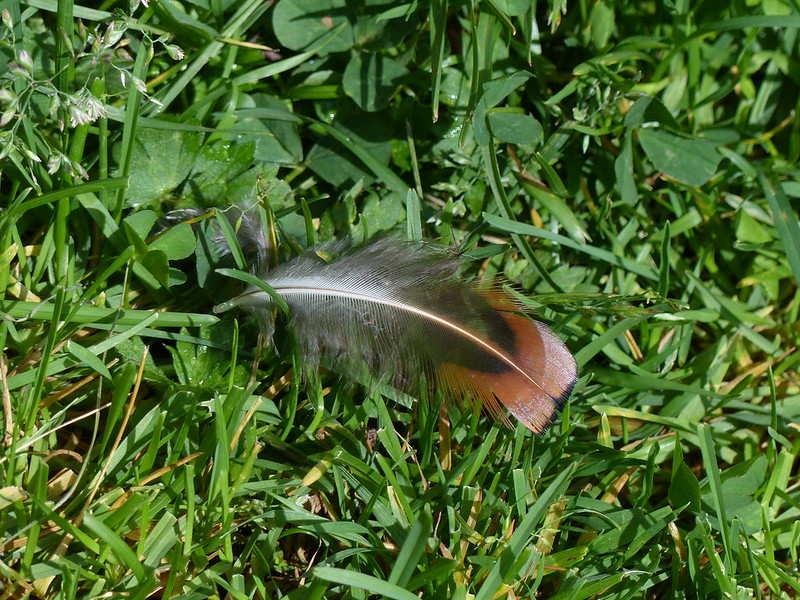
As I left the reserve, the sun came out. I was thinking that it was a shame that I hadn’t seen any butterflies yet, when…

Green-veined White?
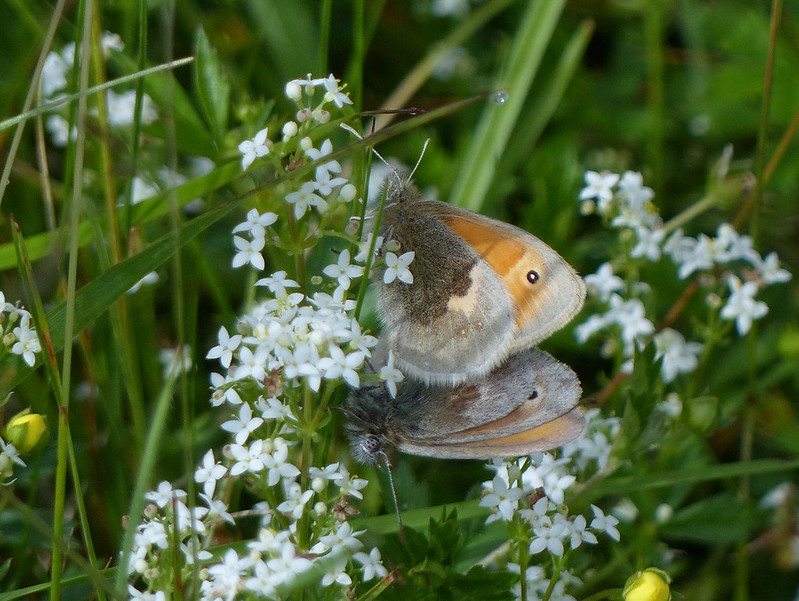
A pair of Small Heath.

A Chimney Sweeper moth.
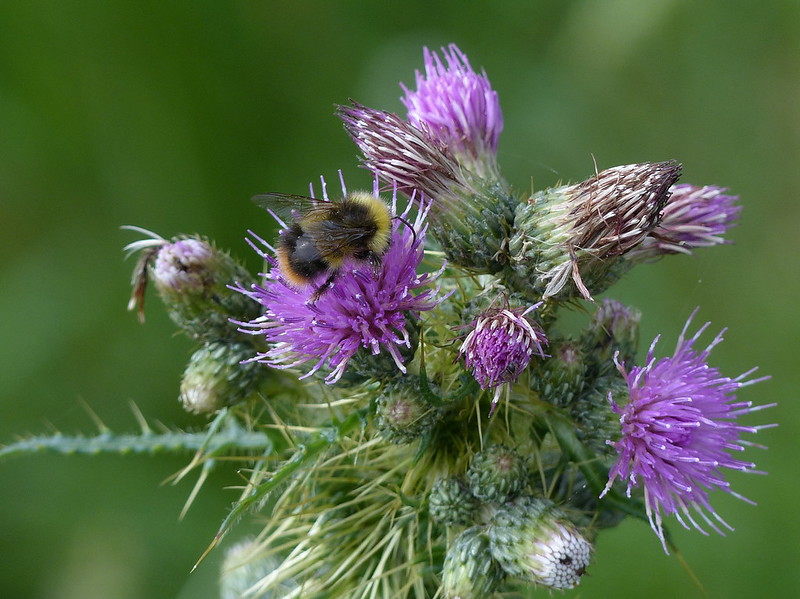
Early Bumblebee.
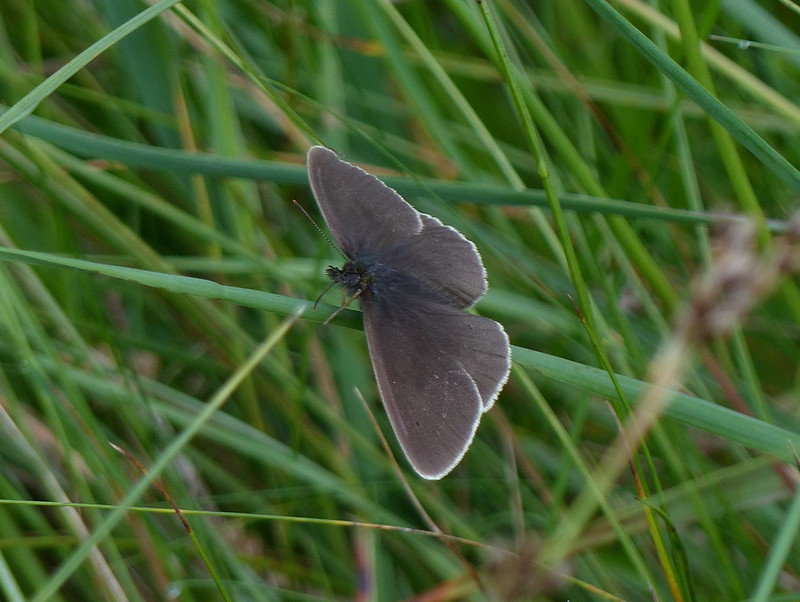
Ringlet.
Ringlets, in particular, were suddenly legion, fluttering up from under my feet at almost every step.
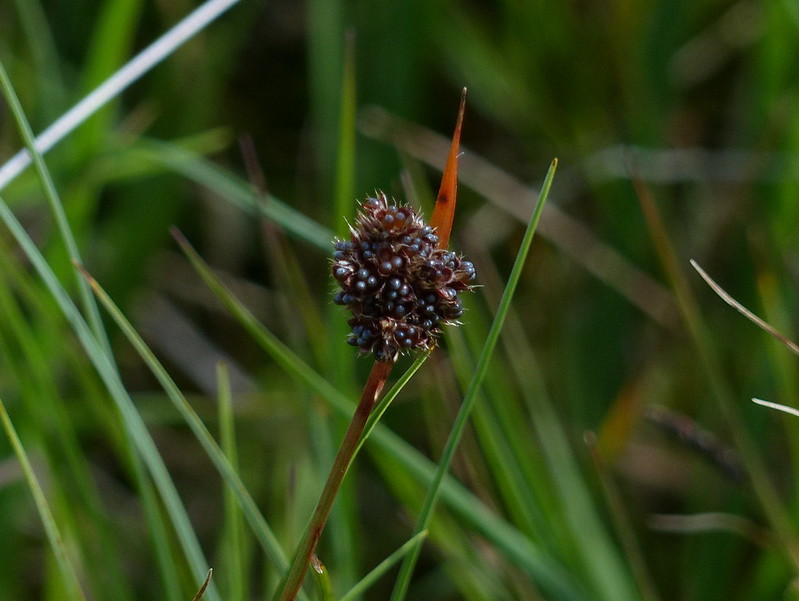
A rush or sedge? I can’t find anything in my guides which looks this much like a blackberry.
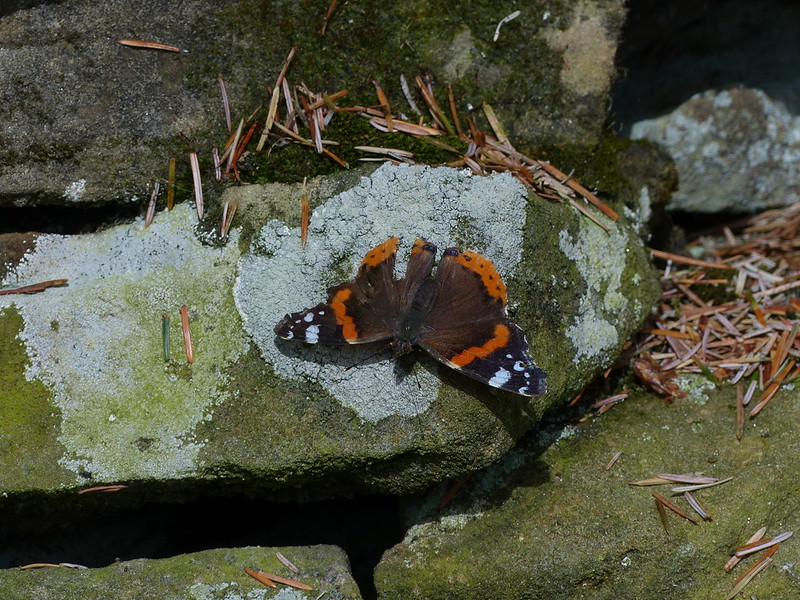
Red Admirals seem to like basking on drystone walls.


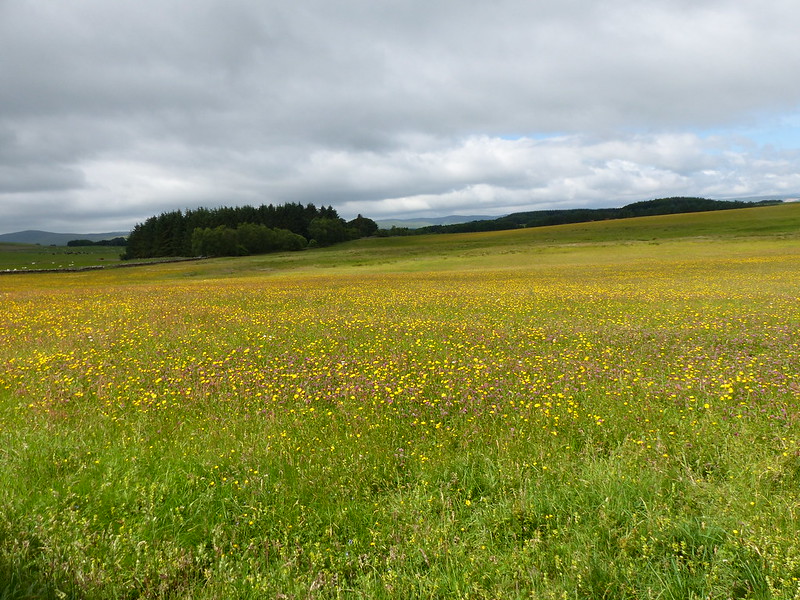
The next meadow which Tarn Sike runs through has clearly been ‘improved’ to some extent, but was packed with wildflowers.
I returned to my car, grabbed my rucksack and set-off again, taking the path which heads across Ravenstonedale Moor and which is parts of the Dales High Way, a long distance walk which, on further investigation, I find very appealing.
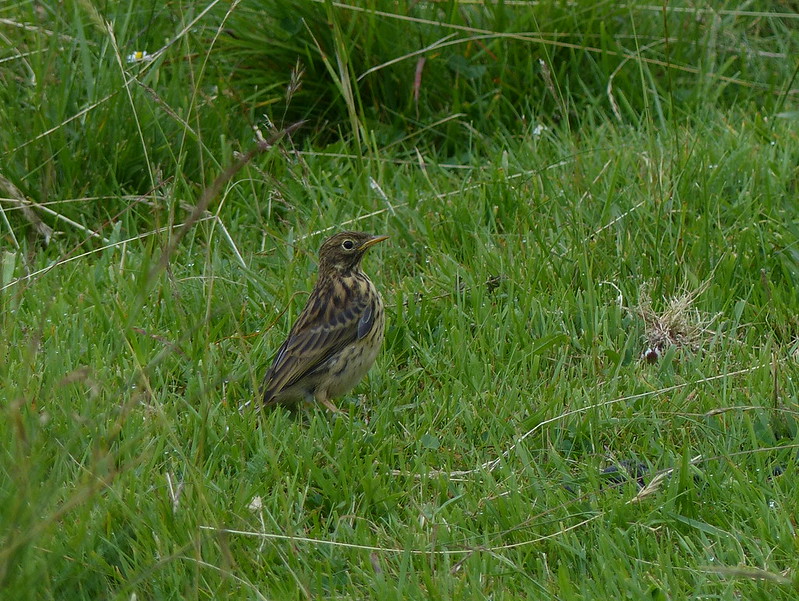
Meadow Pipit.
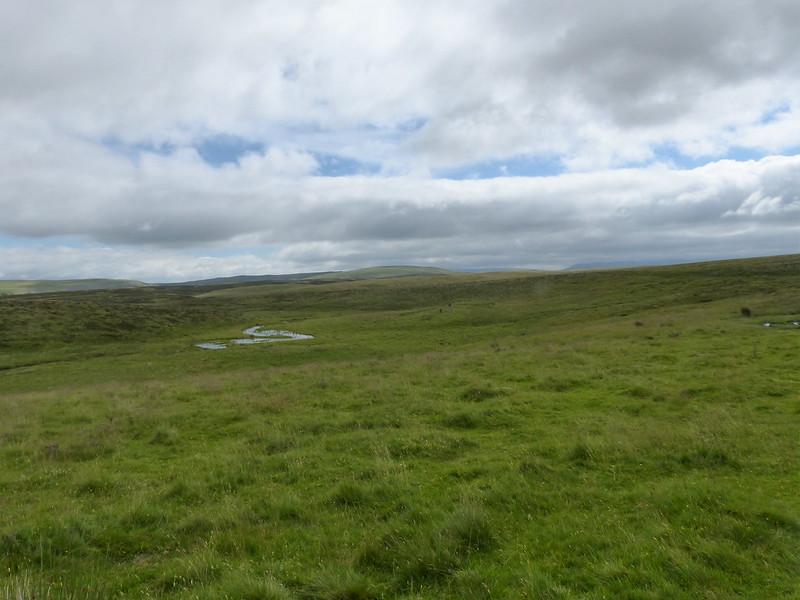
Tarn Sike and Ravenstonedale Moor.

Distant view of Sunbiggin Tarn.
This area is very quiet, even on a sunny, summer Saturday. The only other walker I met all day followed me across the moor here. However, as I was trying to photograph this…

…Skylark, the peace was shattered by an unexpected racket.
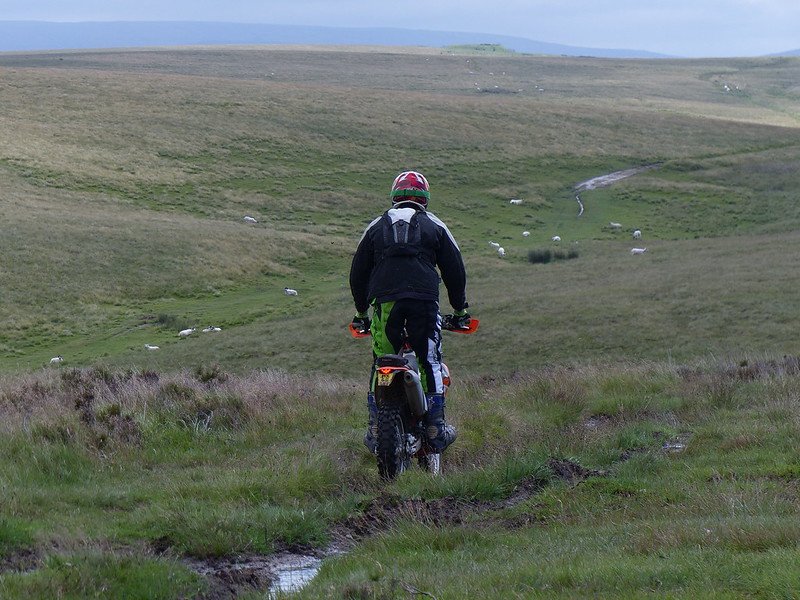
I’d seen a sign by the road urging ‘Motor Vehicle Users’ to show restraint and wondered what it meant. Now I knew. This is a bridleway and……I’ll let you add your own rant.
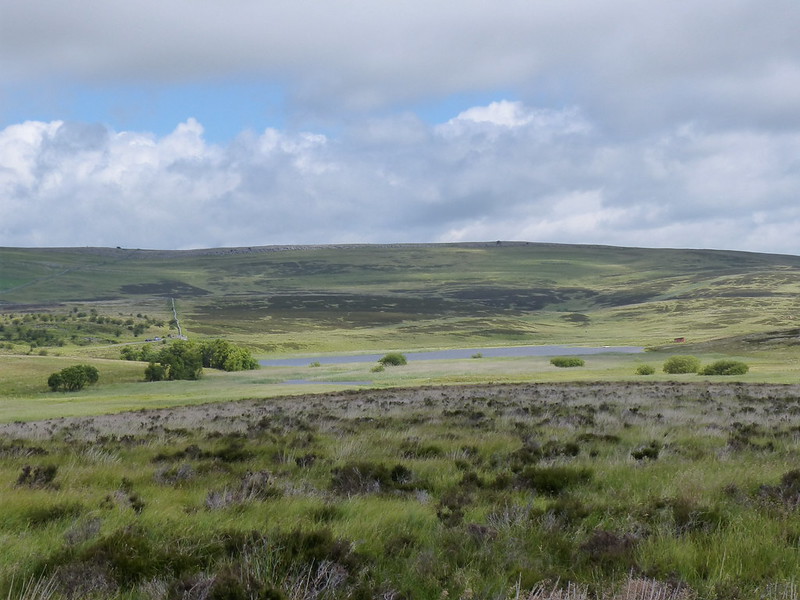
Sunbiggin Tarn.

Looking back to Great Asby Scar.
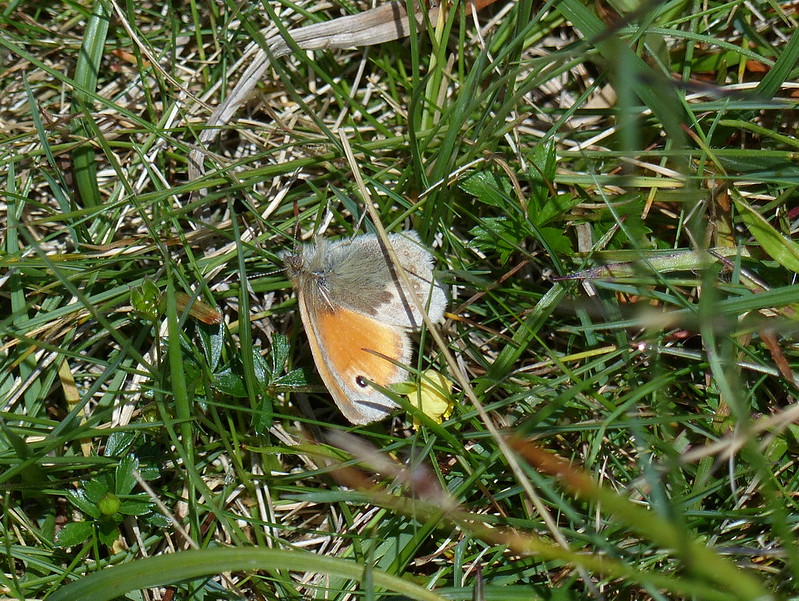
I saw numerous Small Heath butterflies, through most of the day. It was quite breezy and I noticed that, once they had landed, they would almost lie flat on the ground, presumably to get out of that wind.

The walking is pretty easy-going, over, admittedly quite feature-less moorland, but fortunately, there were lots of small birds about to offer diversion…

Skylark, crest raised in alarm.
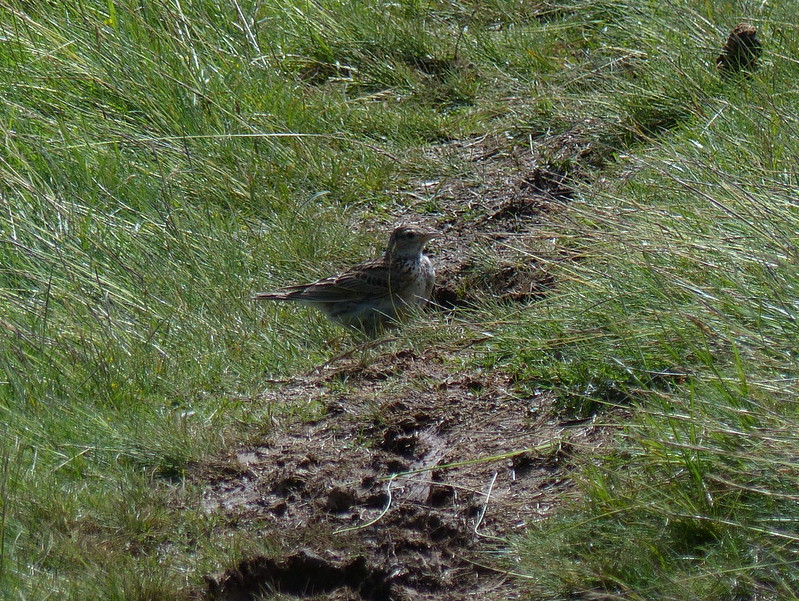
Skylark, crest down again.
I took lots and lots of photos of LBJs. Over the years, I’ve spent a good deal of time comparing such photos with the illustrations in my Collins Bird Guide and trying to decide whether I’d photographed a Meadow Pipit or a Skylark. After this walk, on which I’m confident I photographed both, I’m inclined to think that all of my previous photos may have been Meadow Pipits. In flight the song and behaviour of the two species is obviously different, but on the ground I’ve always been unsure. My friend, The Proper Birder, tells me that Skylarks are larger and bulkier, but without seeing the two side-by-side that’s hard to differentiation. Of course, the Skylark has a crest, but crests aren’t always raised. I can see here that the Skylark’s chest is paler and much less streaked and that it has a heavier beak. Will this mean that I no longer agonise over identifying moorland LBJs? Probably not.

Great Ewe Fell.
The path took me past the enclosed field seen in the photo above. Curiously, the air here was full of Swallows, which had been absent until now. Did the relatively high concentration of sheep in the fold attract flies and mean rich-pickings for the hirundines?
I’d been climbing, almost imperceptibly, and now the views were beginning to open out.

Gracetemoor and the Northern Howgills, where the Lune rises.
A pair of Buzzards were circling above the stand of trees by Gracetemoor (an unusual name for a farm!).
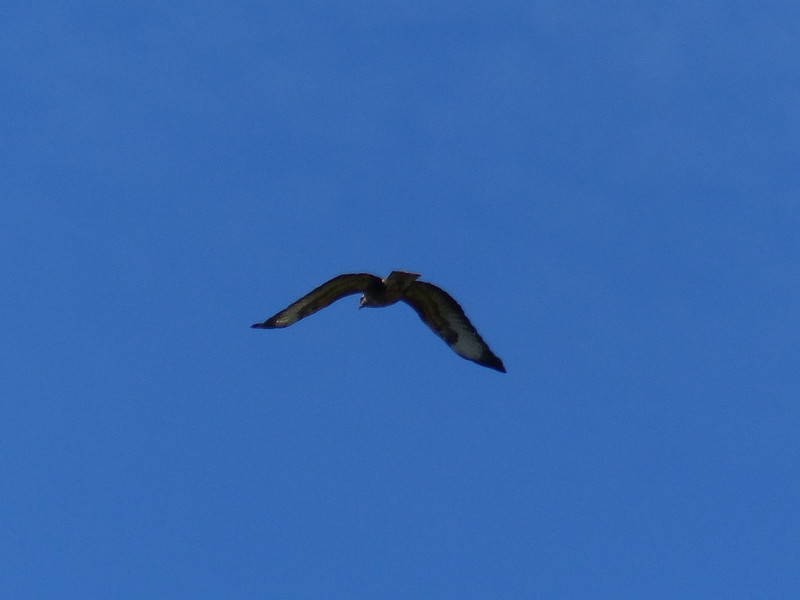
I picked up the path on the far side of the road and followed it as far as the first gate. By the wall, there was a large, spectacular thistle…

…I think, Musk Thistle. Easy to overlook plants like thistles, but the flowers on this are really quite stunning…
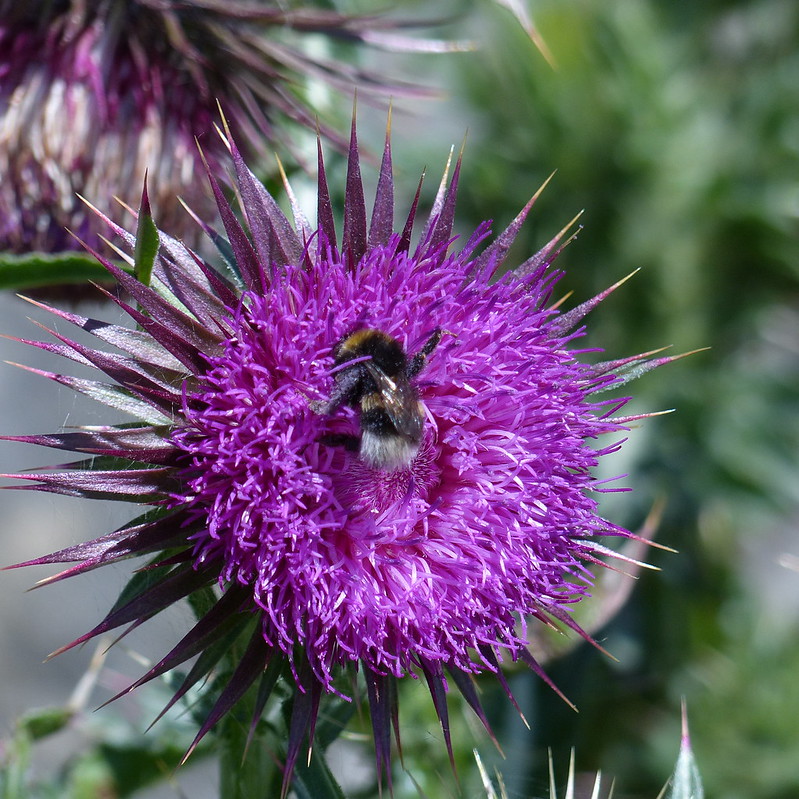
Attractive to bumblebees too!
I left the path here and climbed up to Great Ewe Fell. I was surprised to see toadstools fruiting at this time of year, but saw many more from that point on…
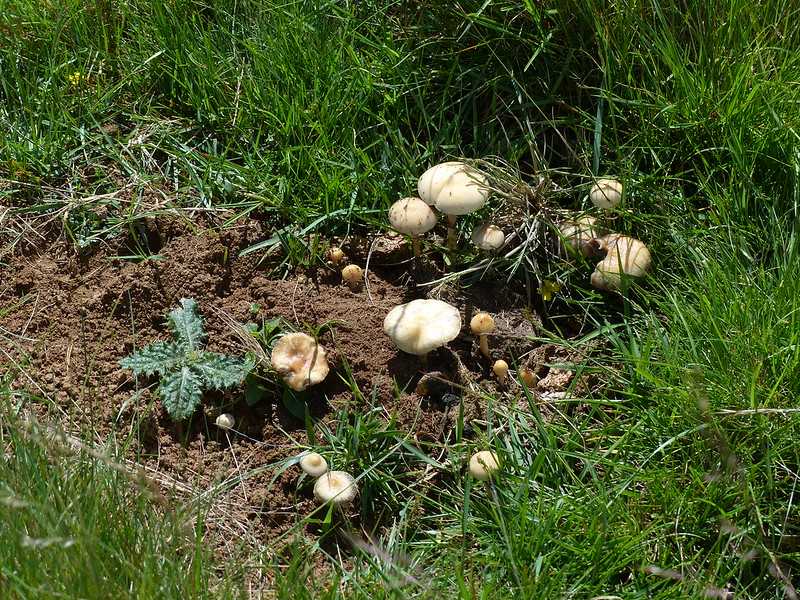
As soon as I started to gain some height, the views were magnificent.

Northern Howgills again.

Bents Farm and Wild Boar Fell

Wild Boar Fell and Northern Howgills panorama – click to see larger version. (Same applies to all other photos).
Just short of the top of Great Ewe Fell there was a small cairn – as much excuse as I needed to stop and drink in the views again.


Shortly beyond, another cairn, this one at least in the vicinity of the actual top and a new view towards the Northern Pennines and the Upper Eden Valley.
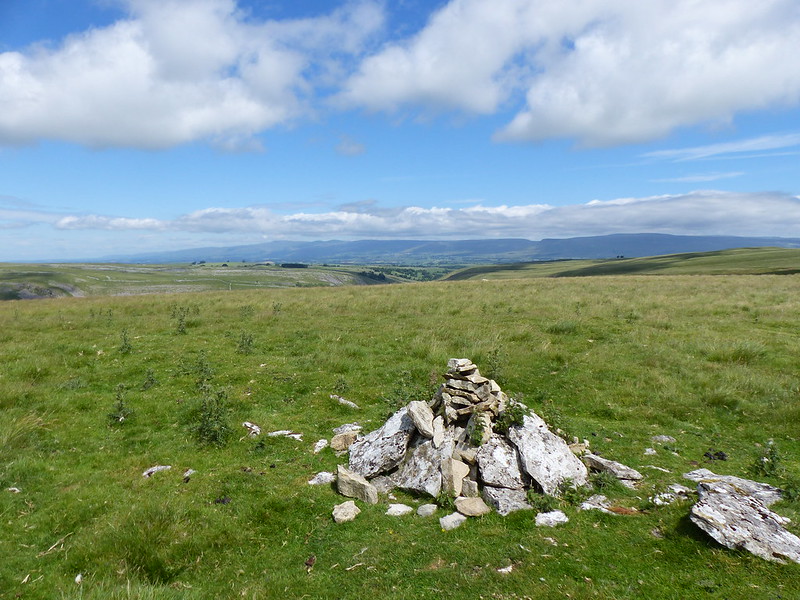
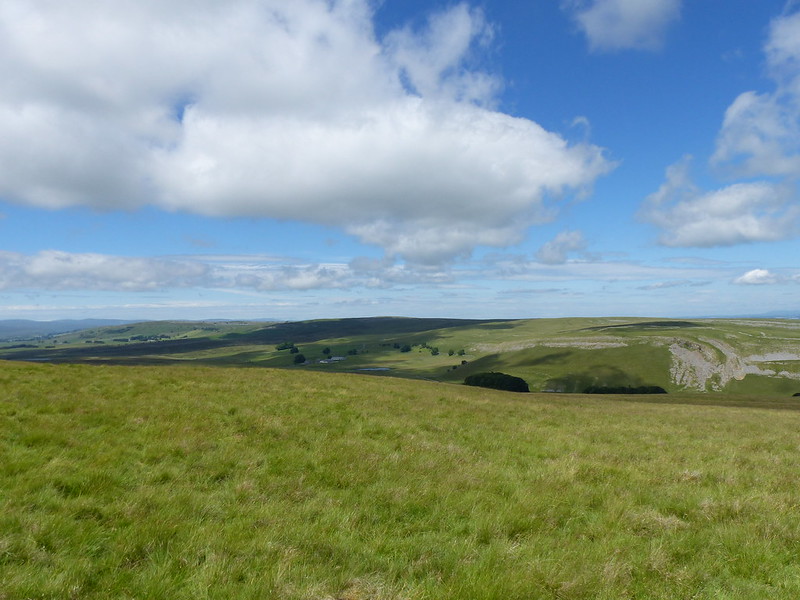
Looking along the limestone hills toward Great Asby Scar.
I suppose I might have climbed from here onto the higher Nettle Hill, but I had a more attractive target in mind…
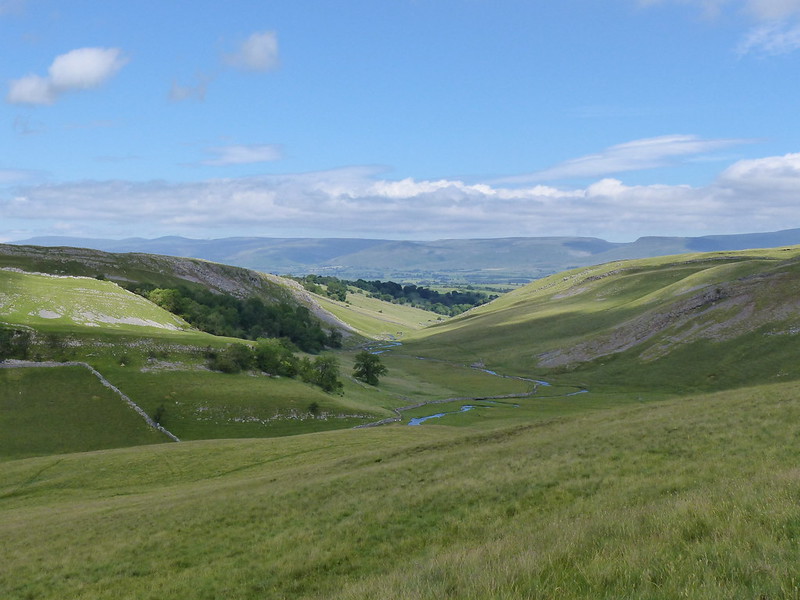
…the Potts Valley. I’ve often looked at this spot on the map and thought it looked like it would be delectable.
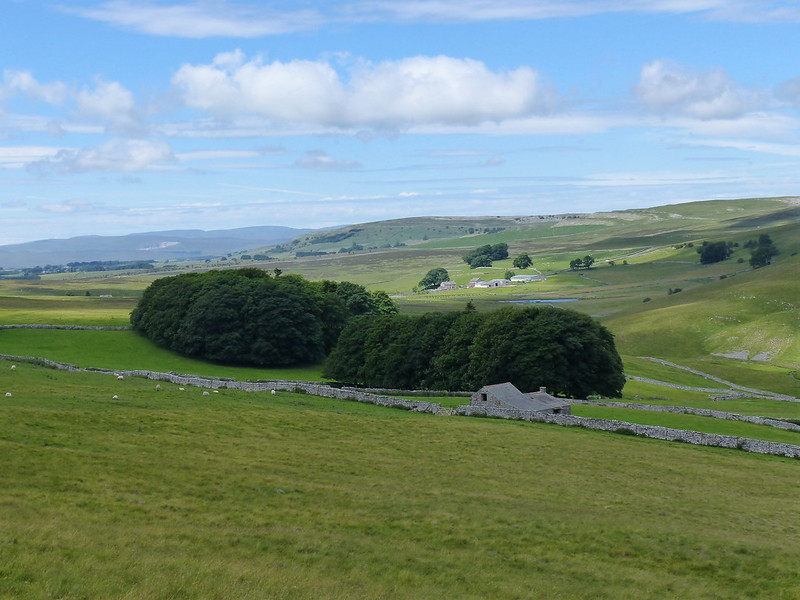
Even the area of six enclosed fields and its two stands of mature trees was attractive. I was intrigued by the building, which seems too remote to be more than a barn, but which does have a chimney and seems to be in an excellent state of repair.

Juvenile Wheatear. (I think).
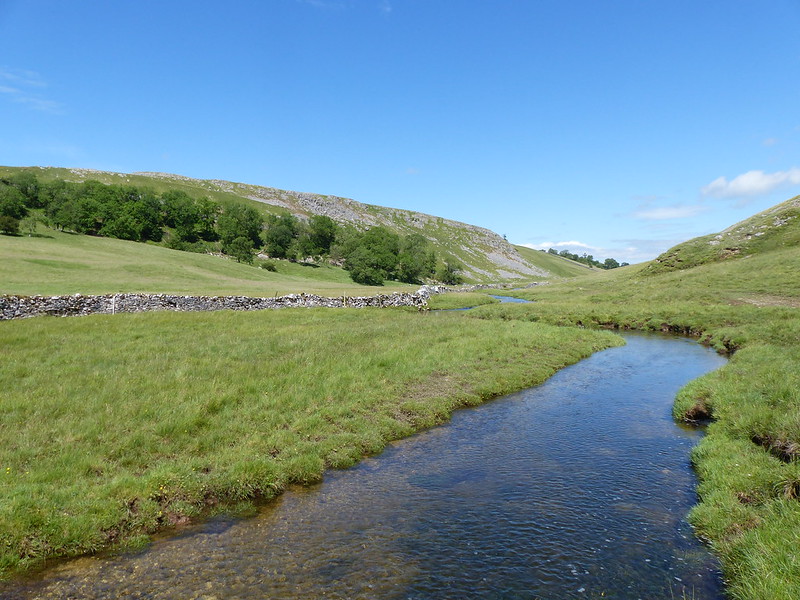
Potts Beck.
Now, I’ve strayed off my Lune Catchment exploration a little here, over the watershed, since Potts Beck is a feeder of the Eden, transforming into Water Houses Beck and then Helm Beck before it gets there.
Somewhere hereabouts I also crossed some other kind of border. Before Great Ewe Fell, I’d passed numerous sink-holes, enough to suggest that I was in limestone country, but after Ewe Fell I started to encounter exposed scars, crags, clints and grykes. The change seemed to influence the relative prevalence of birds – where pipits and larks had dominated, now there seemed to be Wheatears in every direction I looked, particularly along the dry-stone wall which ran alongside Potts Beck.
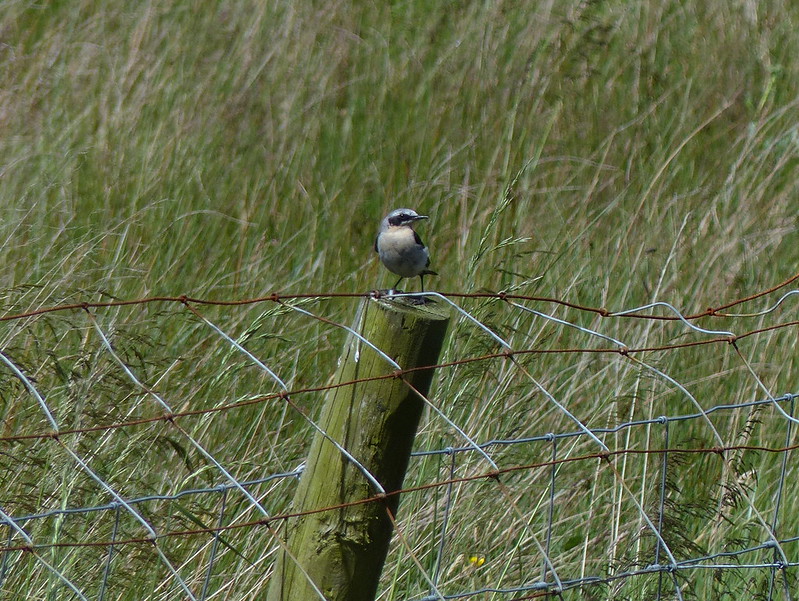
I never really had a firm plan for the day, but when I’d looked at the map I’d thought that I would either climb directly out of the Potts Valley and onto Little Asby Scar, or would continue along the stream and take the field paths into Little Asby before heading onto the scar. The second route was definitely Plan B, held in reserve in case it proved difficult to get across the wall in the valley bottom. In the event, there was a ladder stile, but I hadn’t considered the possibility that the Potts Beck itself might be hard to cross. Fortunately, I found a spot where a couple of small islands in the stream made it possible to hop across dry-shod relatively easily.

Once across, I took a slender tread which contoured back towards the top fringe of Armaside Wood. I watched a Buzzard, I think a tiercel, swooping back and forth across the valley. As I approached the trees, he swept over the top of the canopy, seemingly to take a closer look at me. A similar thing happened when I was walking in the valley of the Wenning a few weeks ago, although on that occasion the female was also present and both birds were audibly vexed by my presence. Ever since my close encounter with a Buzzard a few years ago, I’ve been a bit wary of them in the summer and so decided to turn more steeply uphill away from the trees and any potential nest.
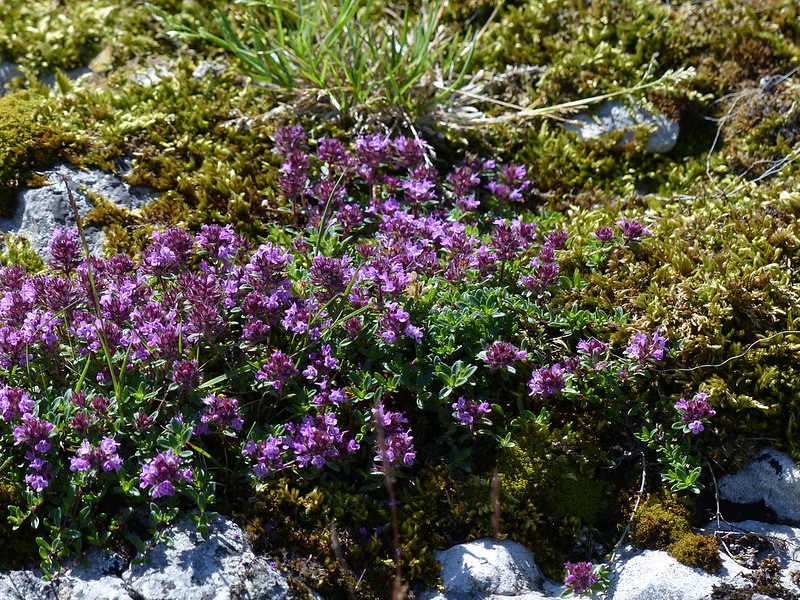
Wild Thyme.
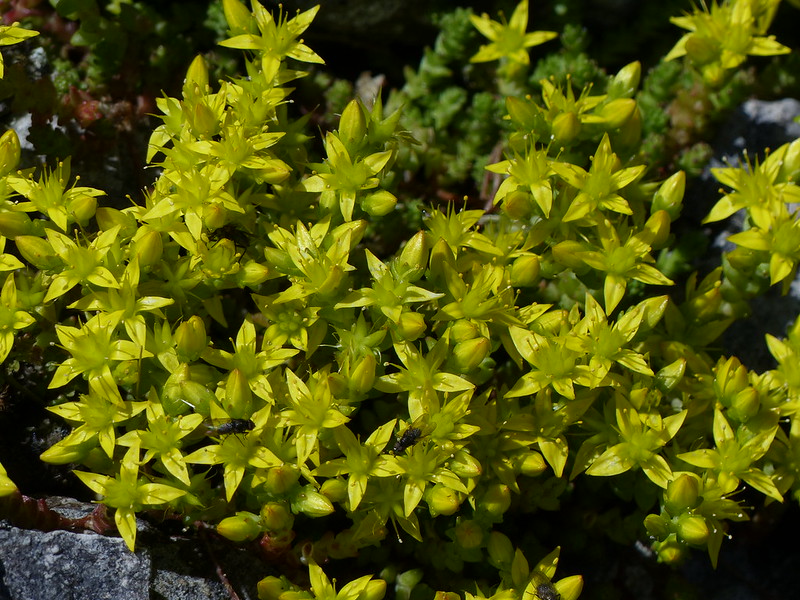
Biting Stonecrop.
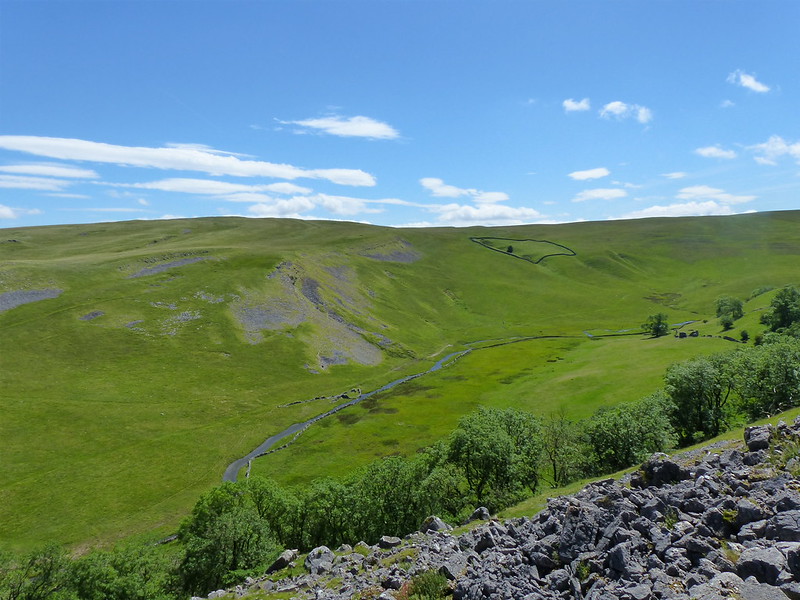
Armaside Wood and the Potts Valley.

Little Asby Scar.

Another Wheatear.
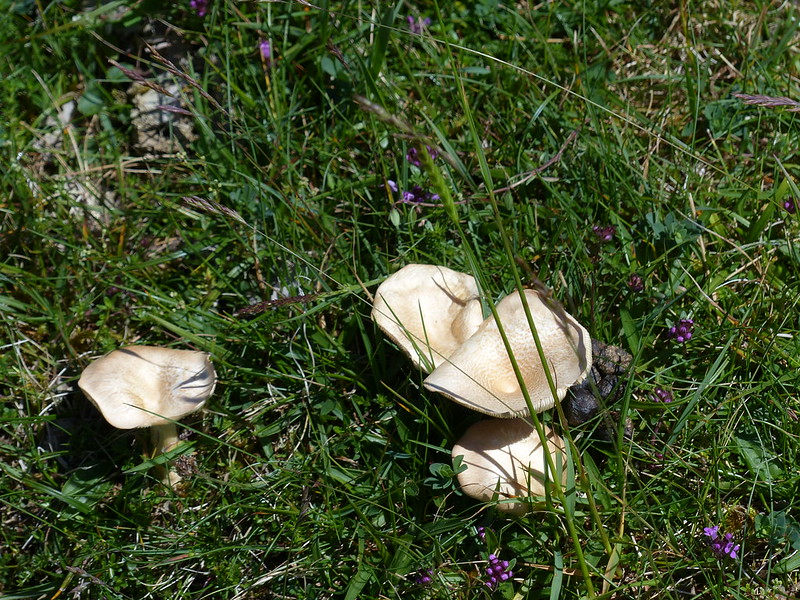
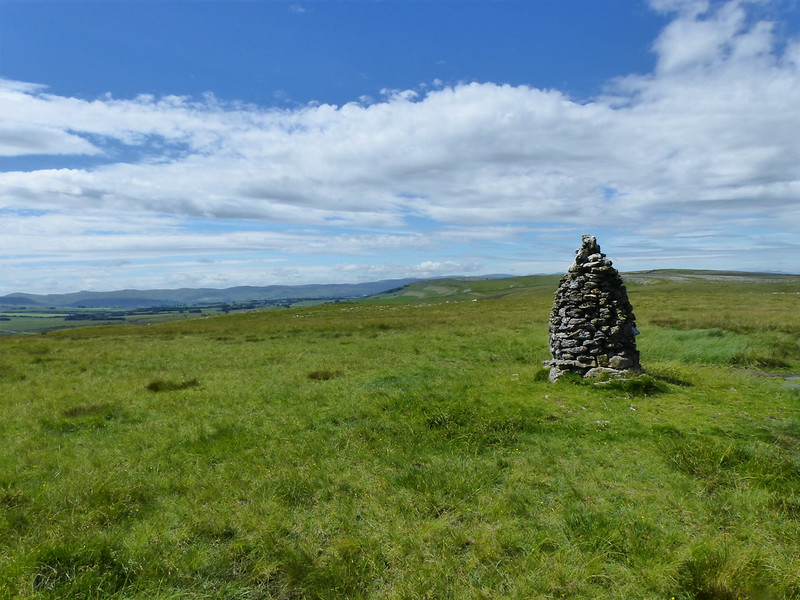
I stopped by this cairn and embarked on a doomed attempt to make a decent cup of tea. The wind had increased considerably and my stove didn’t function well. This is not the cairn marked on the map, but must be close to the high-point marked with a spot-height of 356m.

Sunbiggin Tarn again and the eastern fringe of the Lake District hills.
Dropping down towards the minor road, I watched a large and fleet-footed Hare race away. I’ve seen Hares several times this year, but am never fast enough to get even close to taking a photo.
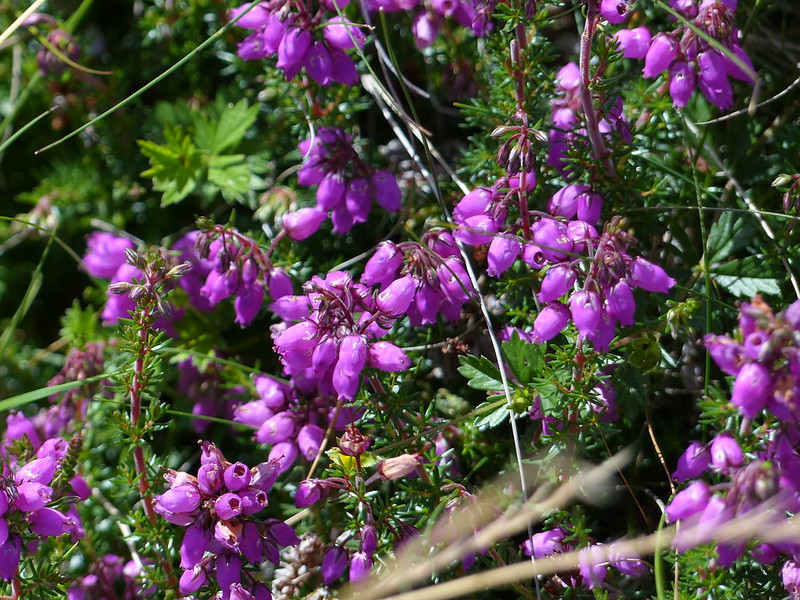
Bell Heather.
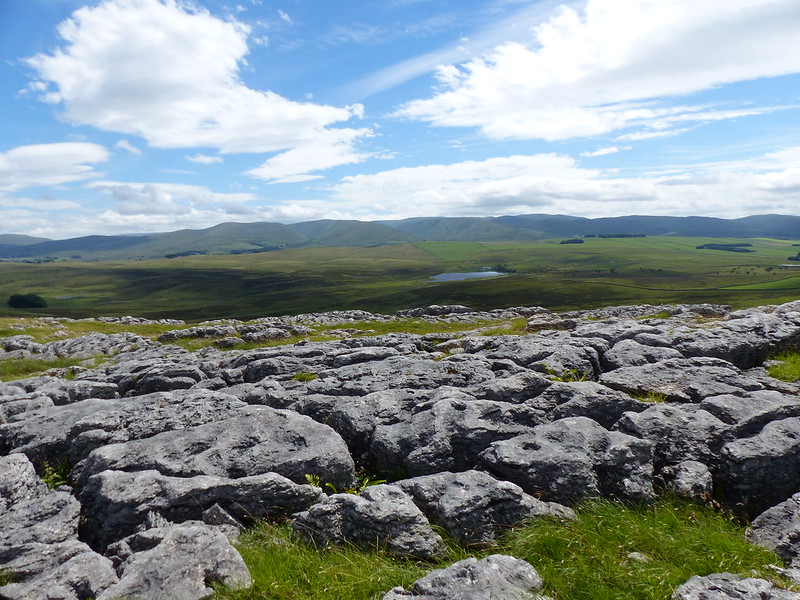
Sunbiggin Tarn from Grange Scar.
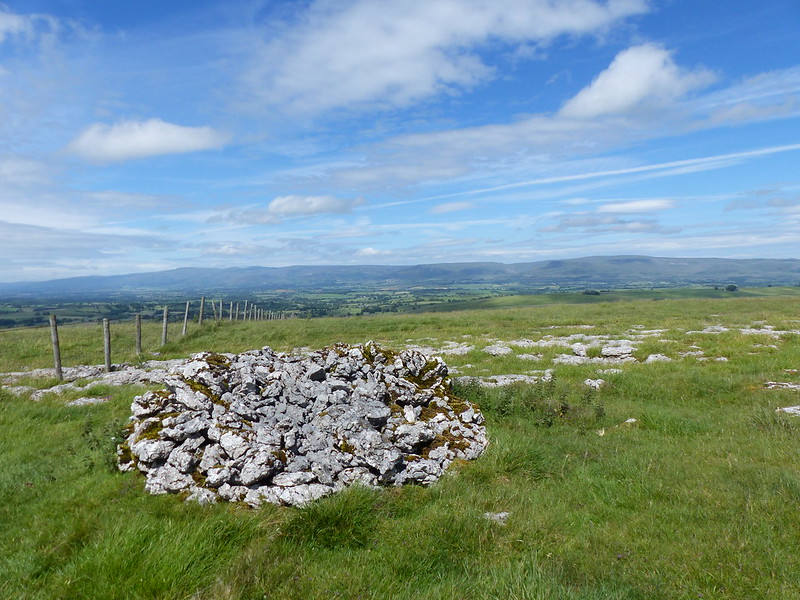
Eden Valley and Northern Pennines from north of Great Kinmond.
I picked up the Dales High Way again to take me down towards Tarn Moor and the car. I needed to get home, but even if I hadn’t the weather wasn’t looking promising for continuing the walk on to Great Asby Scar. In addition to the strengthening wind, high frets of cirrus…
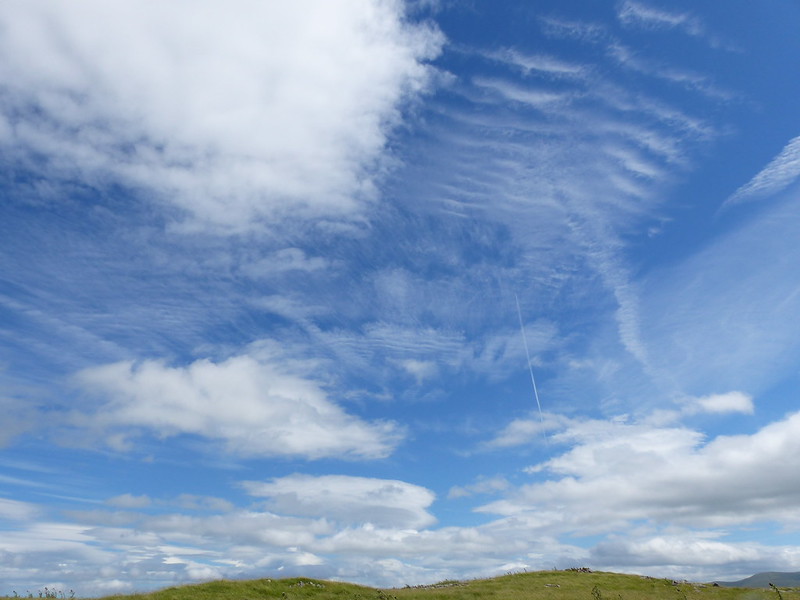
…and lower, wind-smoothed clouds…
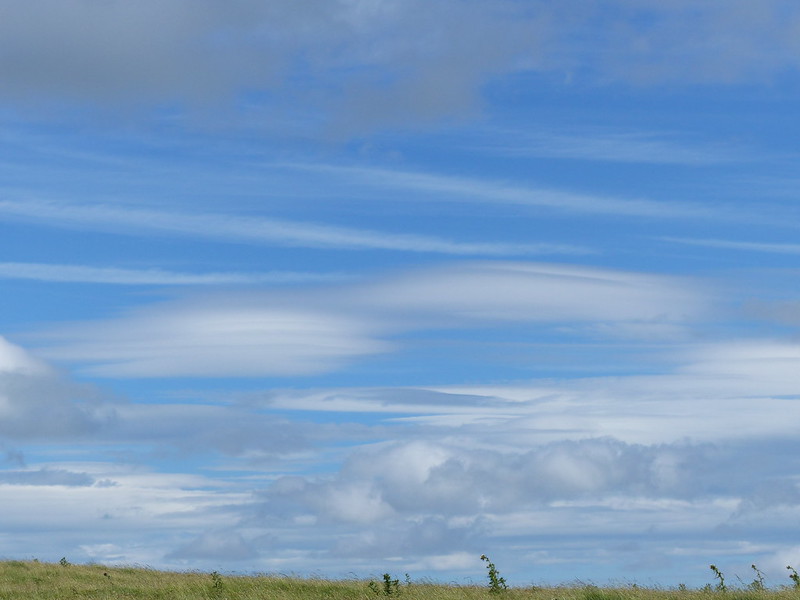
..not to mention the dark threatening masses advancing from the west, all presaged a downturn in the weather.

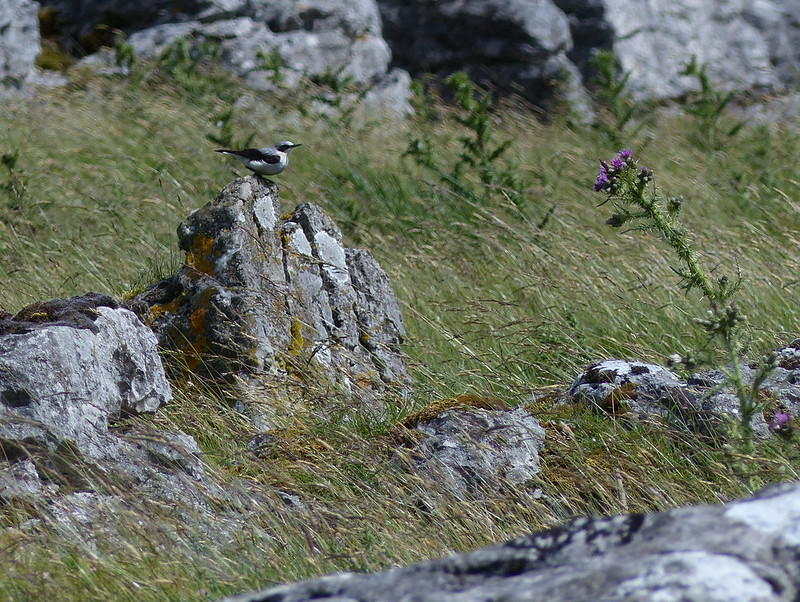
Wheatear.

Skylark with huge grub.
Things had changed rapidly and the skies were now an ominous grey. Still time, however, for a pair of Curlews to circle me making their distinctive calls. I’m convinced this behaviour must be to deflect attention from a nest – several times now this year, Curlews have flown around me even as I’ve continued to walk along a path.
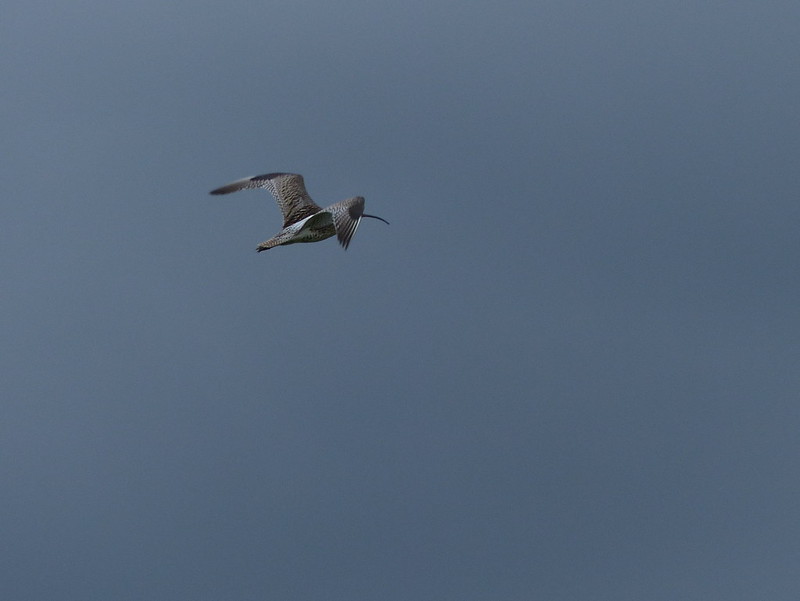
The light was far from ideal, so I’m reasonably pleased with my photos.
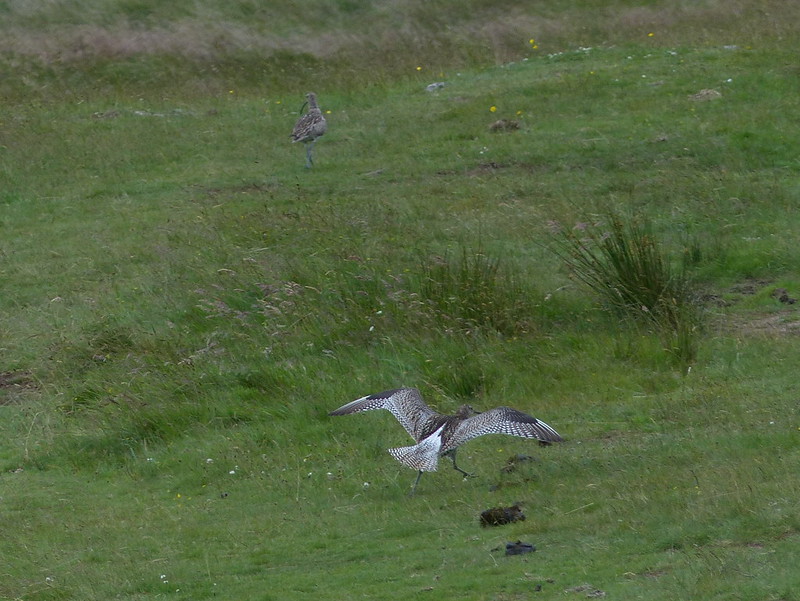

Down where the path met the road, and then along the road verges, the ground was very wet and there was another fine display of flowers. Due to the, by now, very strong wind, it was hard to get pictures, but these…
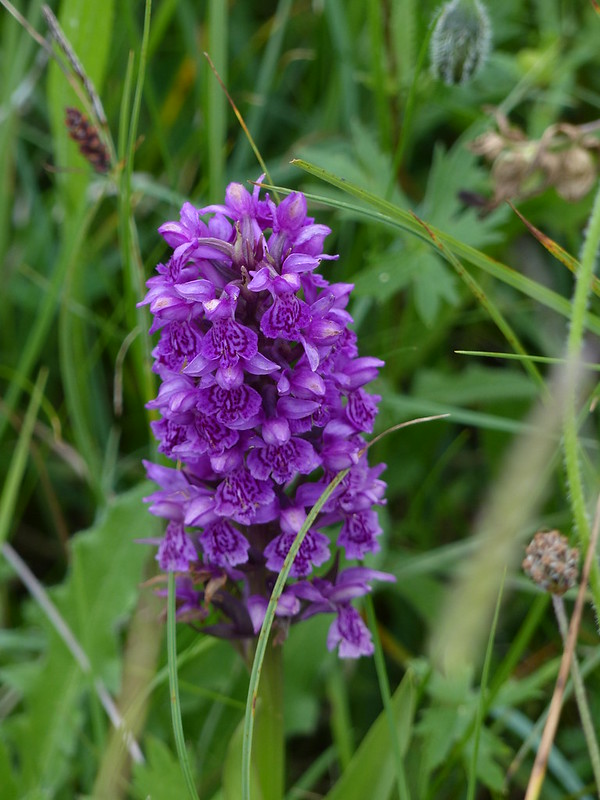
…Northern Marsh Orchids came out less blurred than the others. I included this second because it seemed much darker then the others I saw that day…


This was another area which I’ve been meaning to visit for quite some time, although I always thought that when I came I would climb Great Asby Scar – that will have to wait for another trip. Poring over my maps to trace the various sources of the Lune has spurred me on to finally check out this area and the Lune Catchment has come up trumps yet again.

